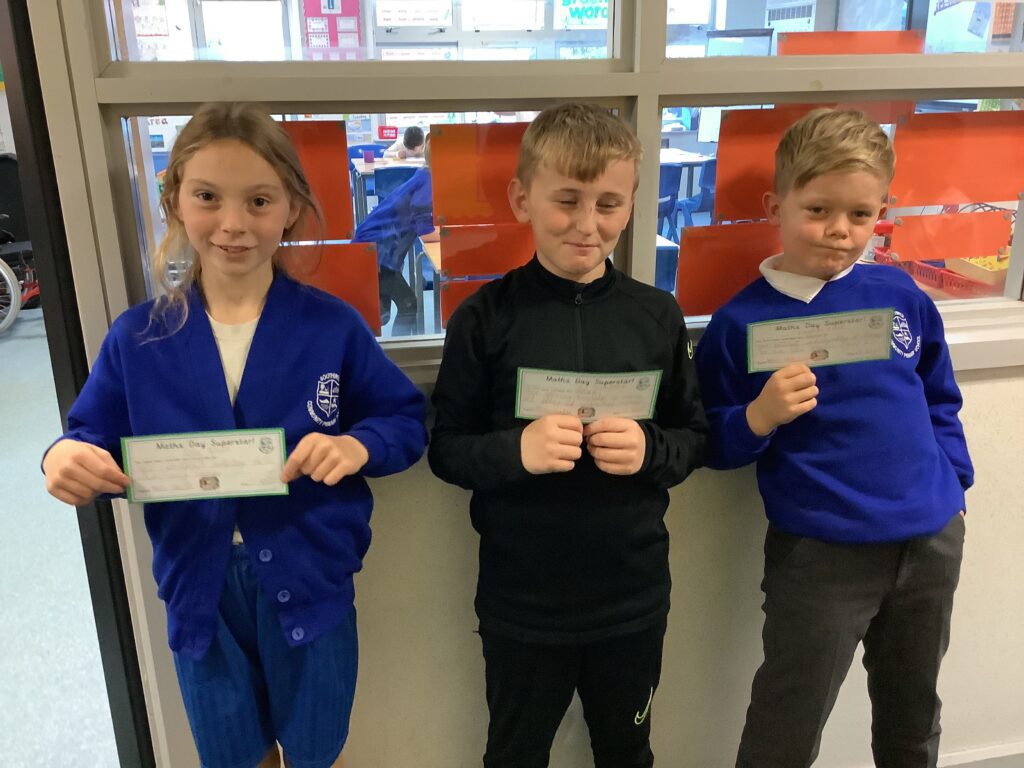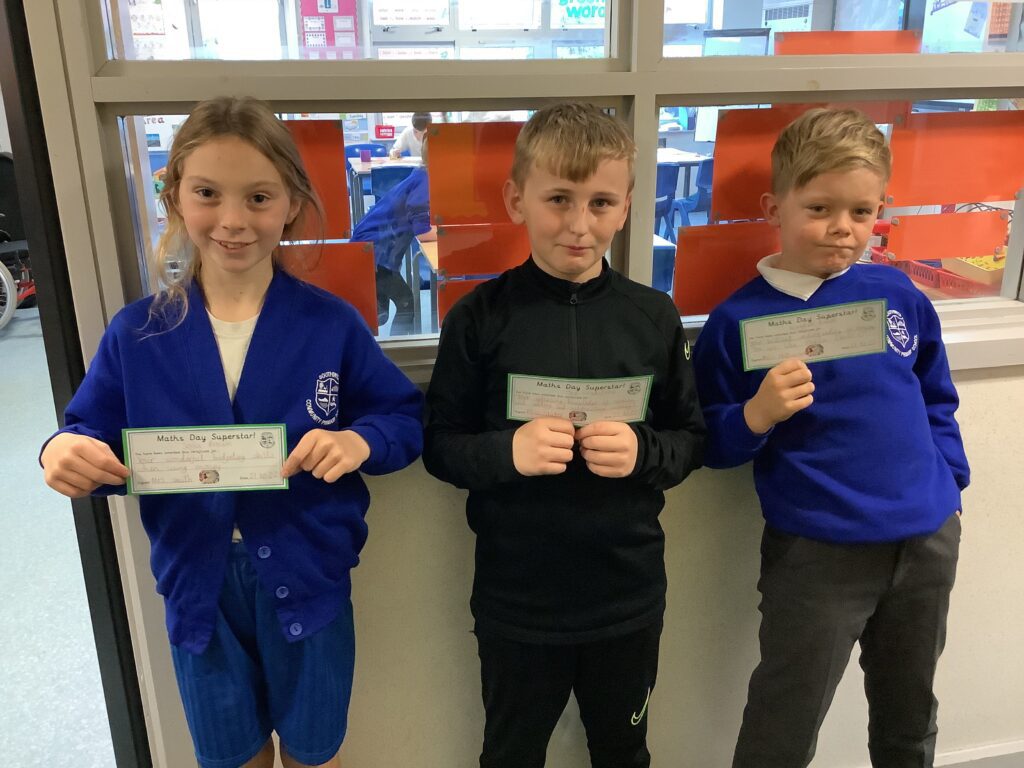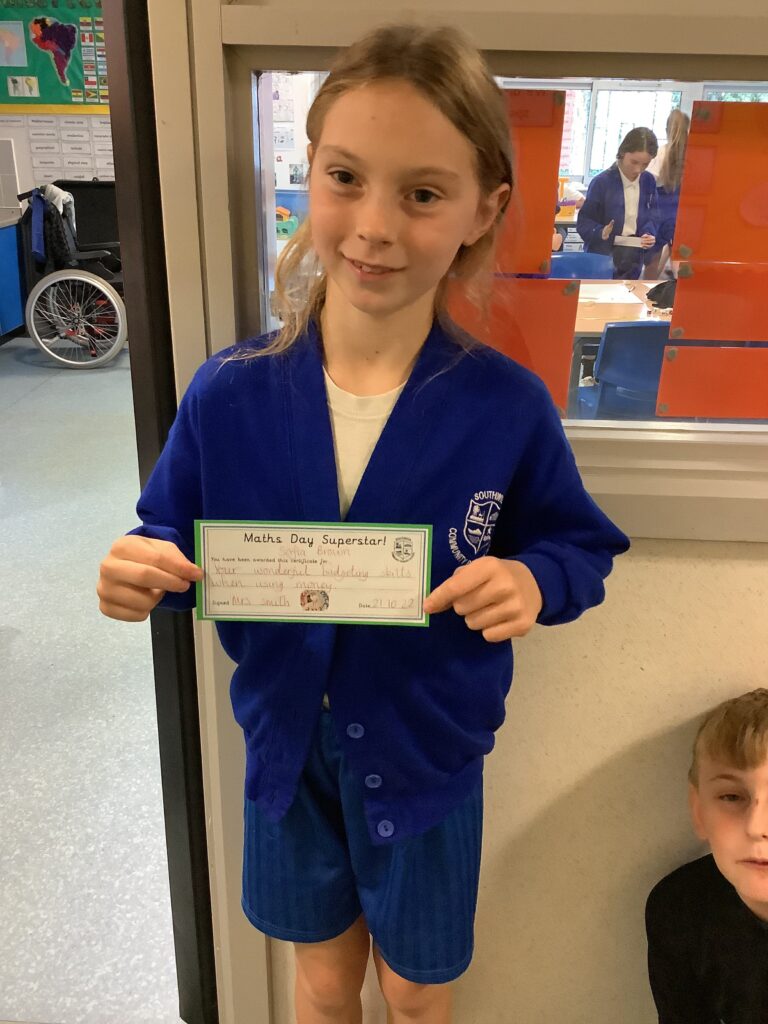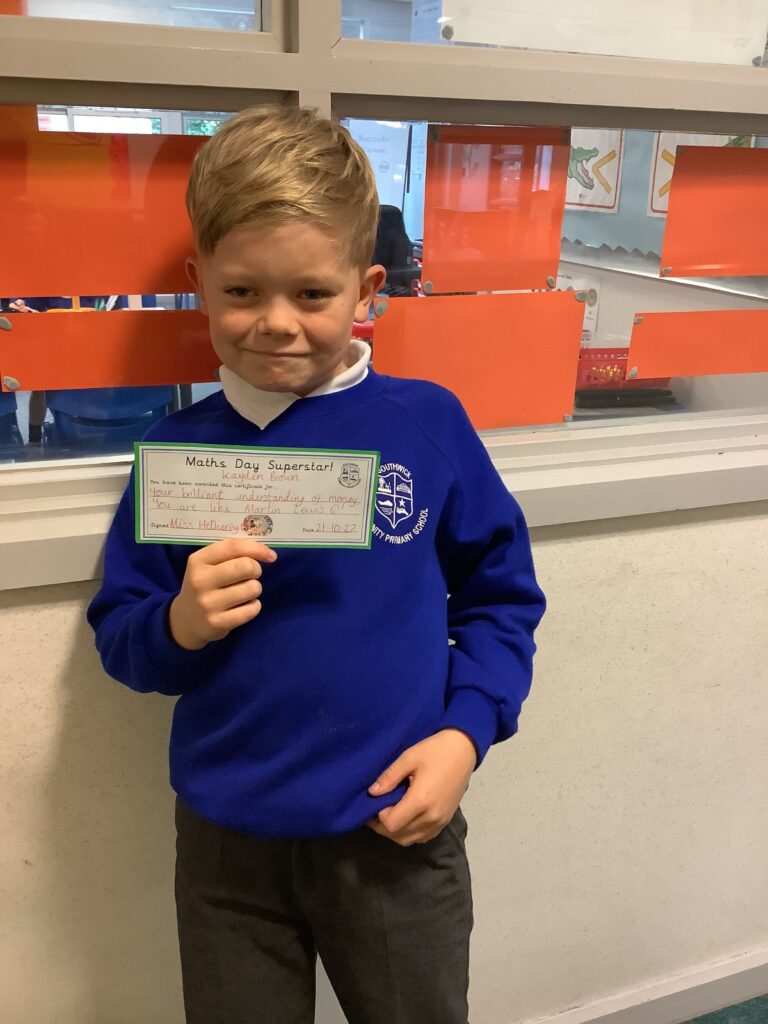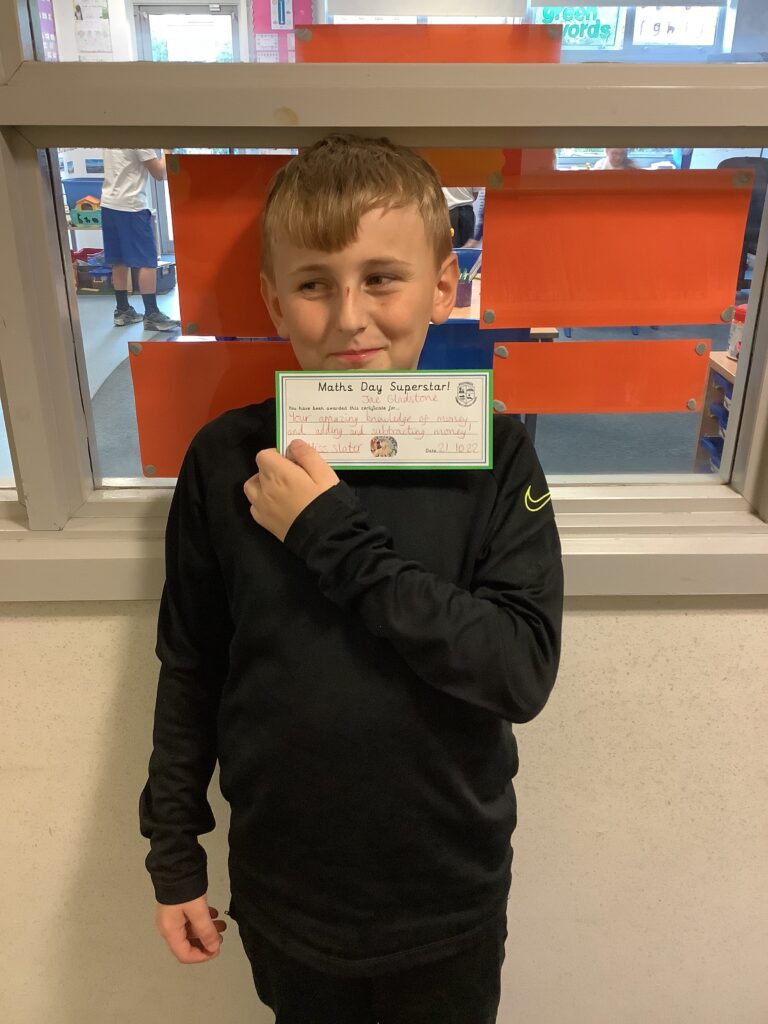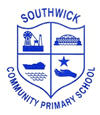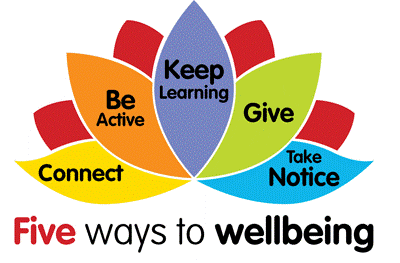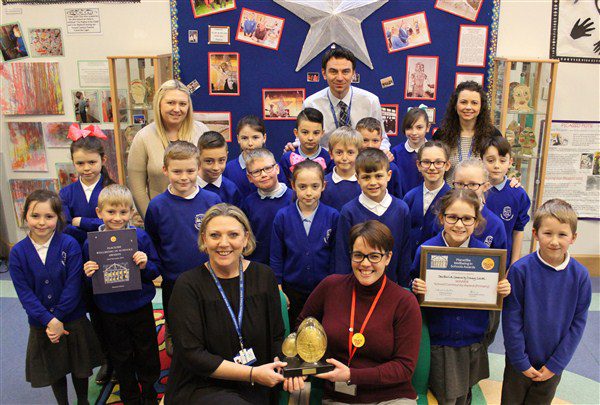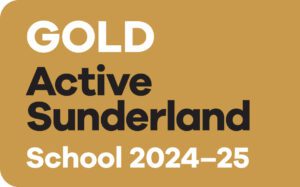Year 4 Number Day!
We did lots of exciting activities today for Number Day, including: colour by number with different times tables and division facts, multiplication mosaics, addition and subtraction emoji code breakers and we designed our own maths day t shirts too-we had a great time!
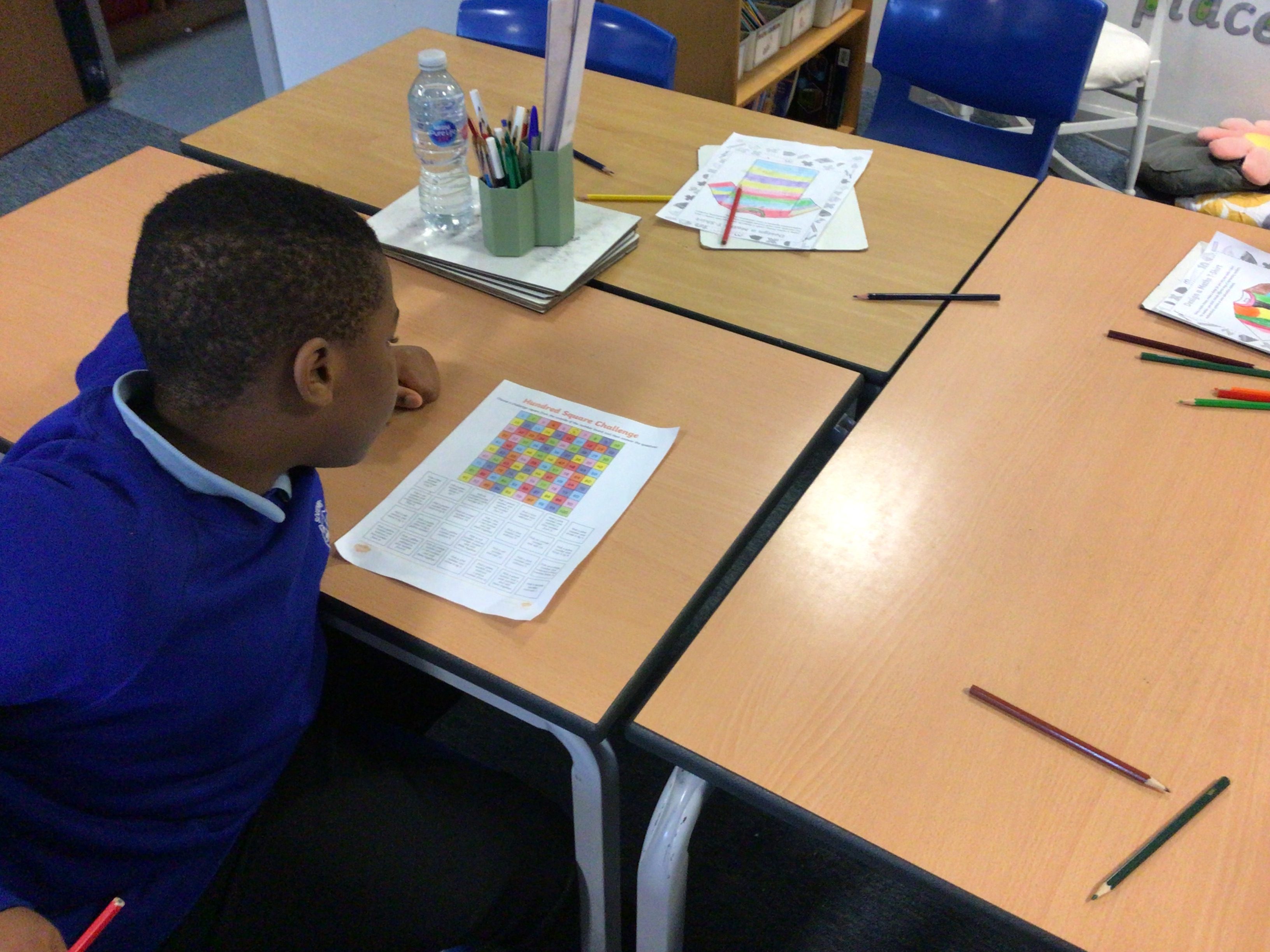
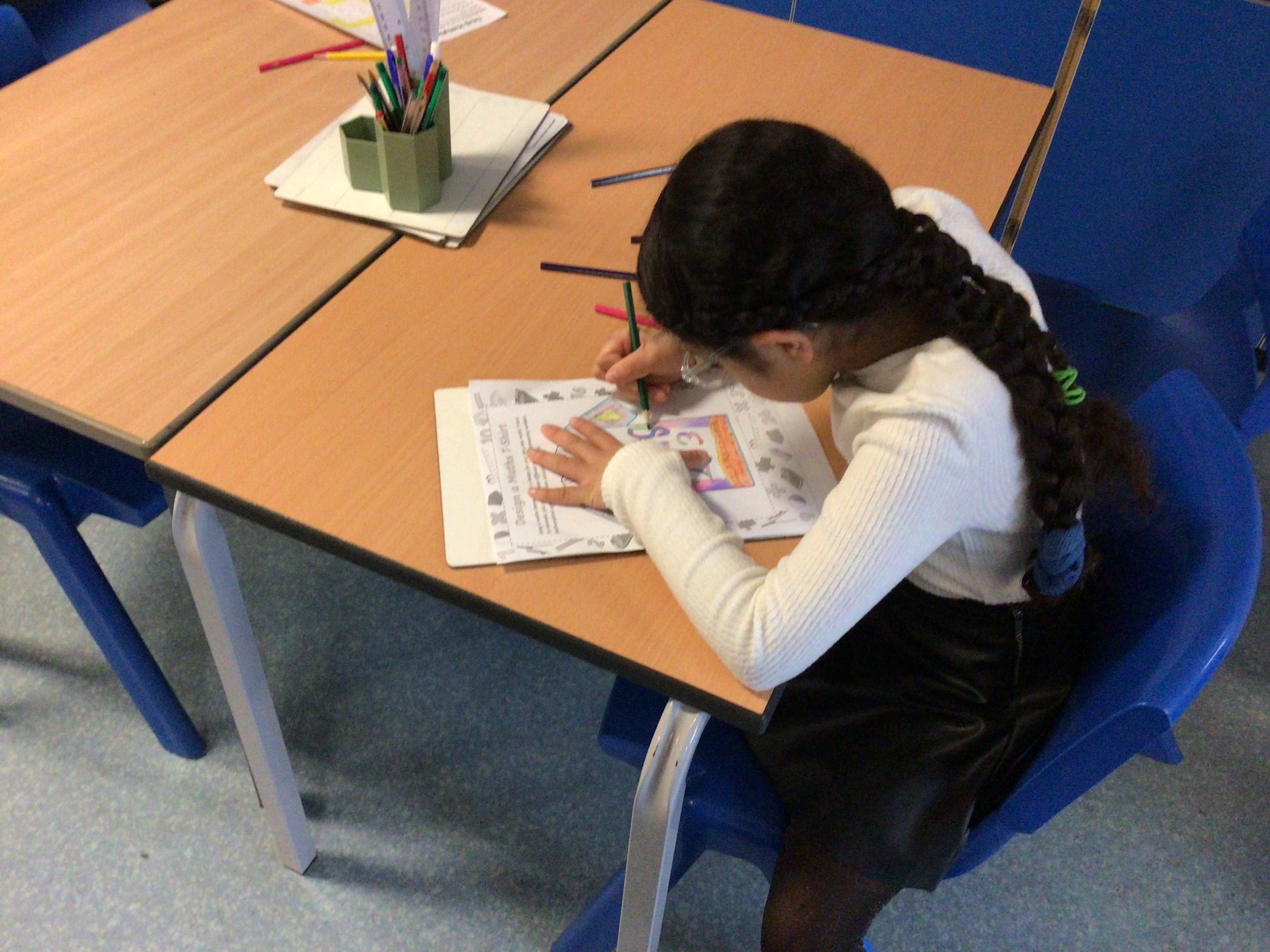
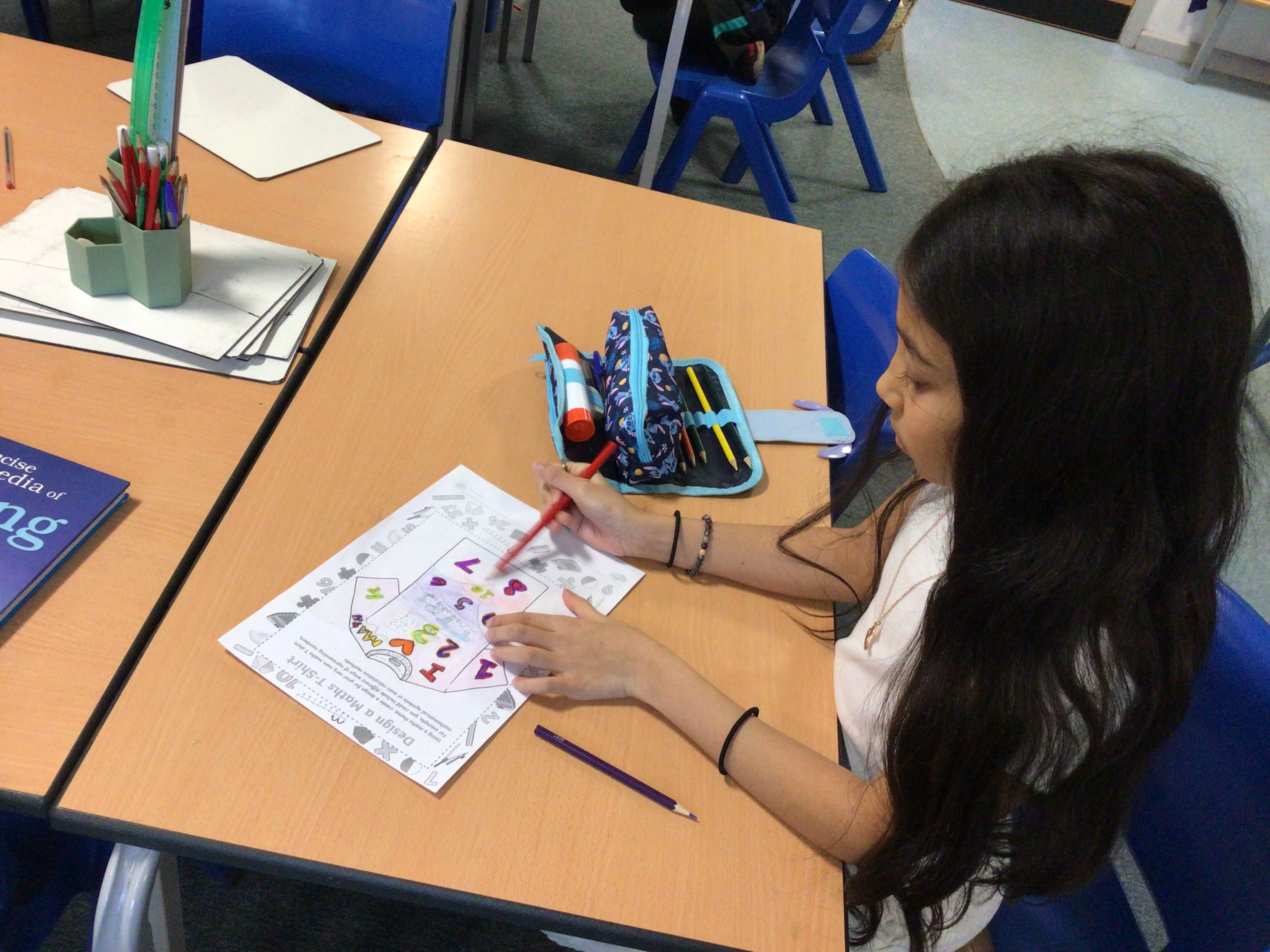
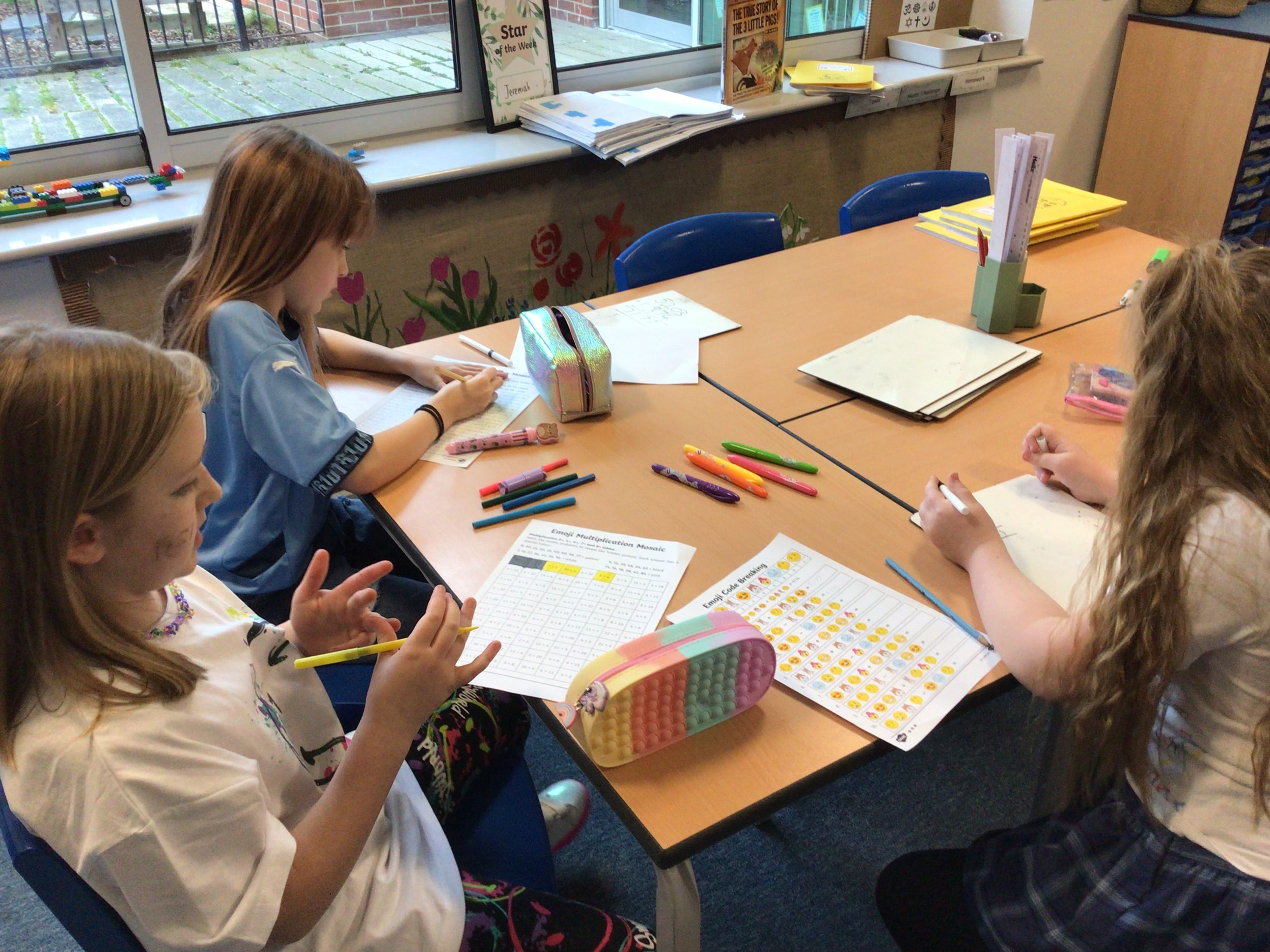
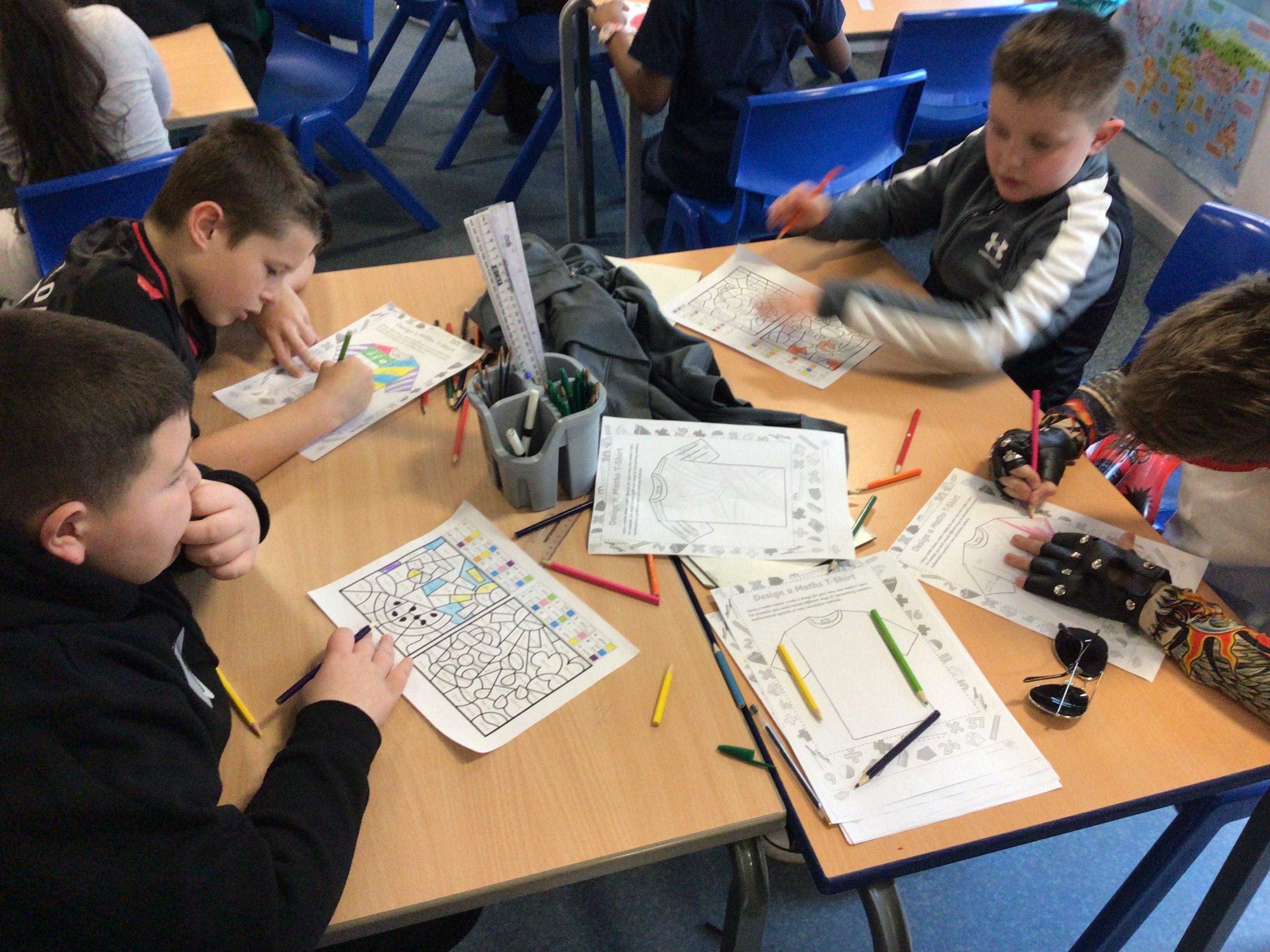
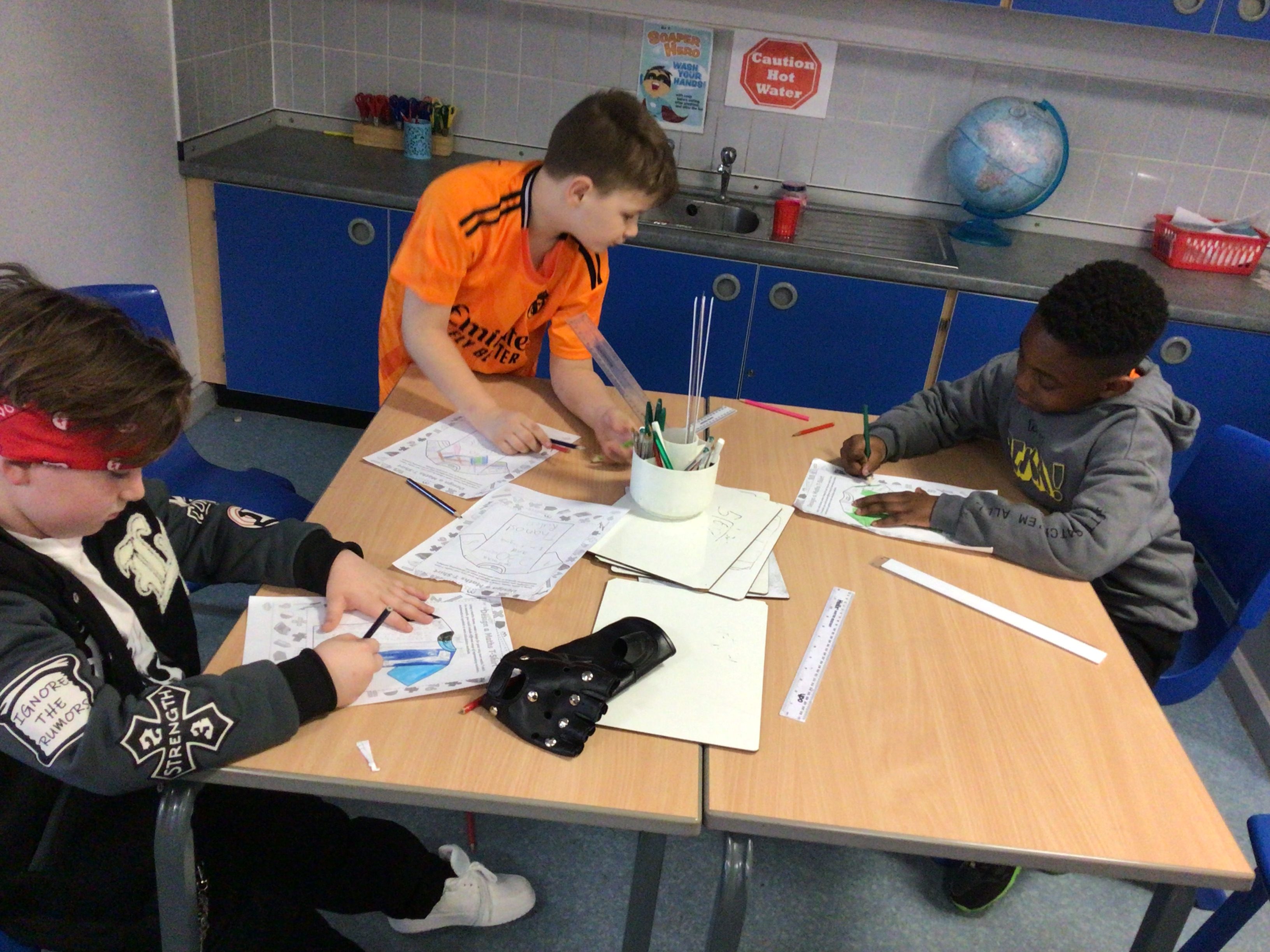
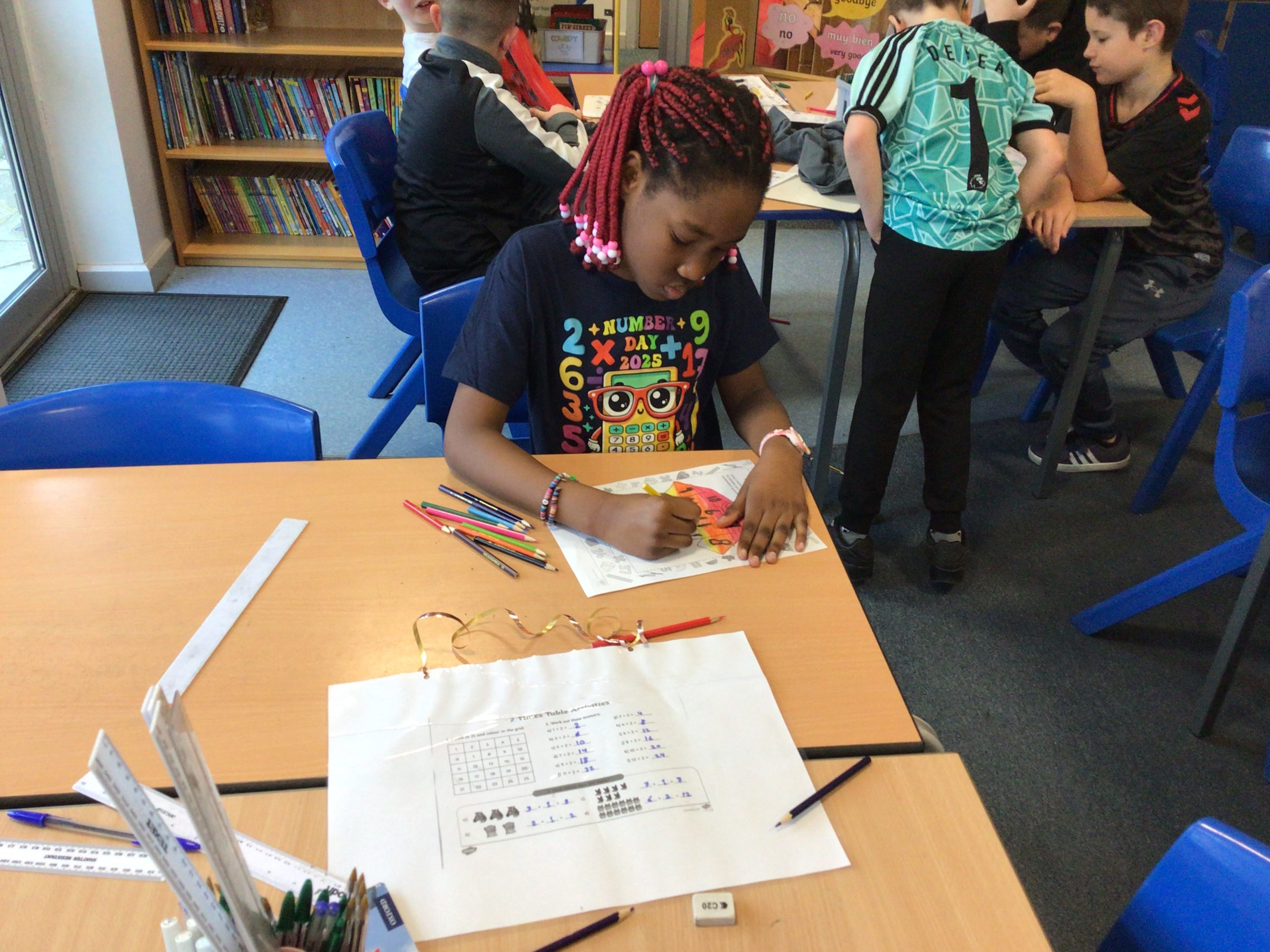
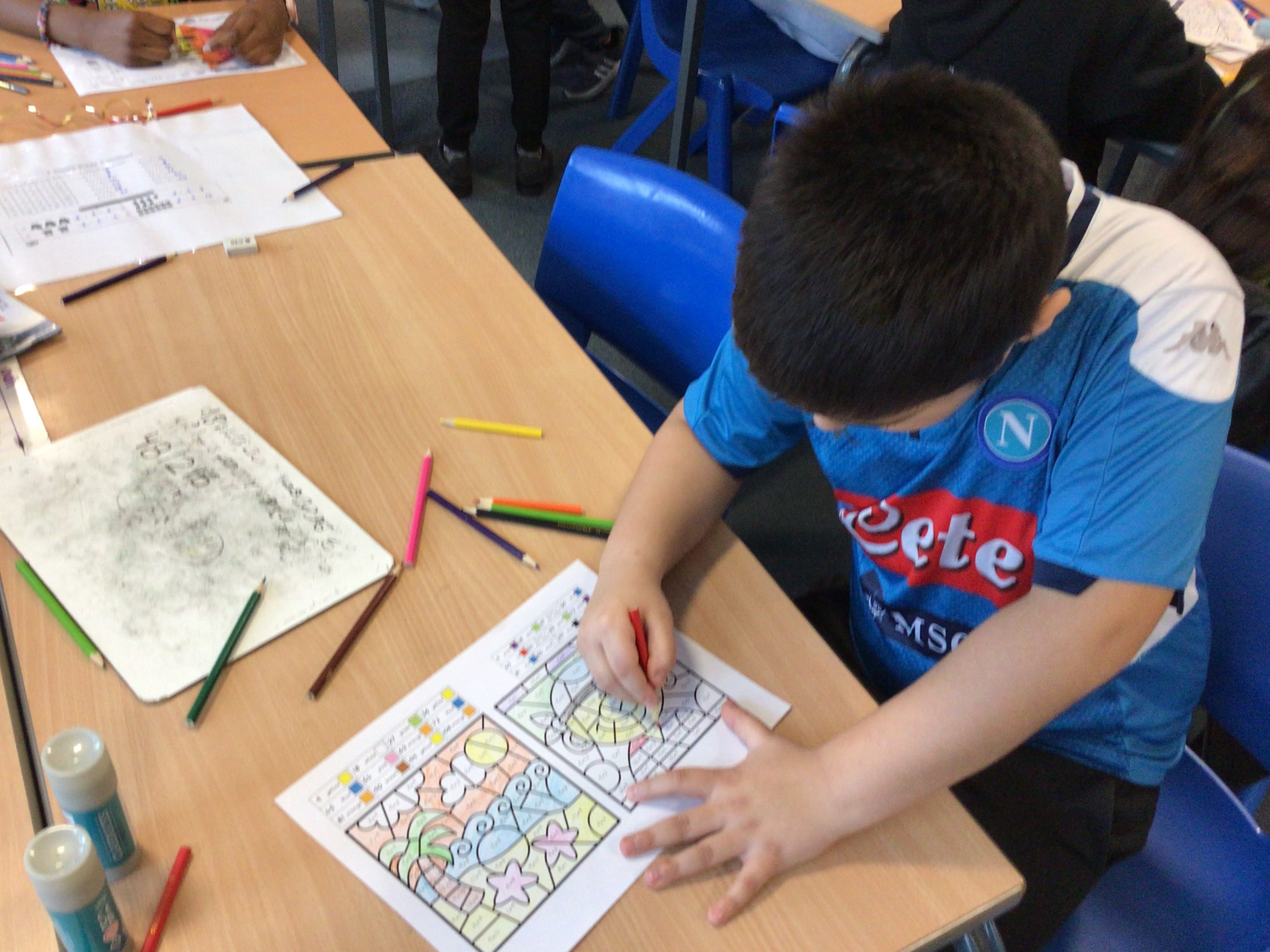
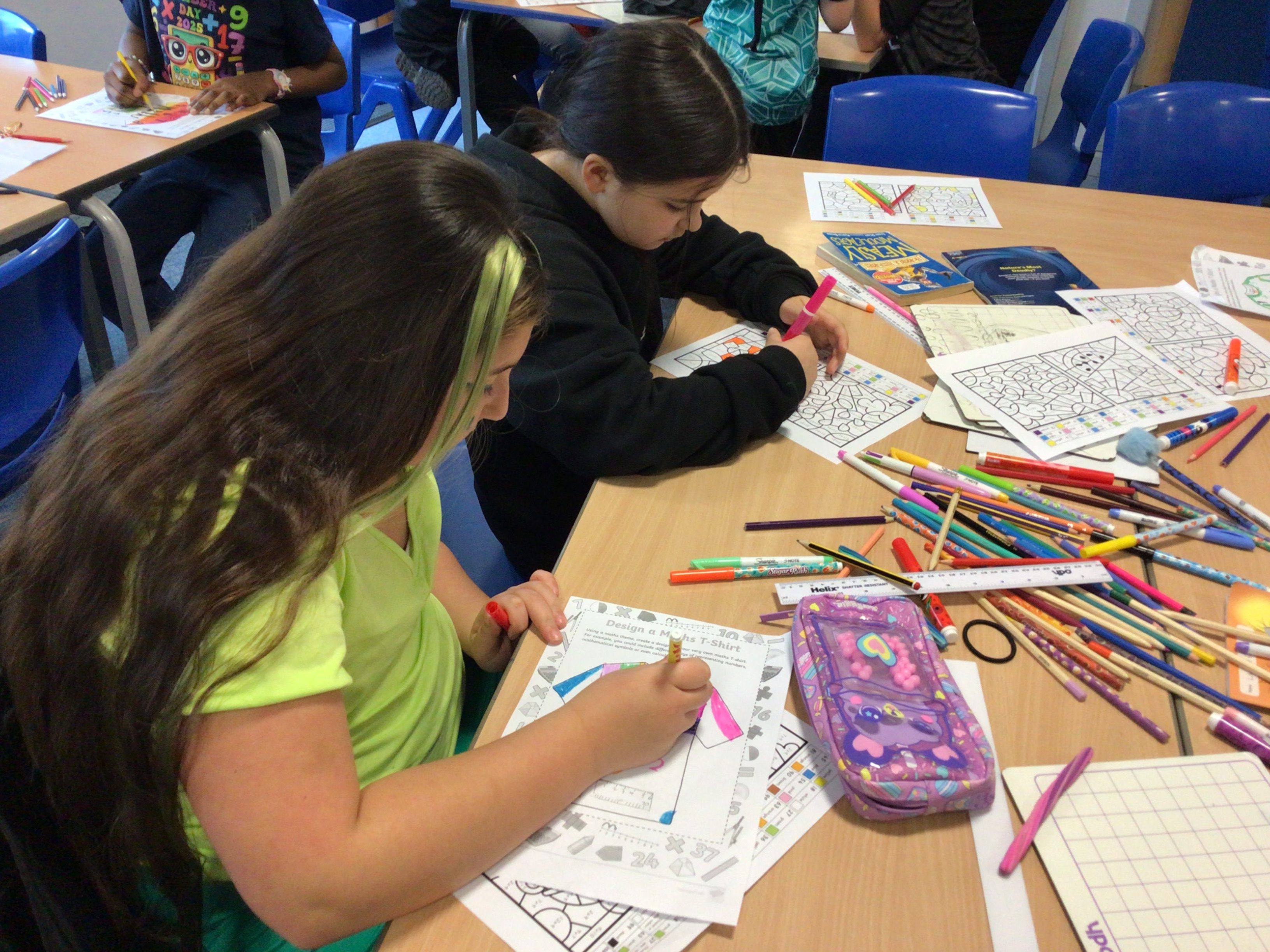
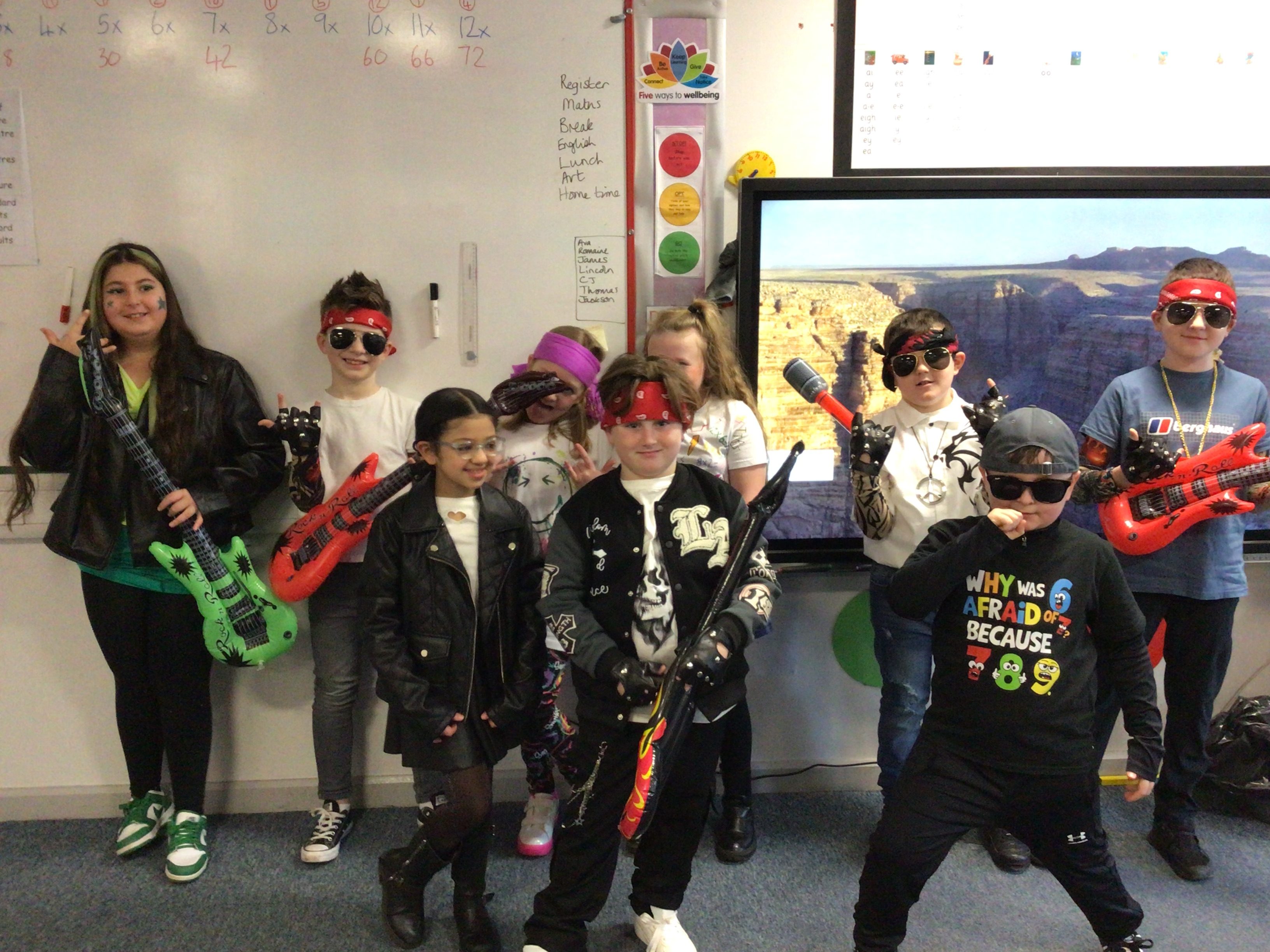
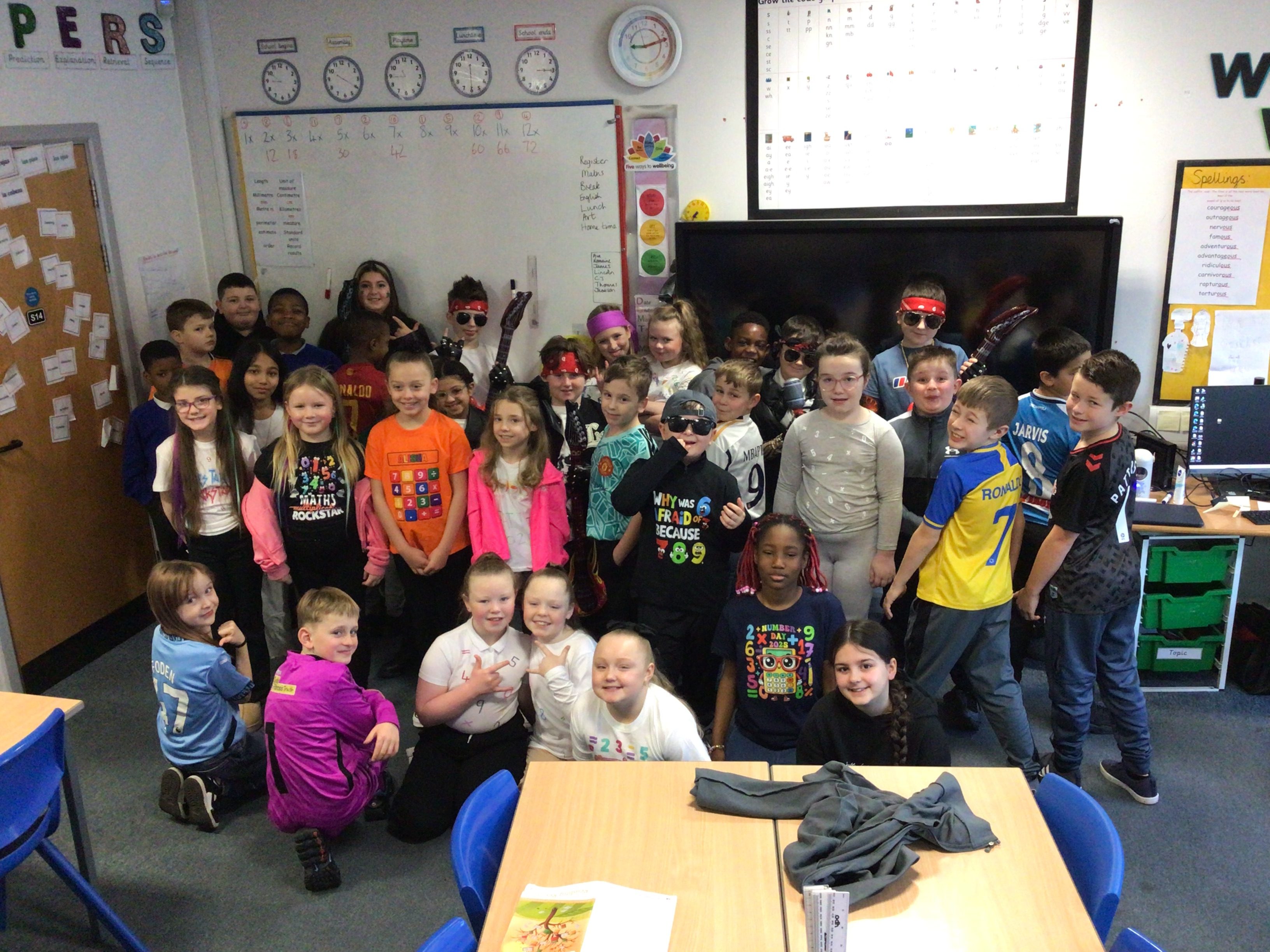
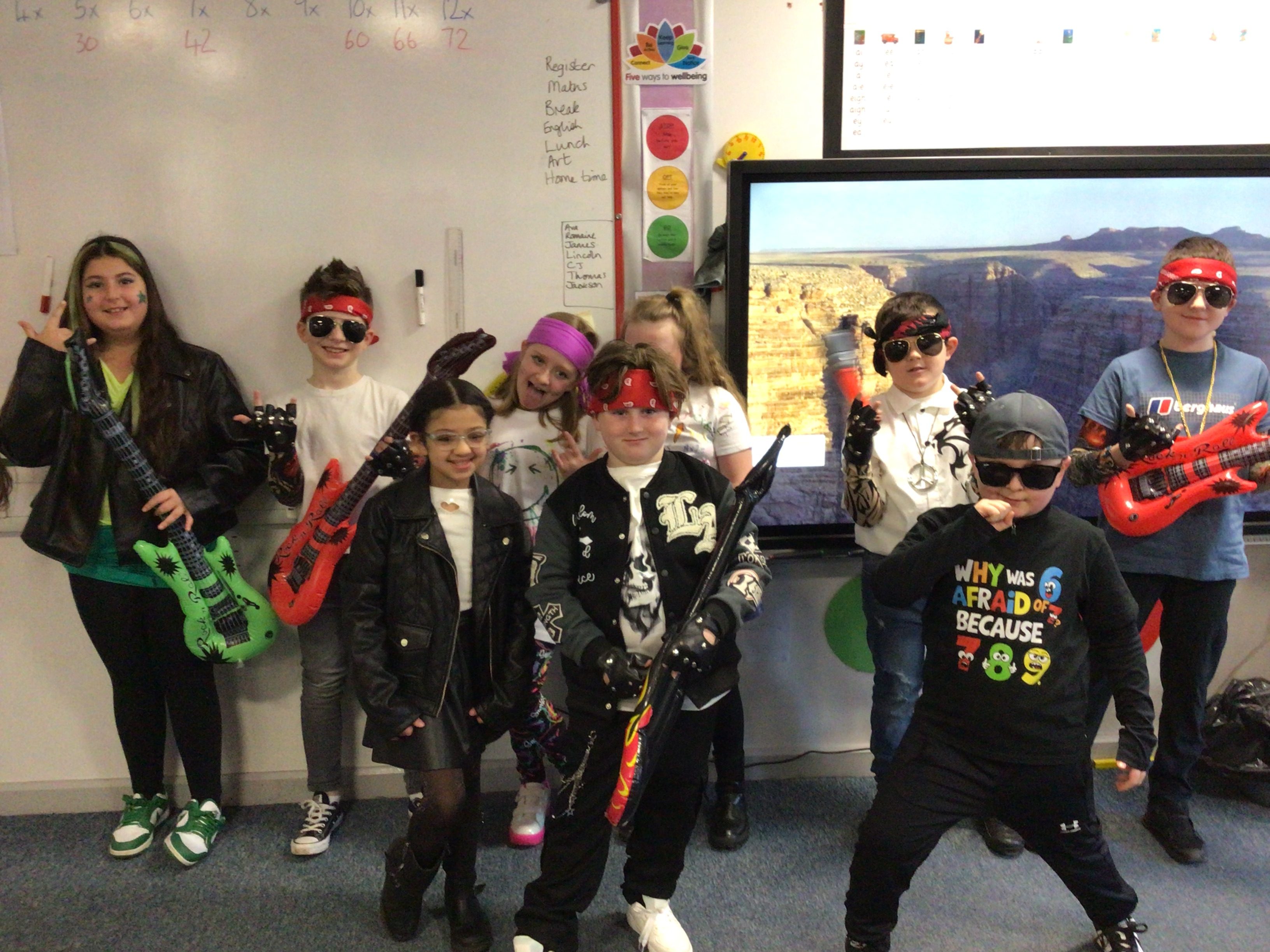
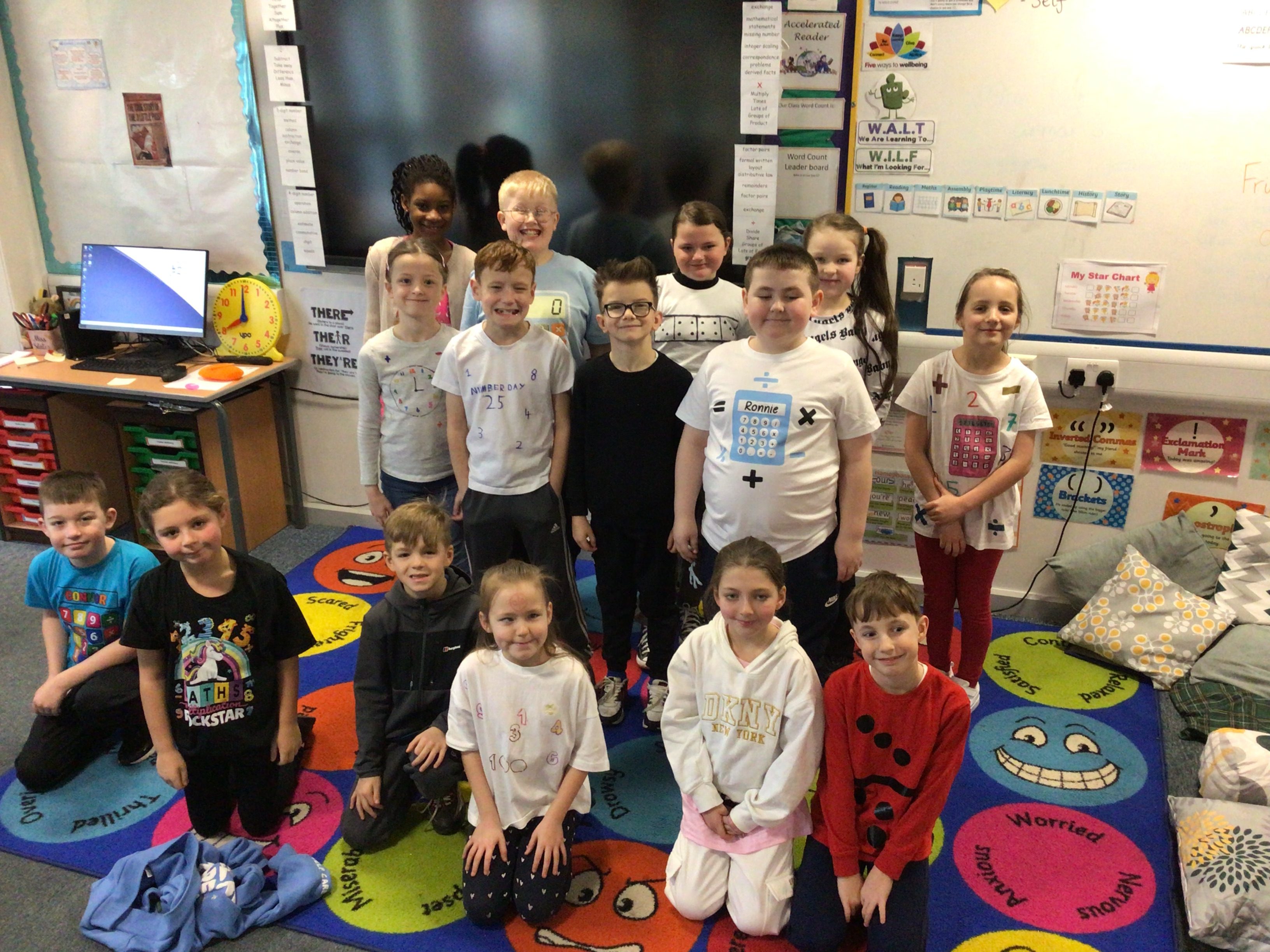
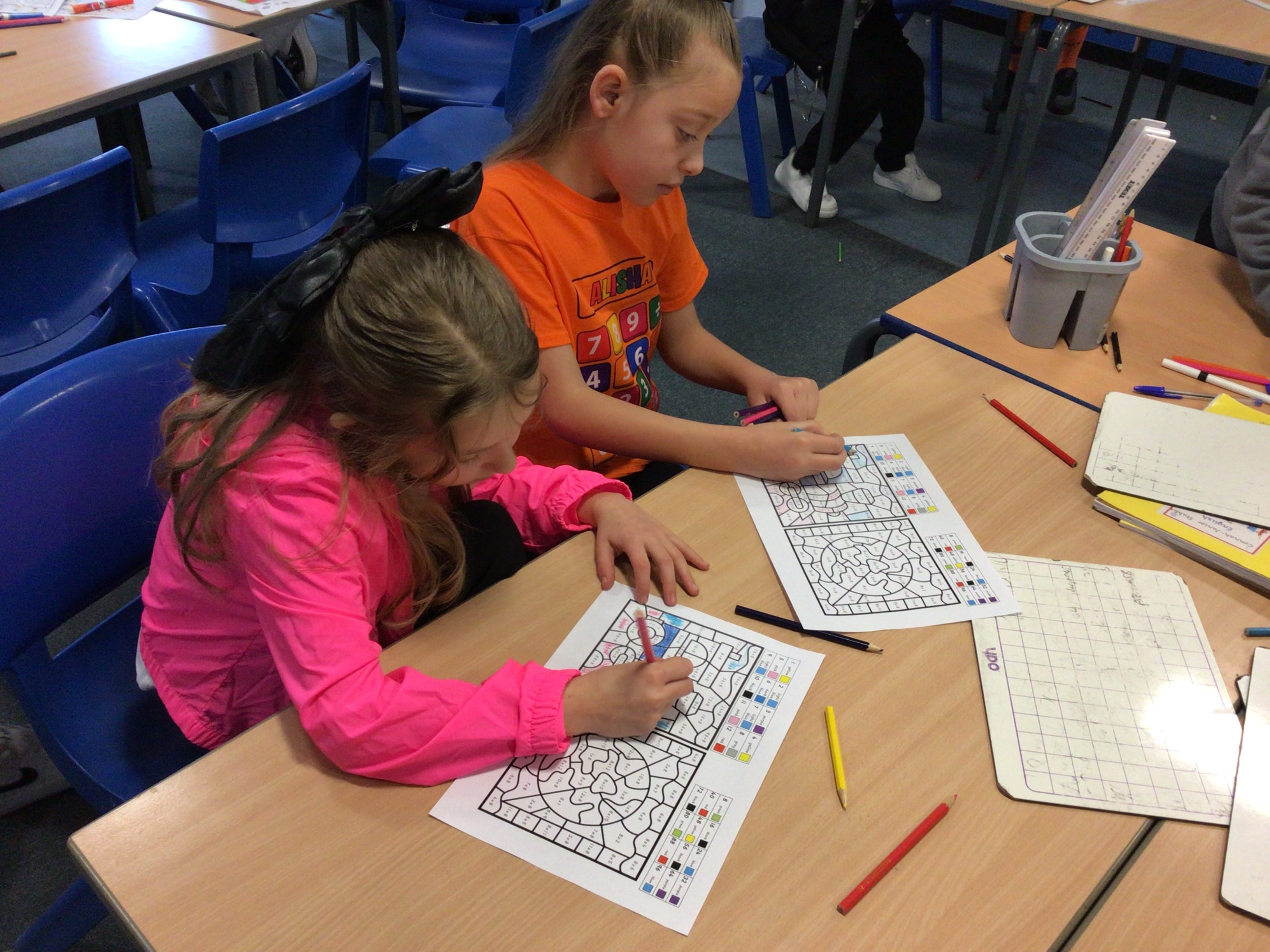
NSPCC Maths Day – Friday 7th February 2025
Friday 7th February is NSPCC Number Day and we will be celebrating this in school. Children should come to school dressed as either a Rock star (linked to Times Table Rockstar) or dressed as something related to a number. Please take a look at the ideas below because there are lots of ideas that will not require you to buy anything new.
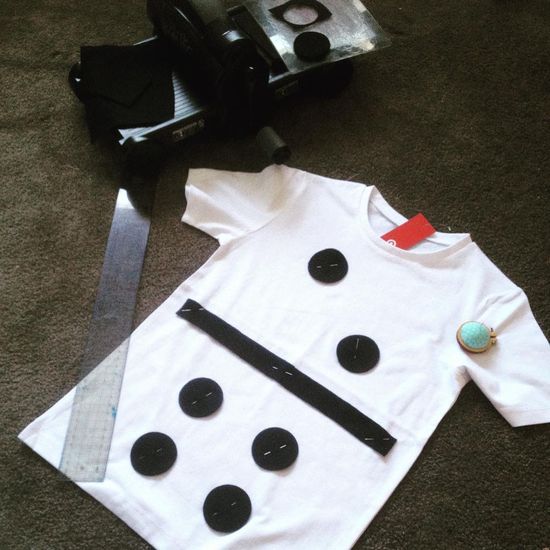
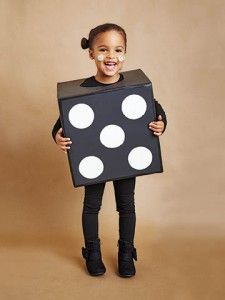
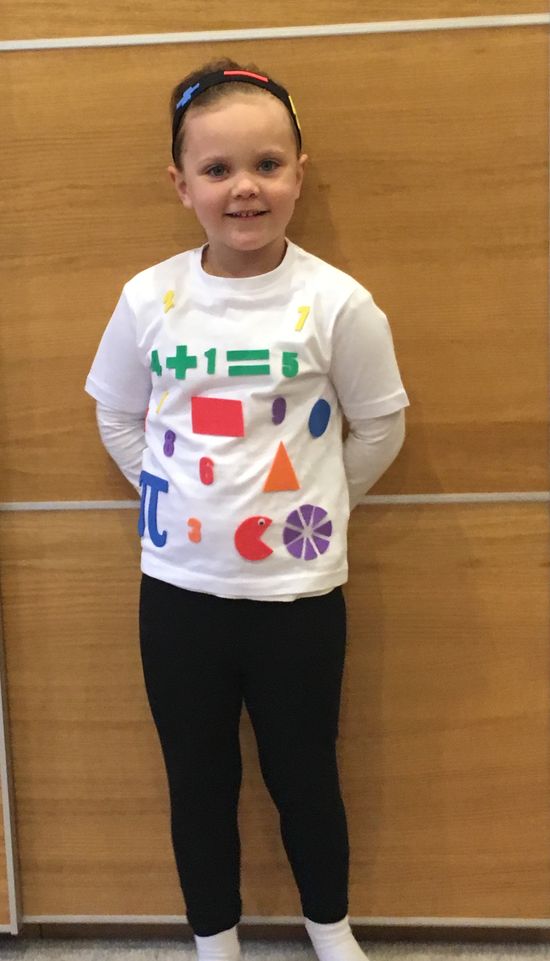
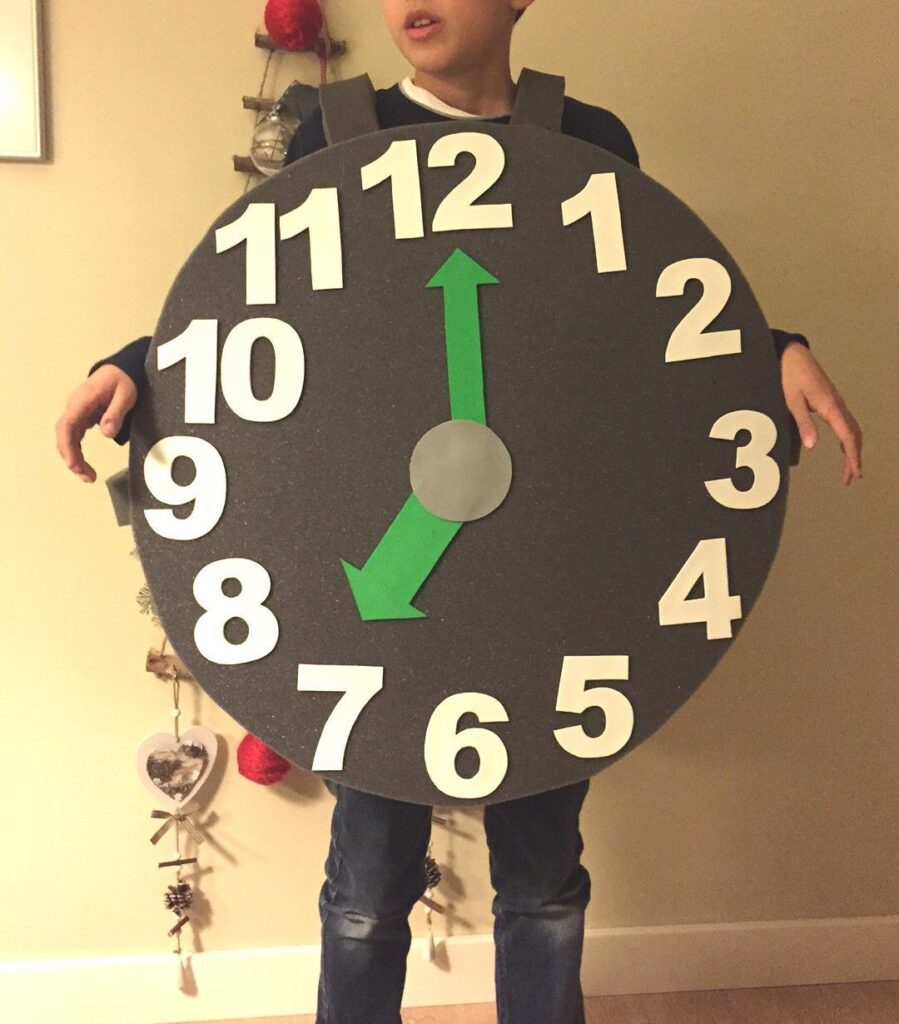
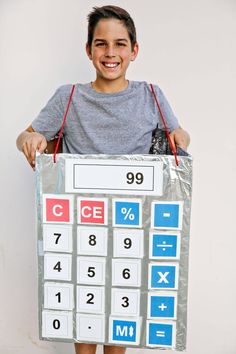


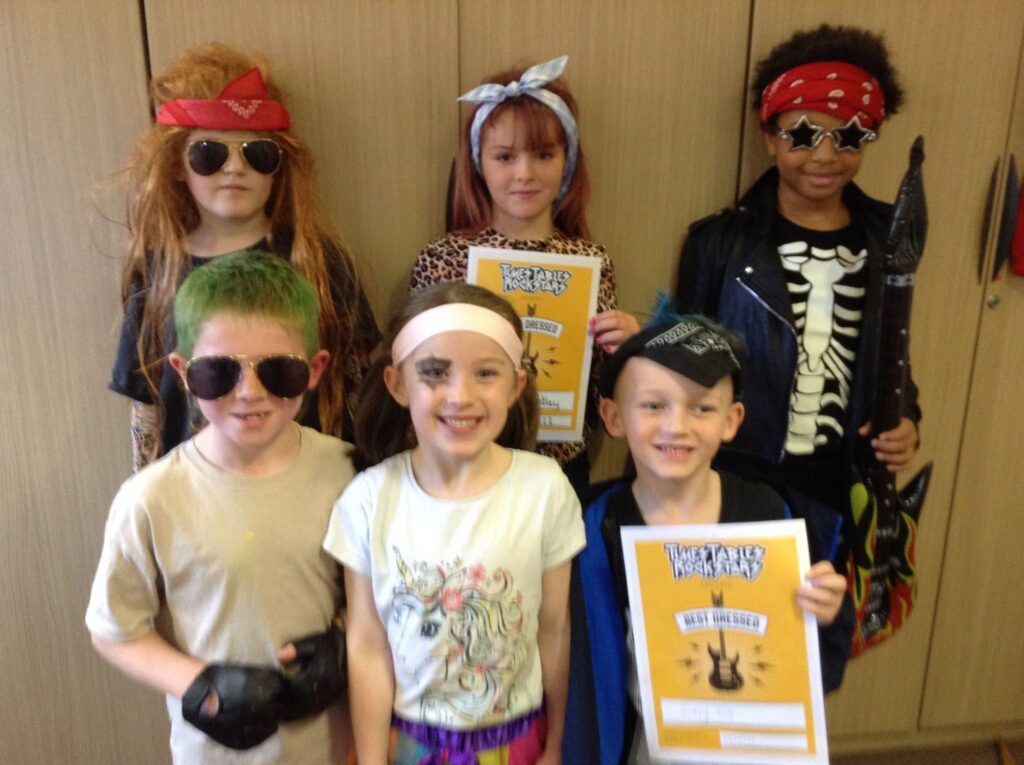
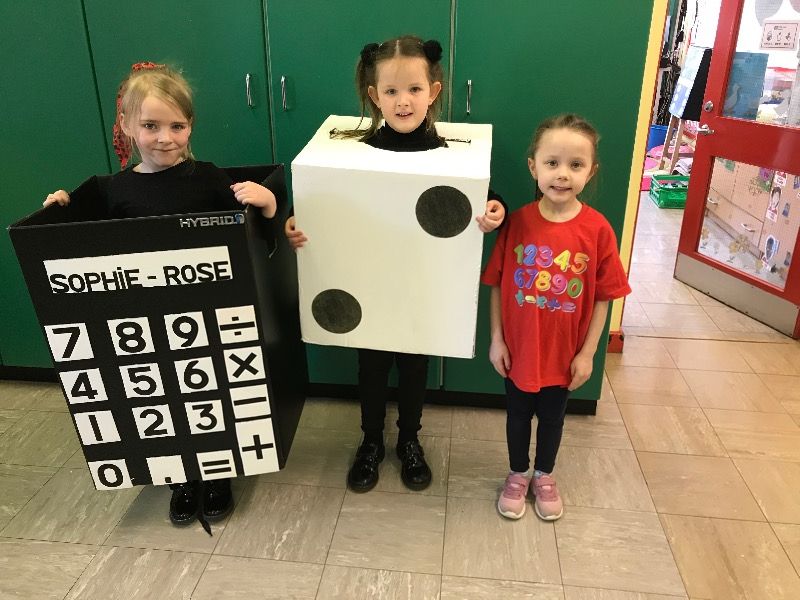
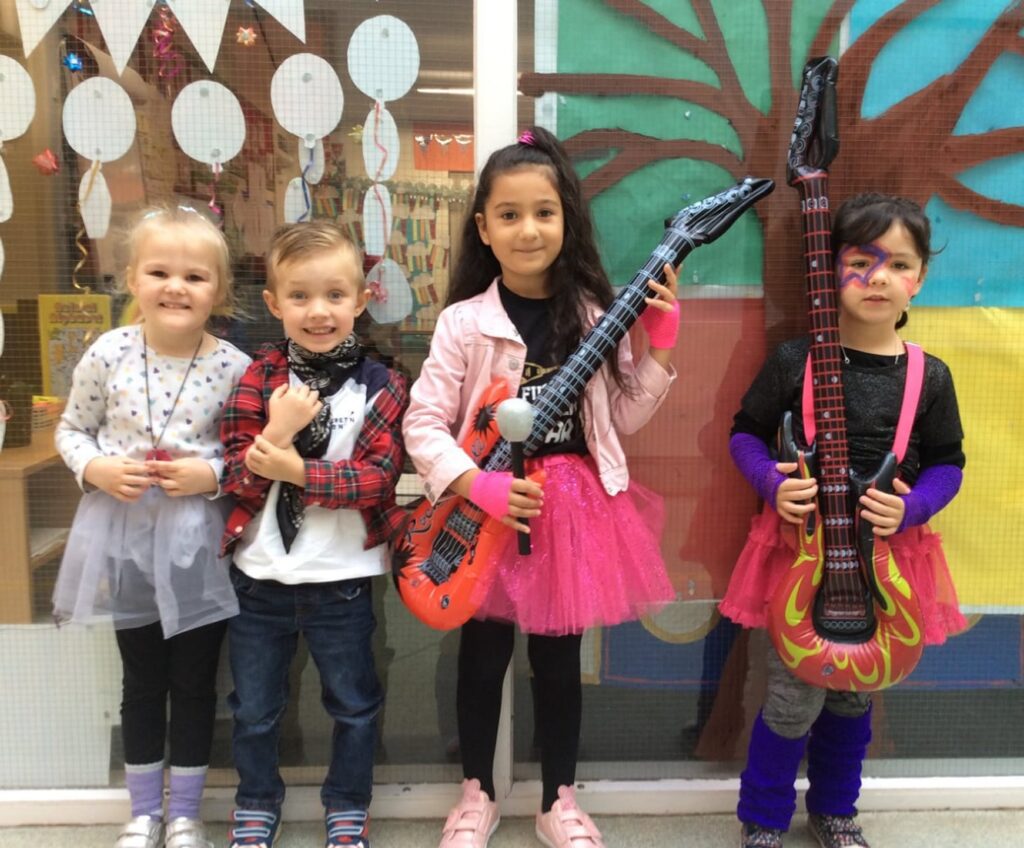
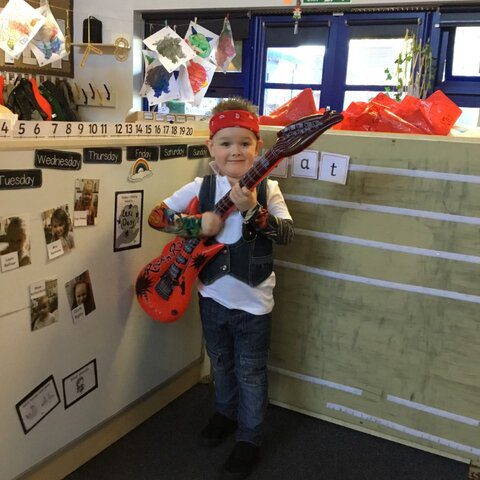
Autumn real life maths – Money
Year 6
Year 6 discussed the vocabulary linked to money and budgeting and worked as a class to set a budget for a household. We went over the budget and ran out of money so we had to relook at the choices we had made. There were some really good discussions as the activity looked at pay slips and we discussed the deductions from them along with other household bills. The children asked lots of really good questions to further their understanding.
Year 6 used some great resources from the Natwest Money Sense website to help them with their money learning.
Year 5
Year 5 looked at budgets. We discussed what a budget is and what it means when we spend our money.
Some of us then went on to plan a trip to the cinema with a £35 budget. We had to make sure we had return bus fares and a movie ticket before we bought anything else at the cinema. We then worked out the total and our change. We could then plan another visit and some of us even managed to plan a trip with a friend!
The rest of the class had to plan a pizza night. We had to create a shopping list and plan the ingredients for 4 pizzas. We had a budget of £40 and had to think carefully about what we were buying and how much of each ingredient each pizza would get. We worked out the total for all of the pizzas, created an ingredient list for each pizza and found our change. Some of us went over budget so had to remove some ingredients for our budget to work.
Afterwards, some of us created another pizza night with different ingredients and some of us also looked at planning a pizza night for 3 people and 2 people.
We enjoyed planning our pizza nights and cinema visits.
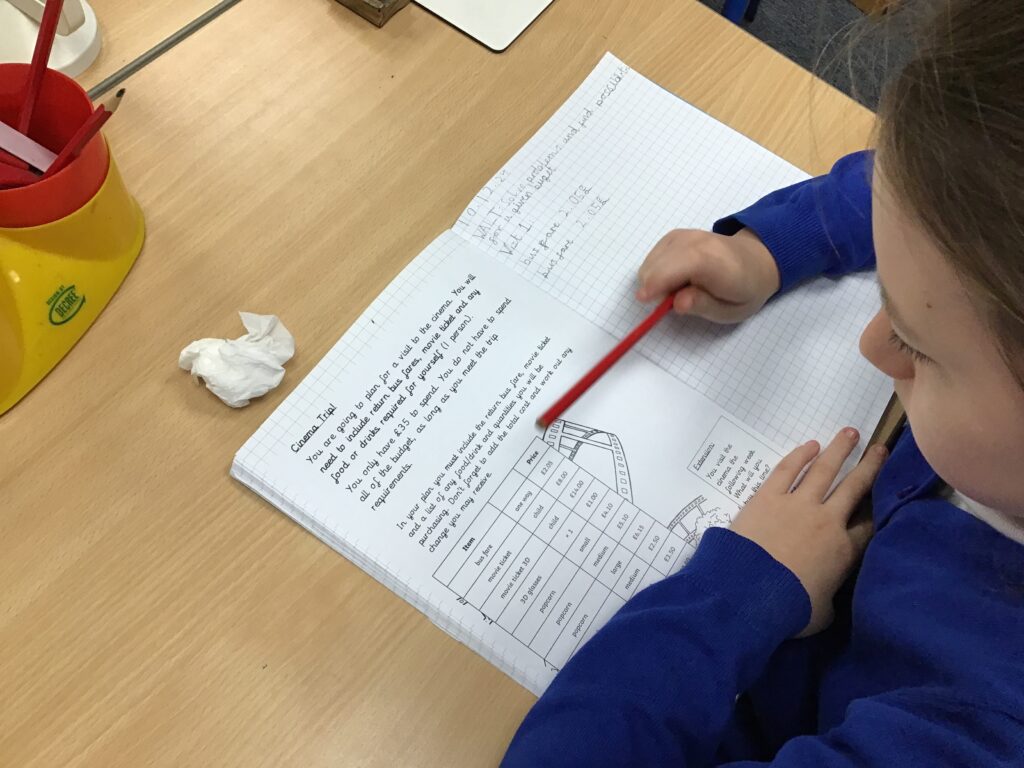
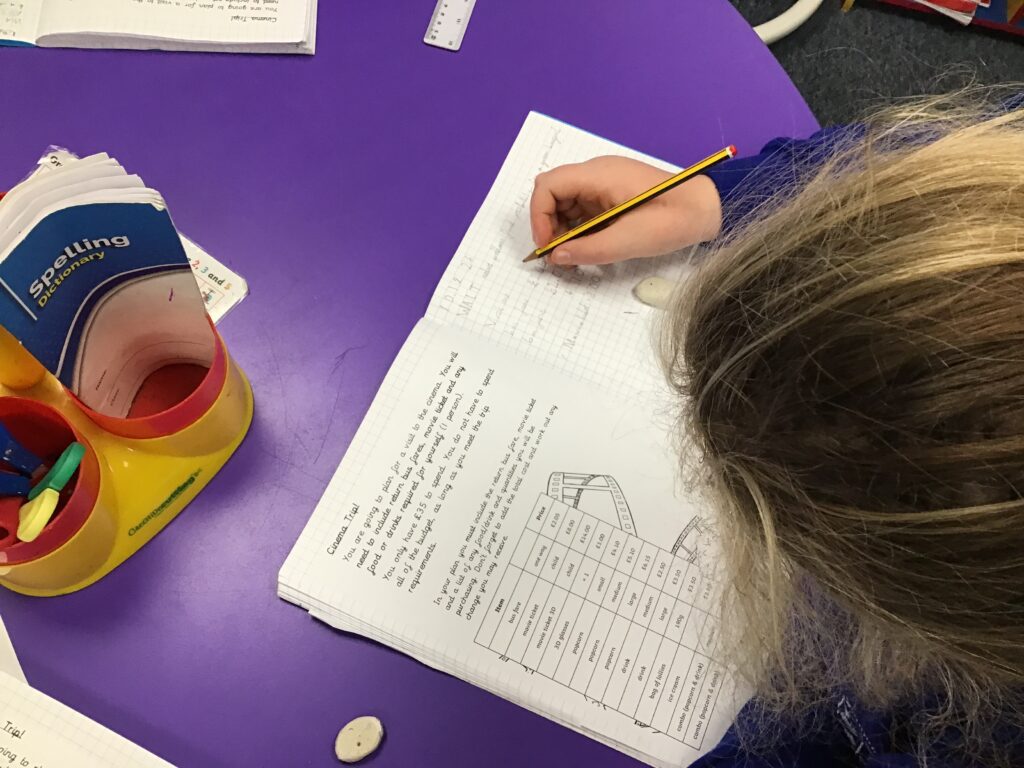
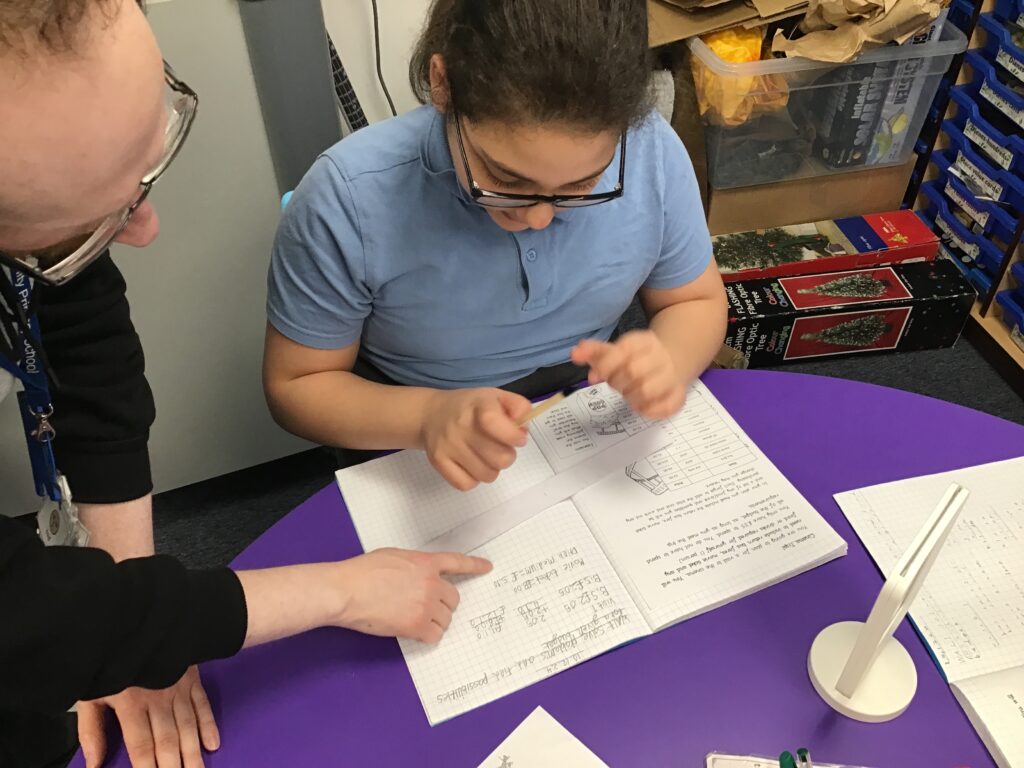
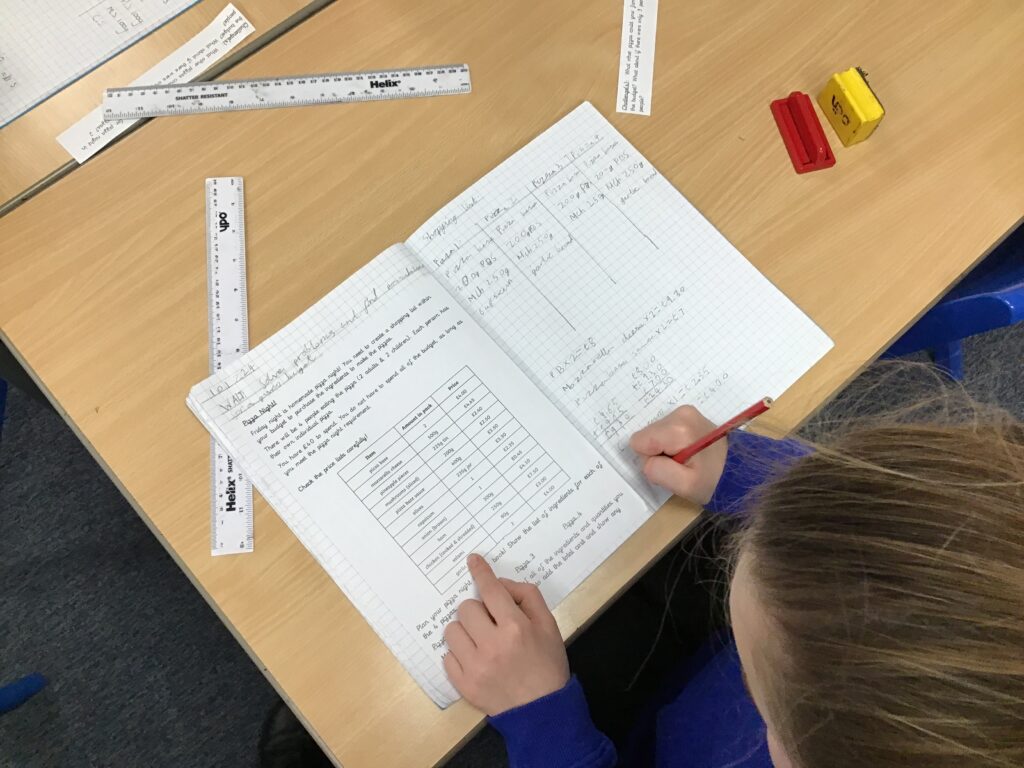
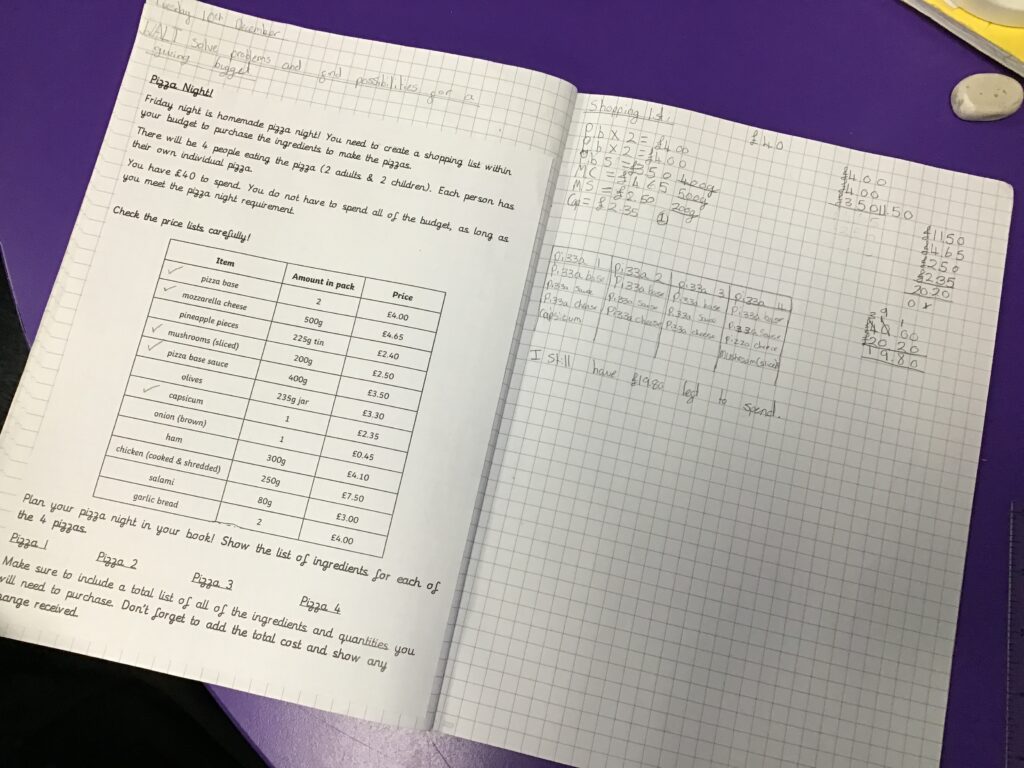
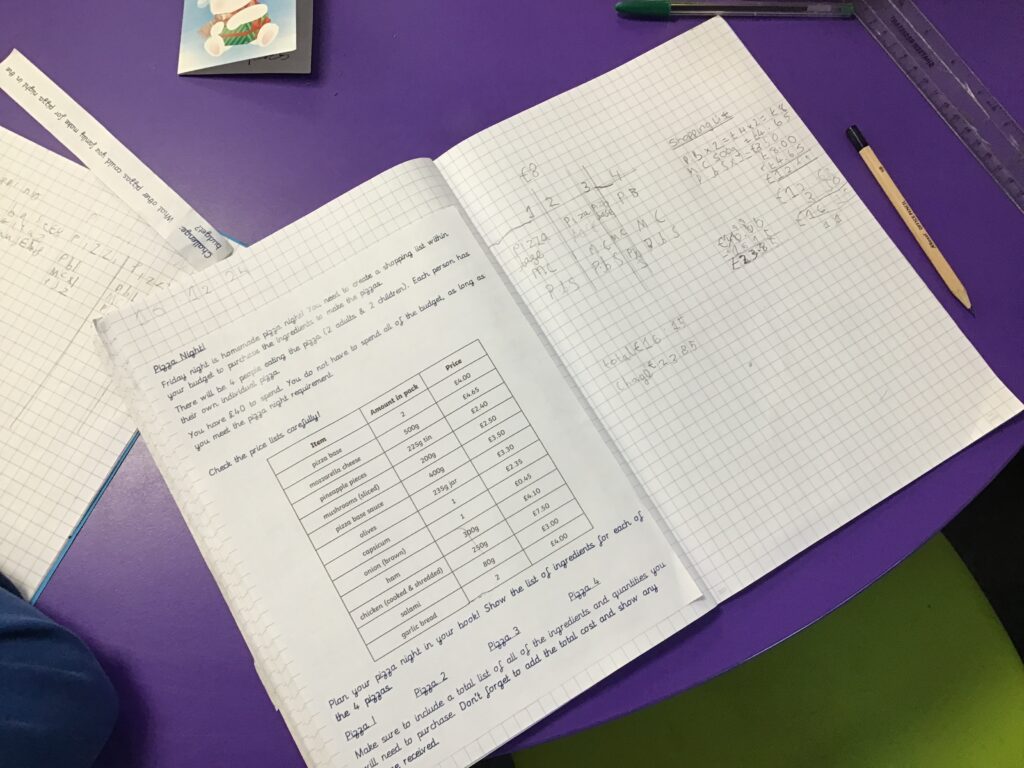
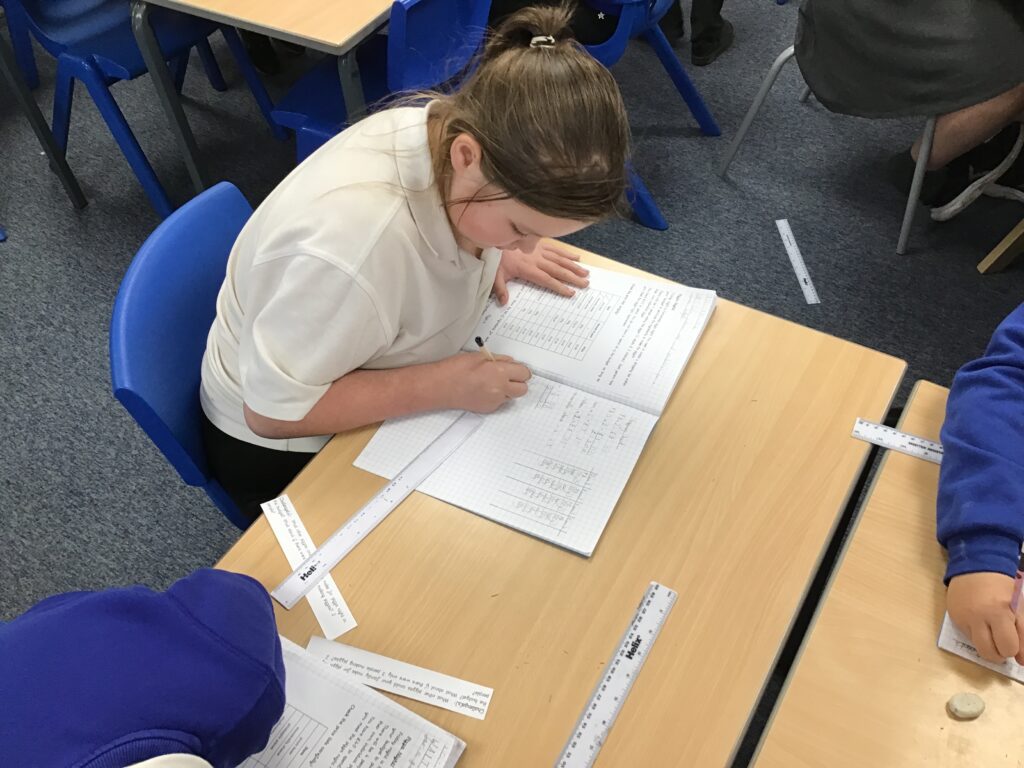
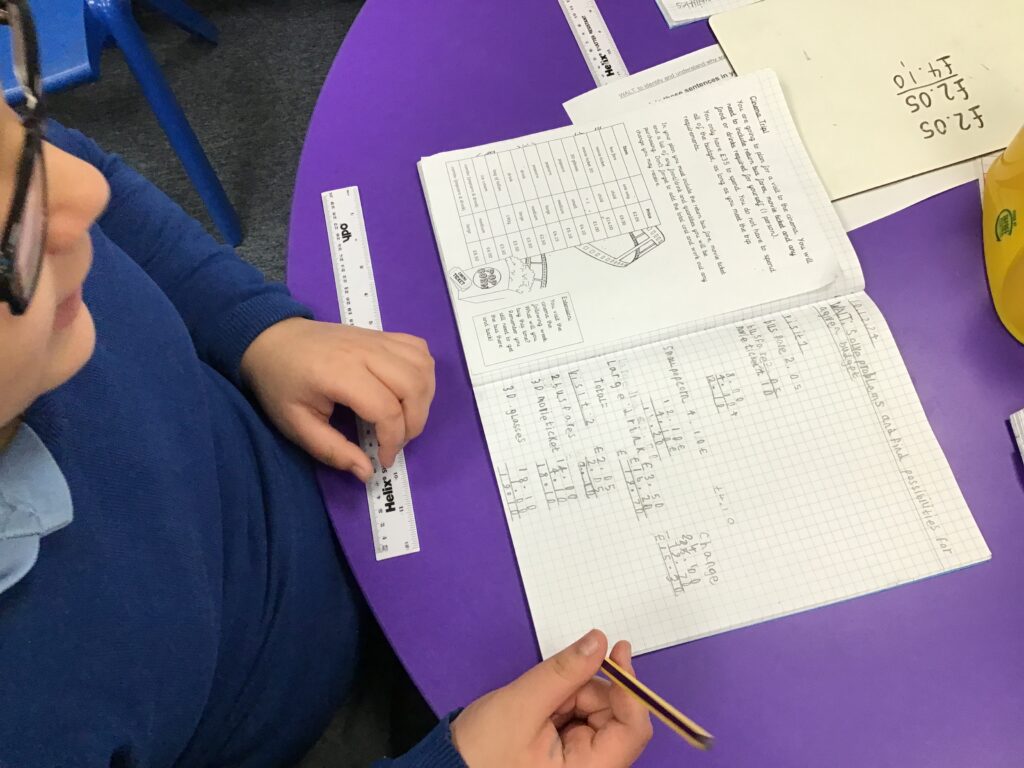
Year 4
Mrs Smith’s maths group looked at money! We could recognise most of the coins so we had a little refresh on their values. We then had a toy list with the prices included and had some problems to work out too. Some of us used a formal method to work out the answers and some of us made the amounts using money and added it up that way. We had lots of fun investigating!






Mrs Woodey’s class are very confident with the value of different coins and notes we use in the UK. Mrs Woodey set her class a variety of word problems involving the cost of different toys. They had so much fun solving money problems!
Year 3
Mrs Stephenson’s math group had so much fun researching the cost of different common household groceries in different local supermarkets. We used iPads to check the prices of given items in ASDA, Aldi and Sainsbury’s. We couldn’t believe how different the prices were for the same things. We now have a better understanding of how much our grown ups spend on grocery shopping.
Year 2
Year 2 have been looking at different objects they could buy with different amounts of money. They worked in pairs to find out how much change they would have from 10p and 20p.
The Hub
The children in The Hub have also had a great time working with money. They had lots of fun playing in the role play area pretending to be shop keepers and customers. The children pretended to buy items and also gave change back to the customer.
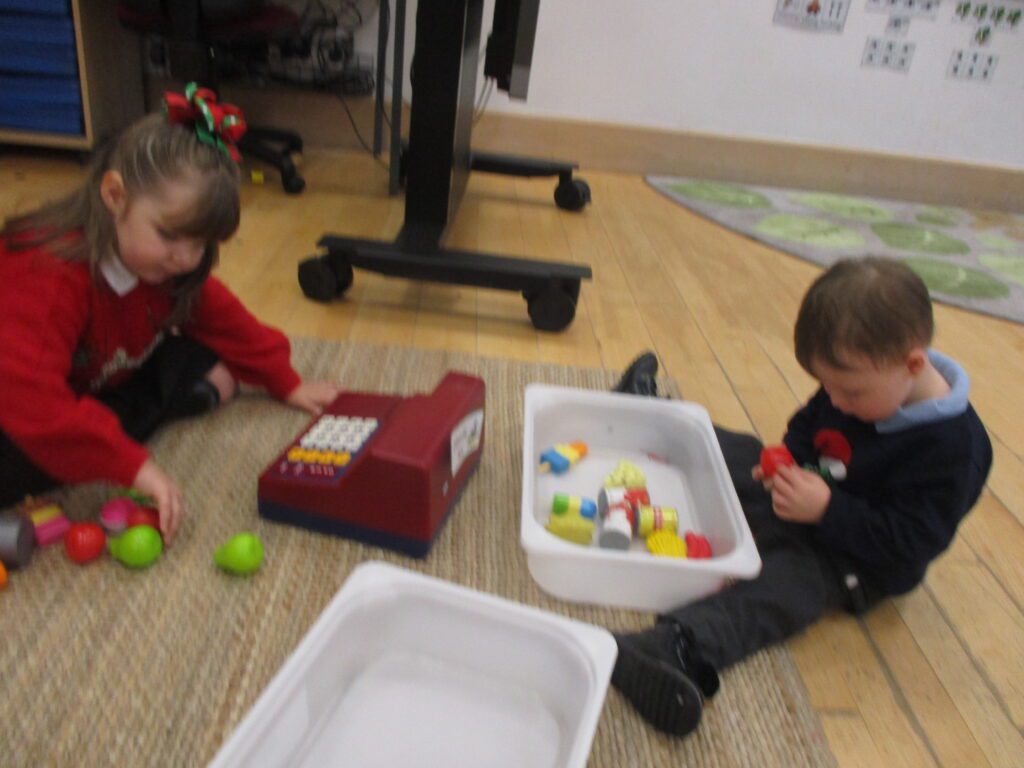
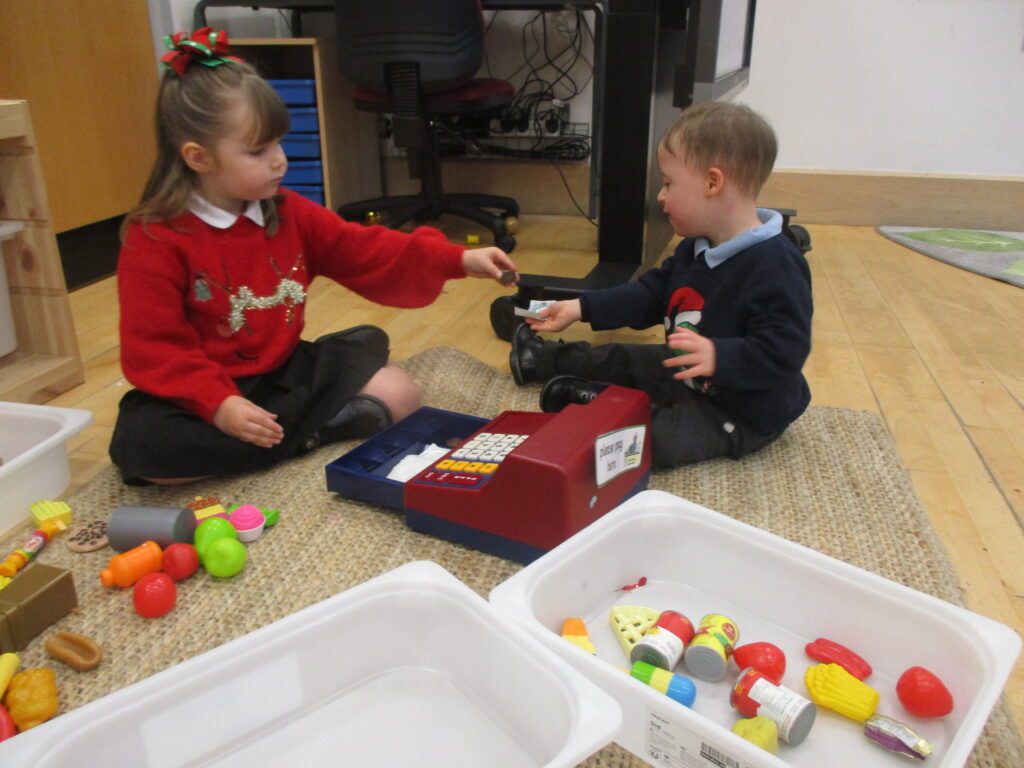
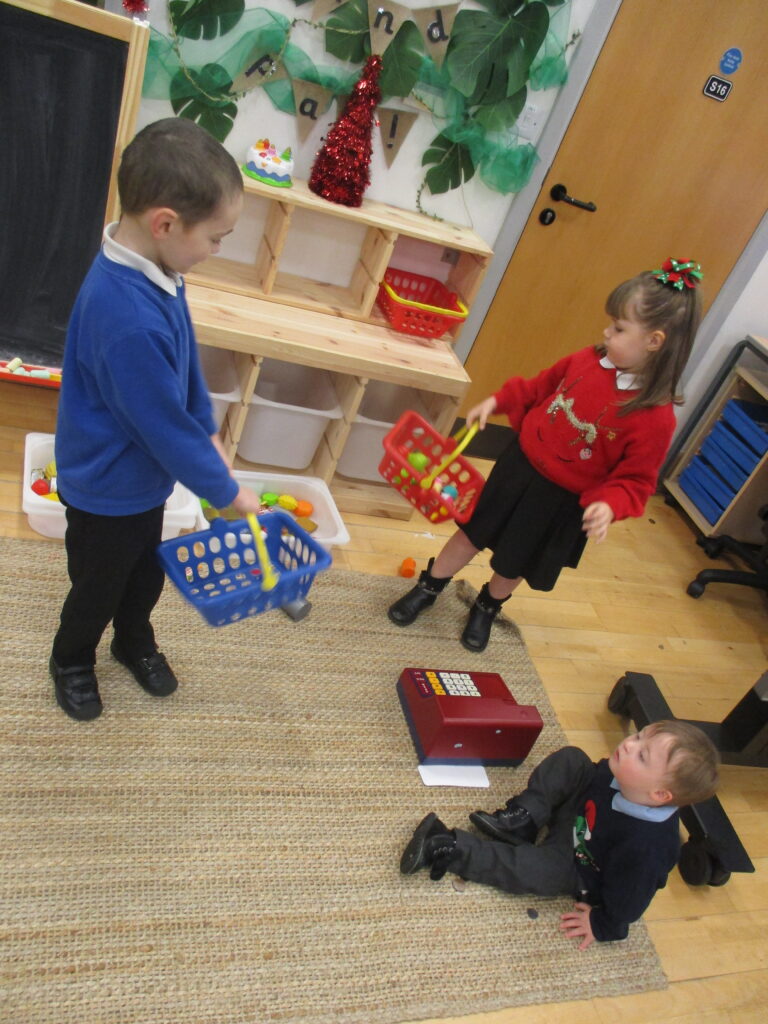
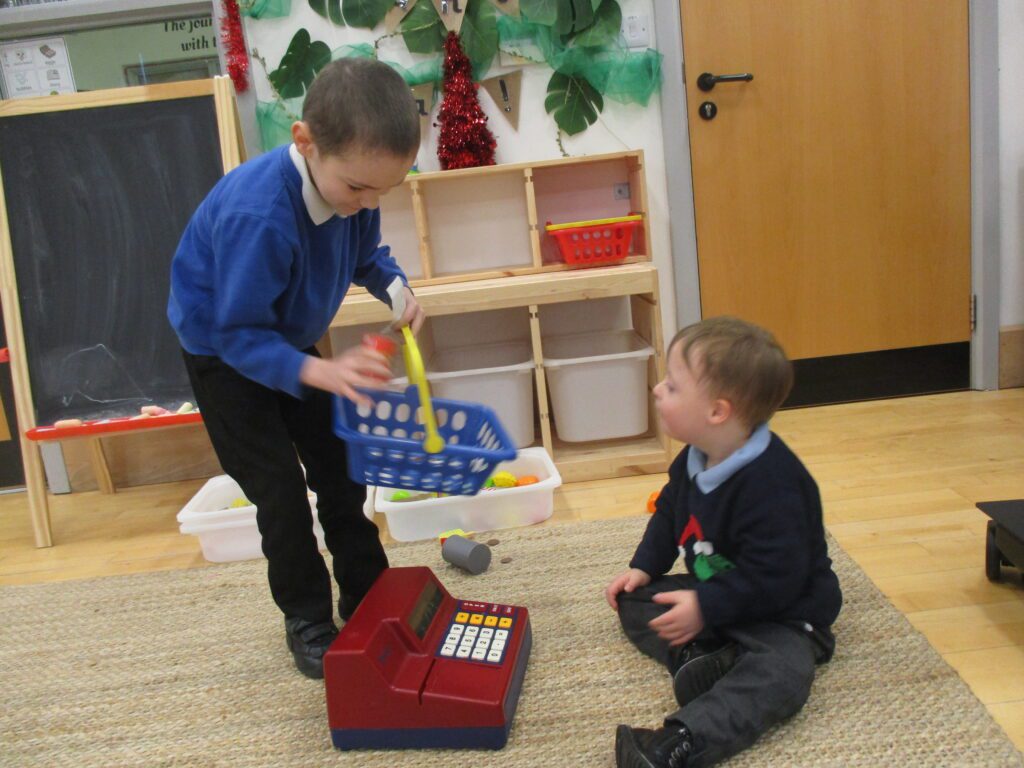
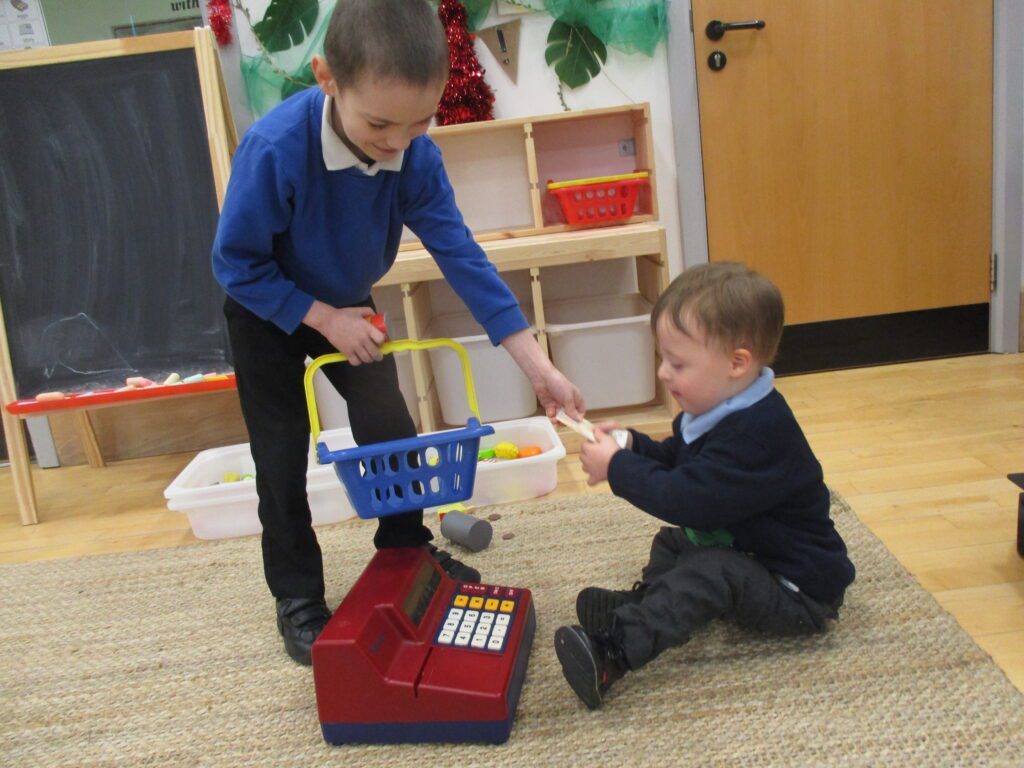
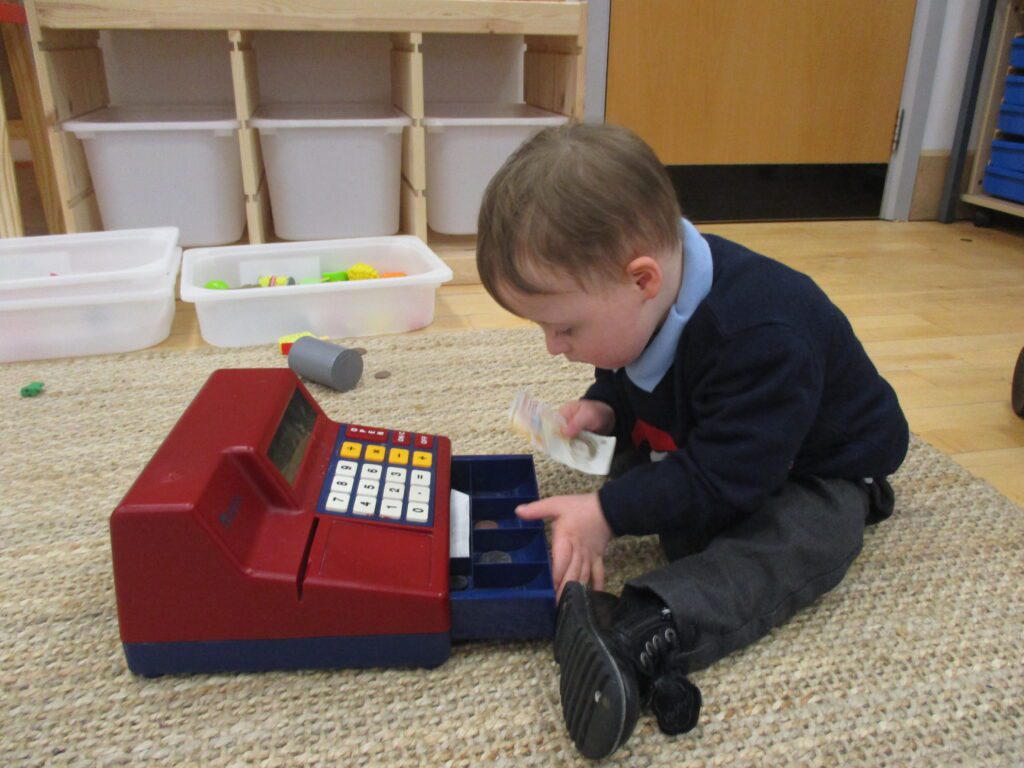
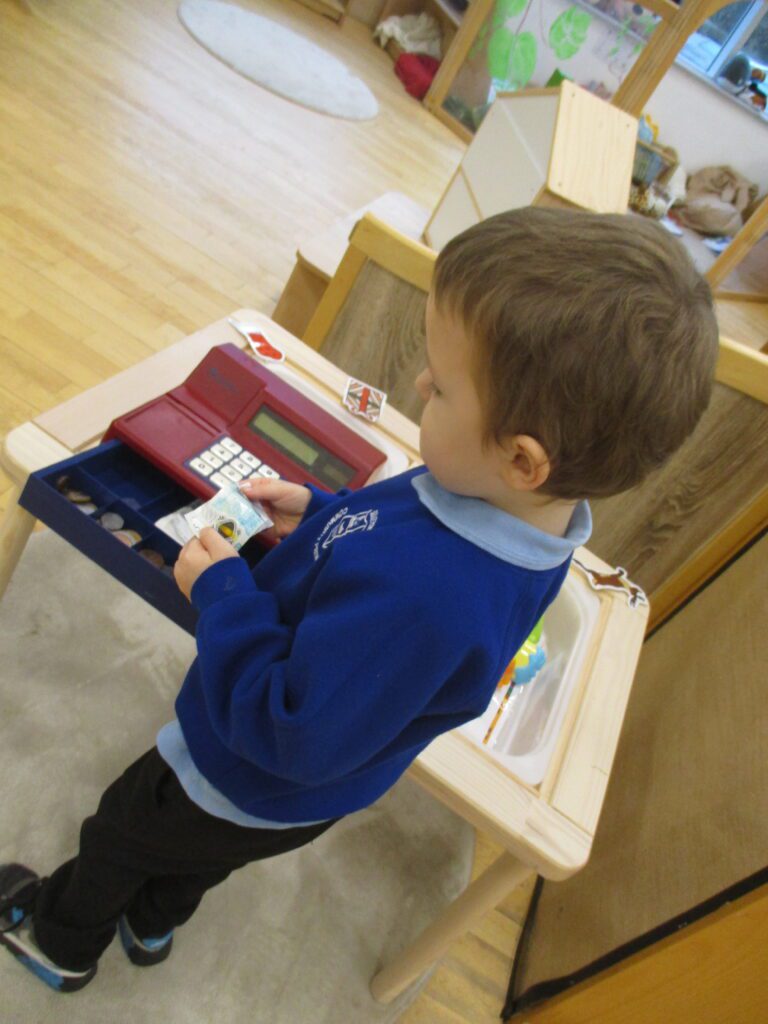
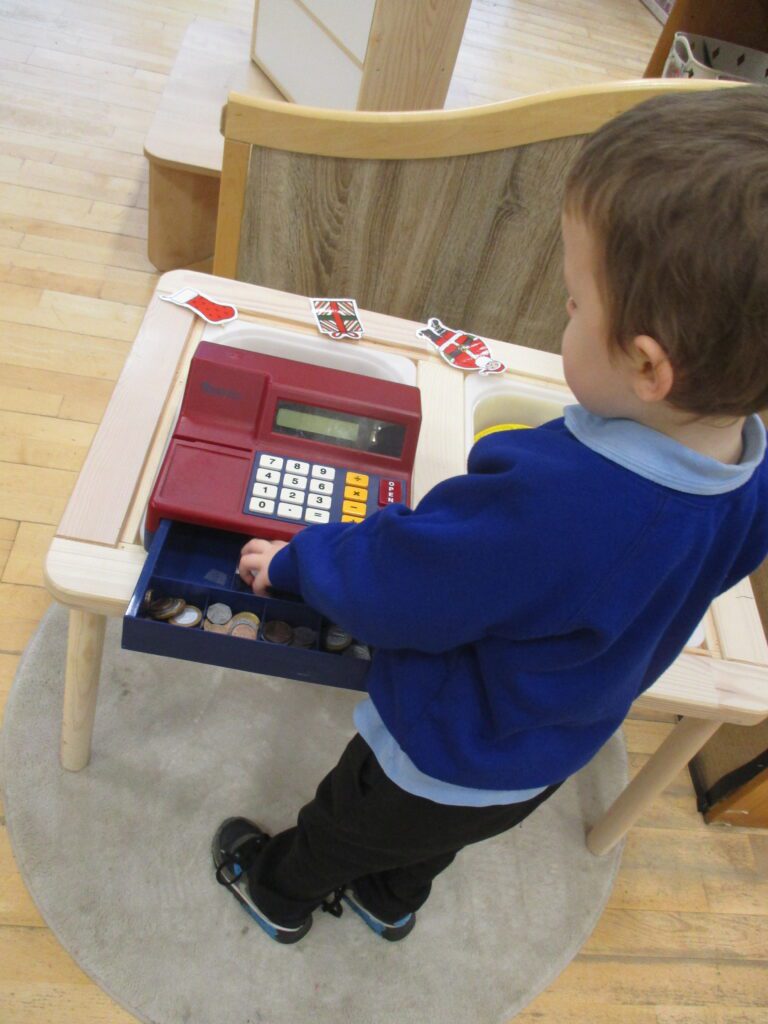
Spring 1 Problem solving day – Conjecturing (2023-2024)
Across the whole school, we took part in a ‘Conjecturing Problem Solving Day’. Each maths class looked at a different conjecture and used their skills and knowledge to investigate it. Take a look at what the children have been up to.
Year 1
Year 1 have been exploring numbers within 20. We worked in groups to use our knowledge of teen numbers to solve some mathematical problems. We enjoyed proving whether the maths problem was right or wrong.
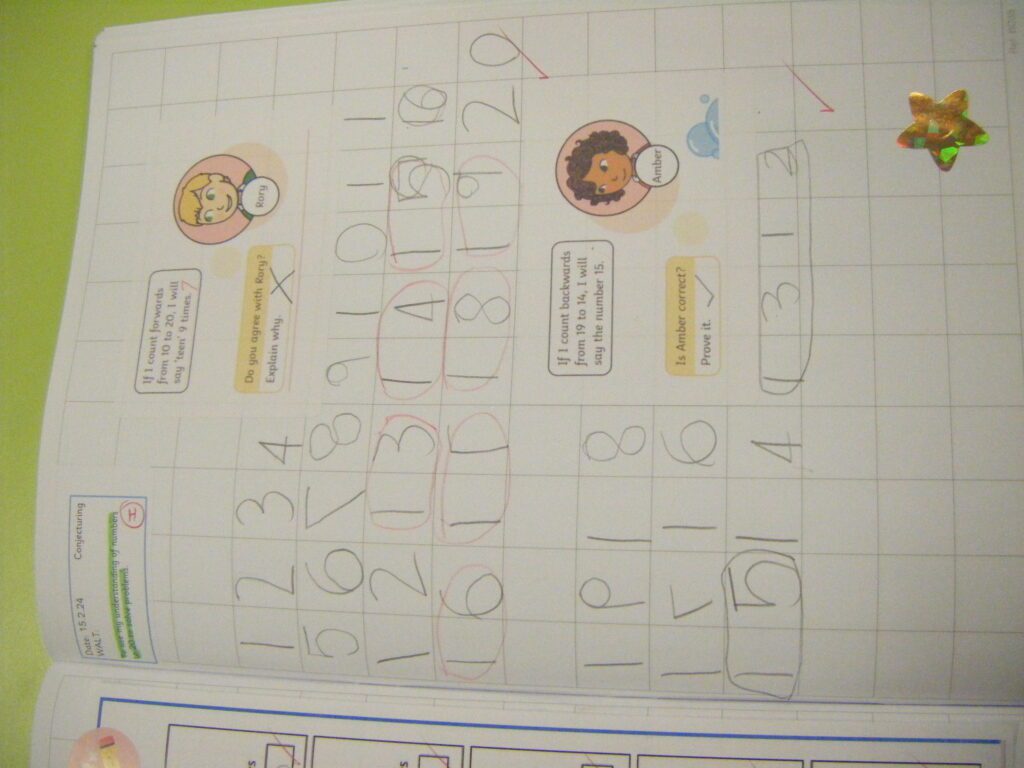
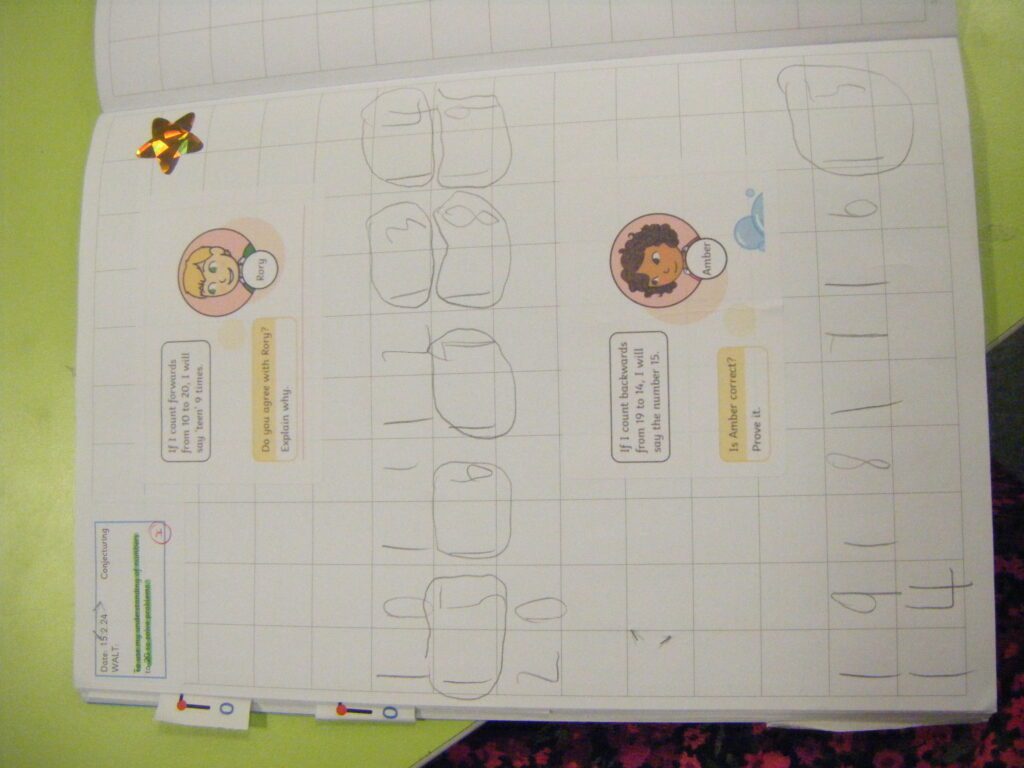
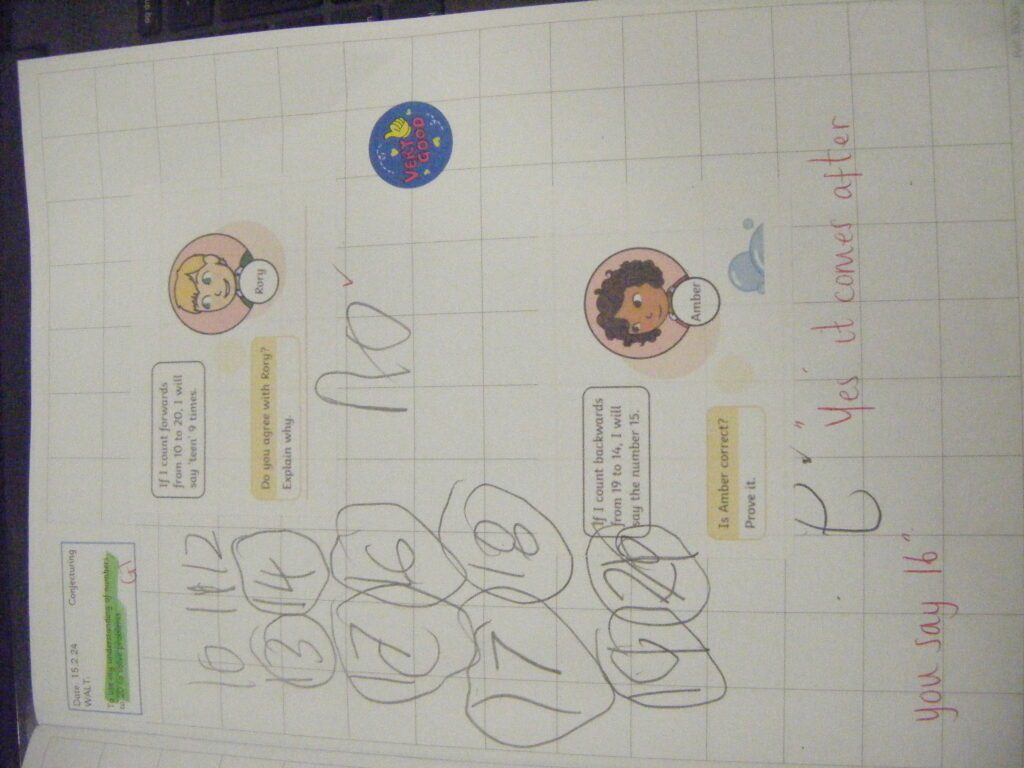
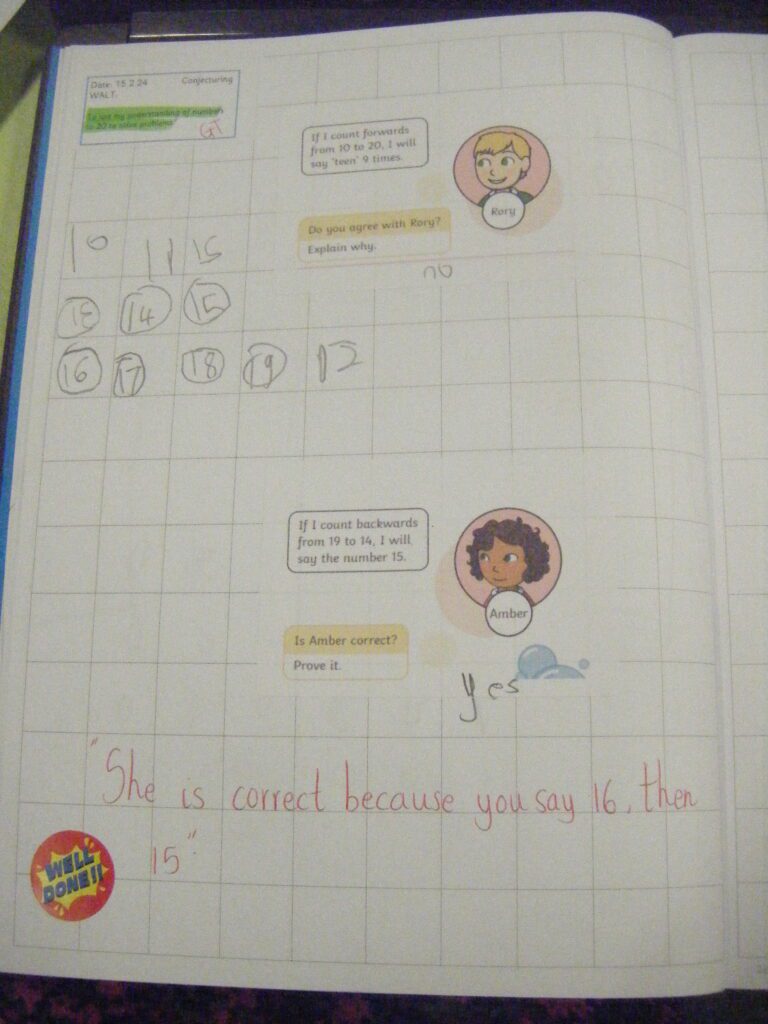
Year 2
Year 2 have been looking at addition with 2 two digit numbers. We investigated adding 2 next door neighour number together and found that whenever you add an odd and even number, the answer will always be odd.
We discussed that this is always the case whenever you add an odd and even number.
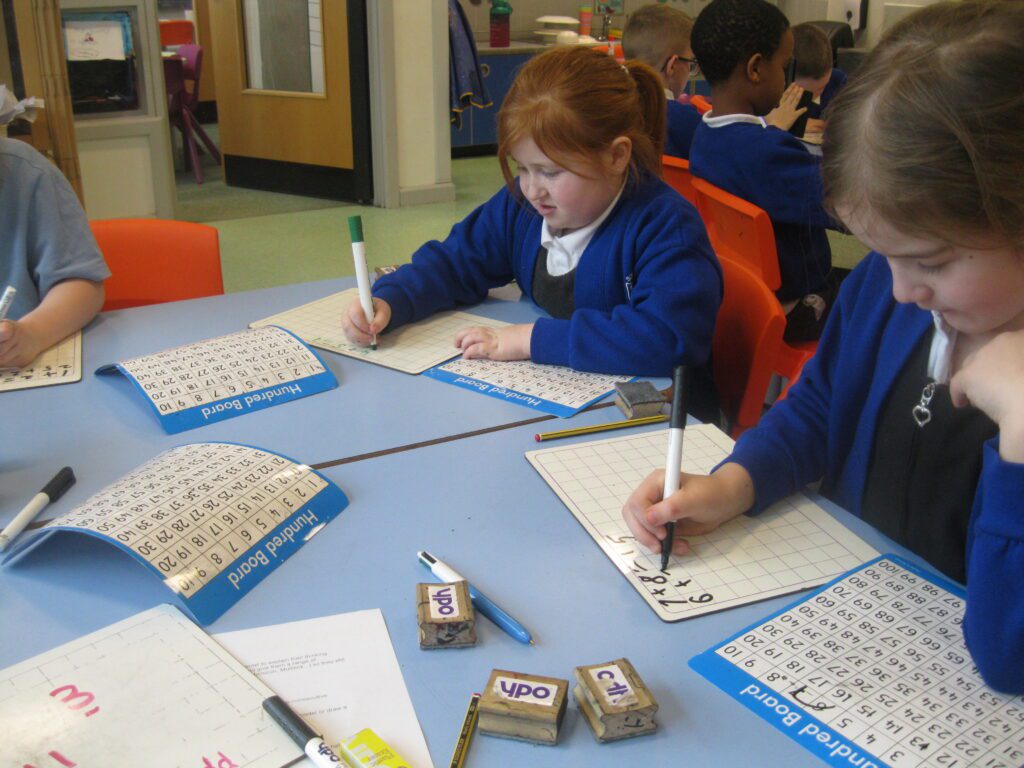
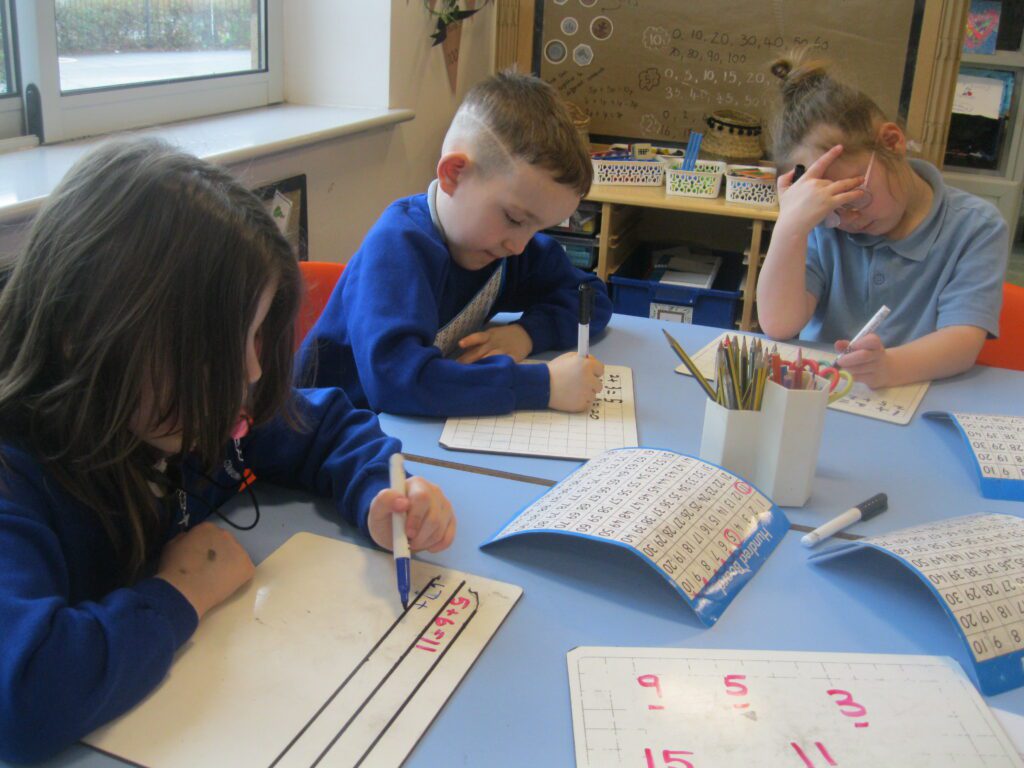
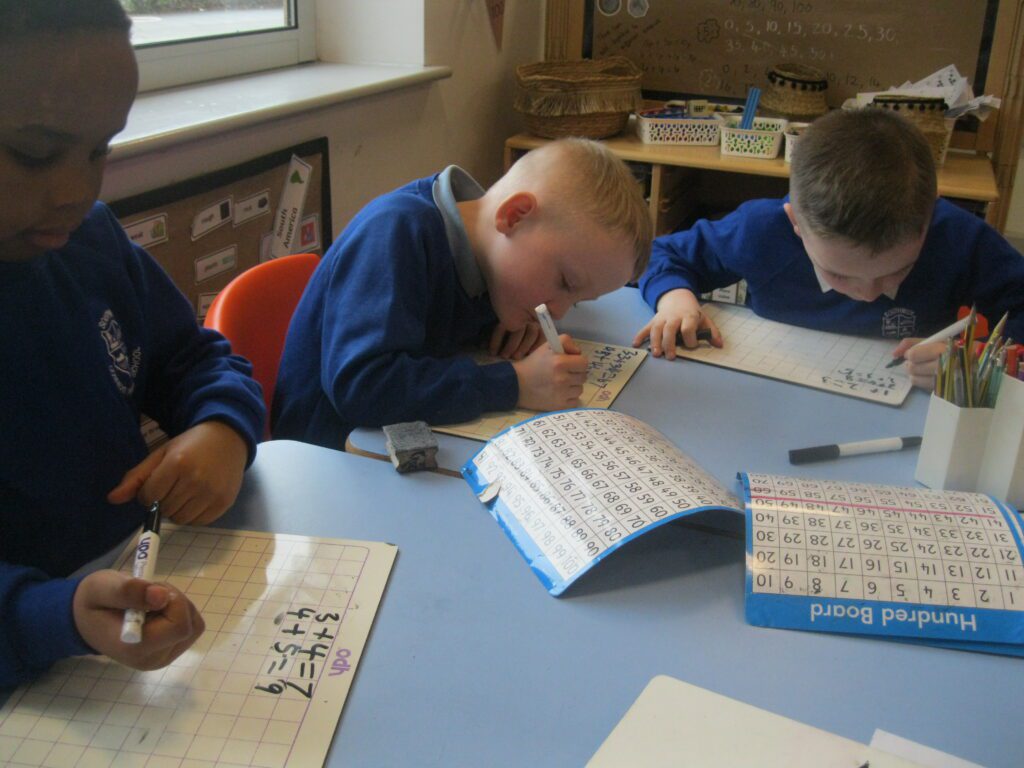
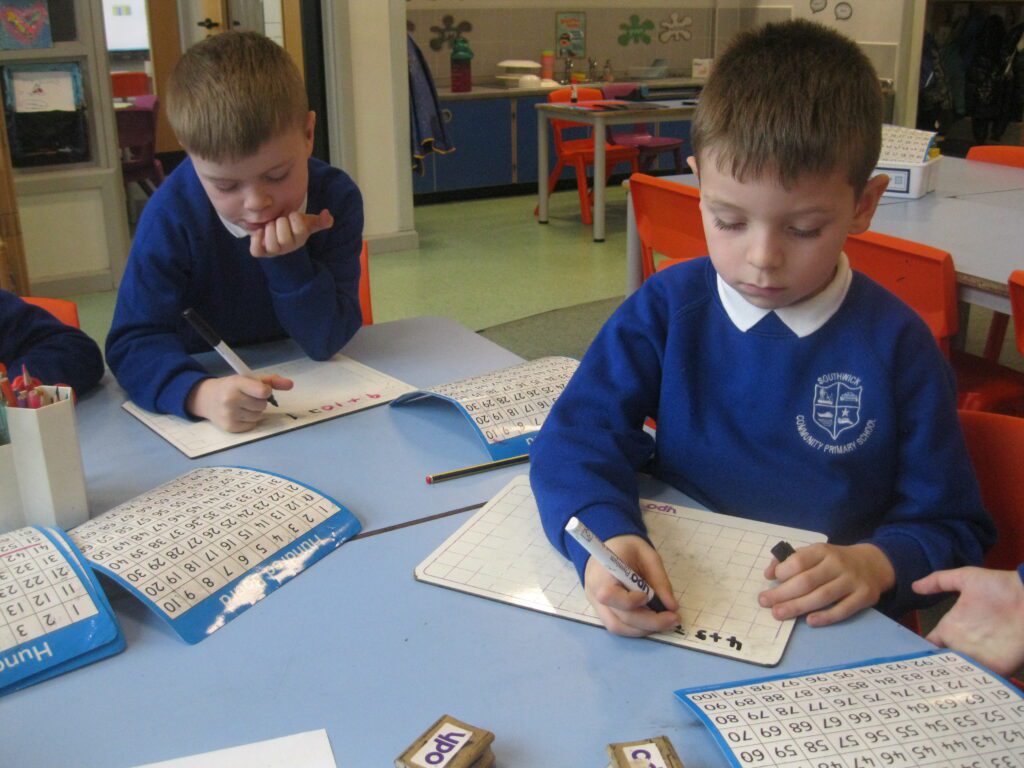
Year 3
Year 3 have been learning about length and perimeter so they investigated the following conjecture, ‘You can make a perimeter larger by making shape smaller’. The children were given rectangle pieces of card. They needed to measure the perimeter of the shape and then try to make the shape smaller but increase the perimeter. They found it very tricky but showed great persistence and determination.
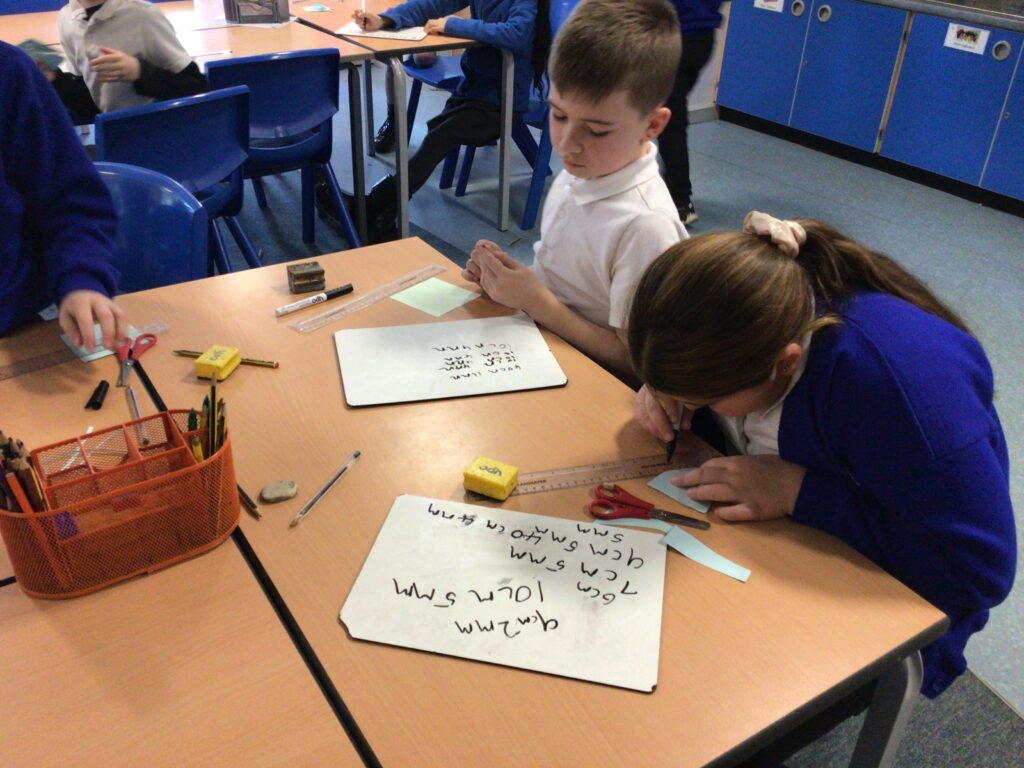
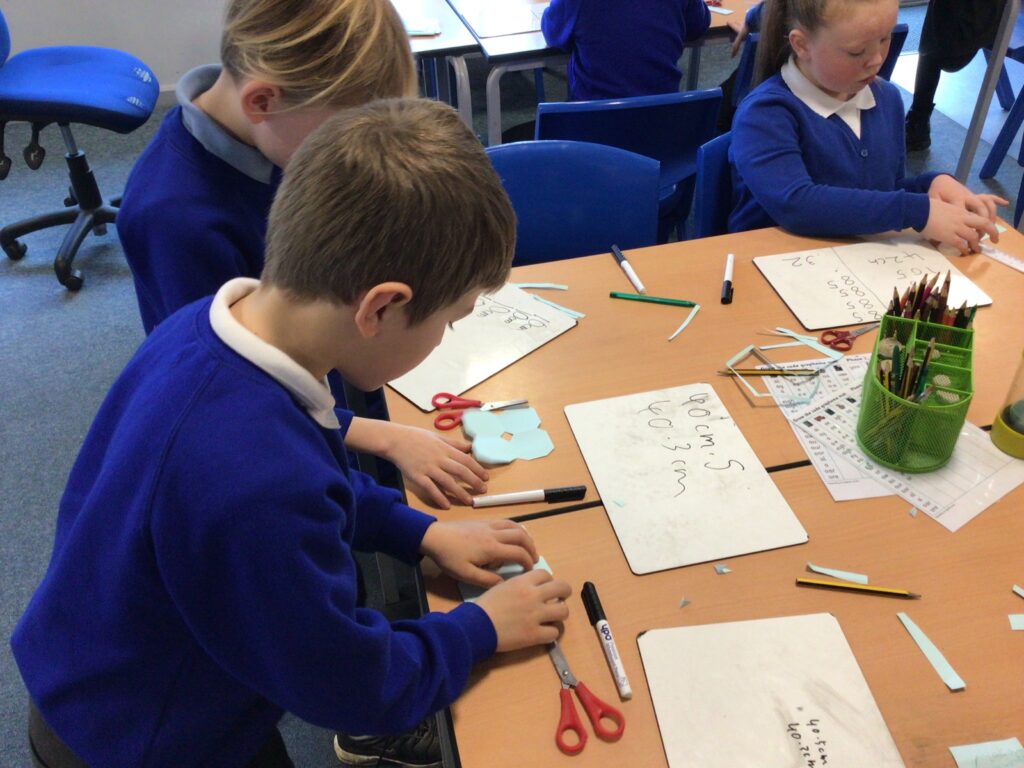
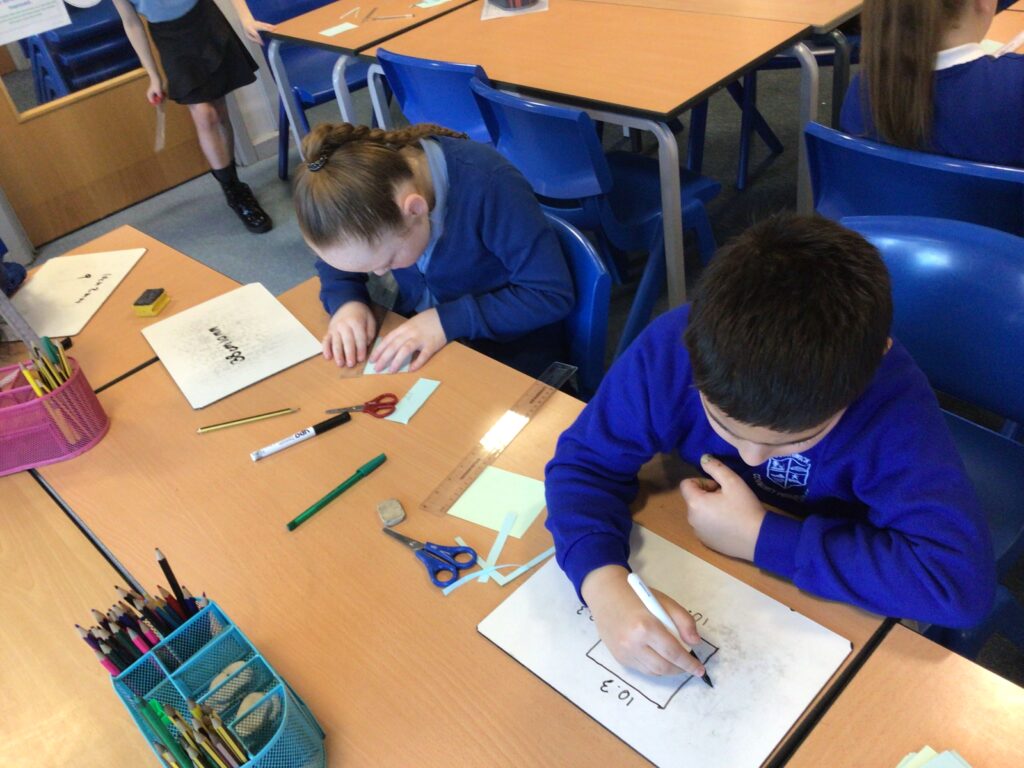
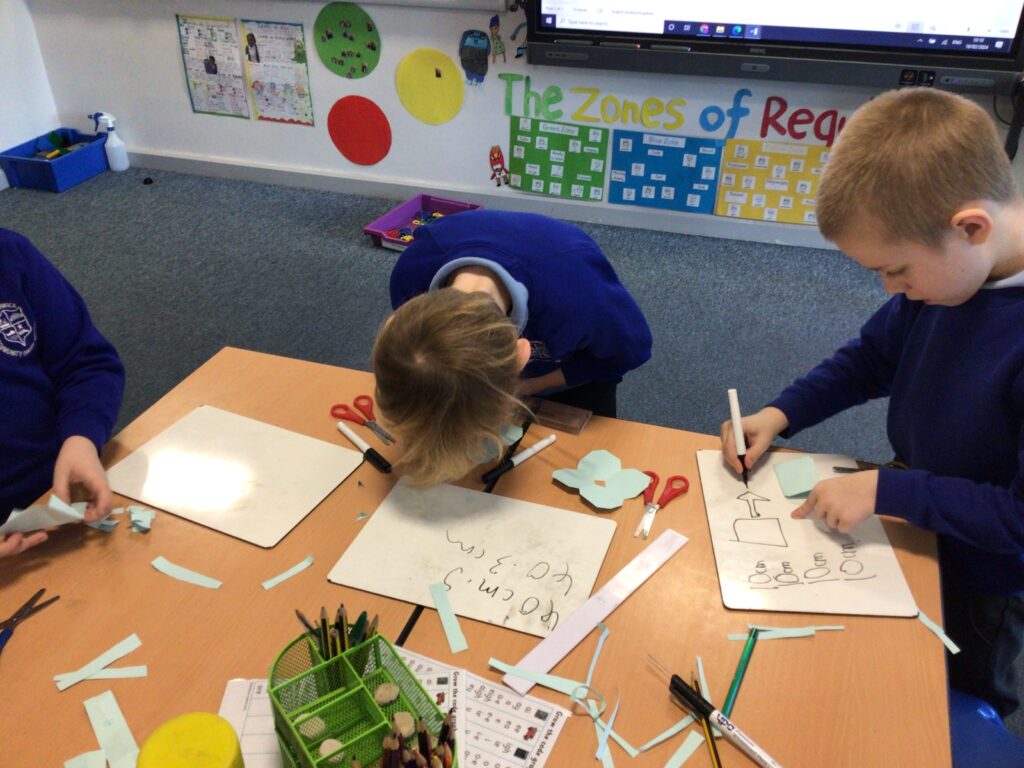
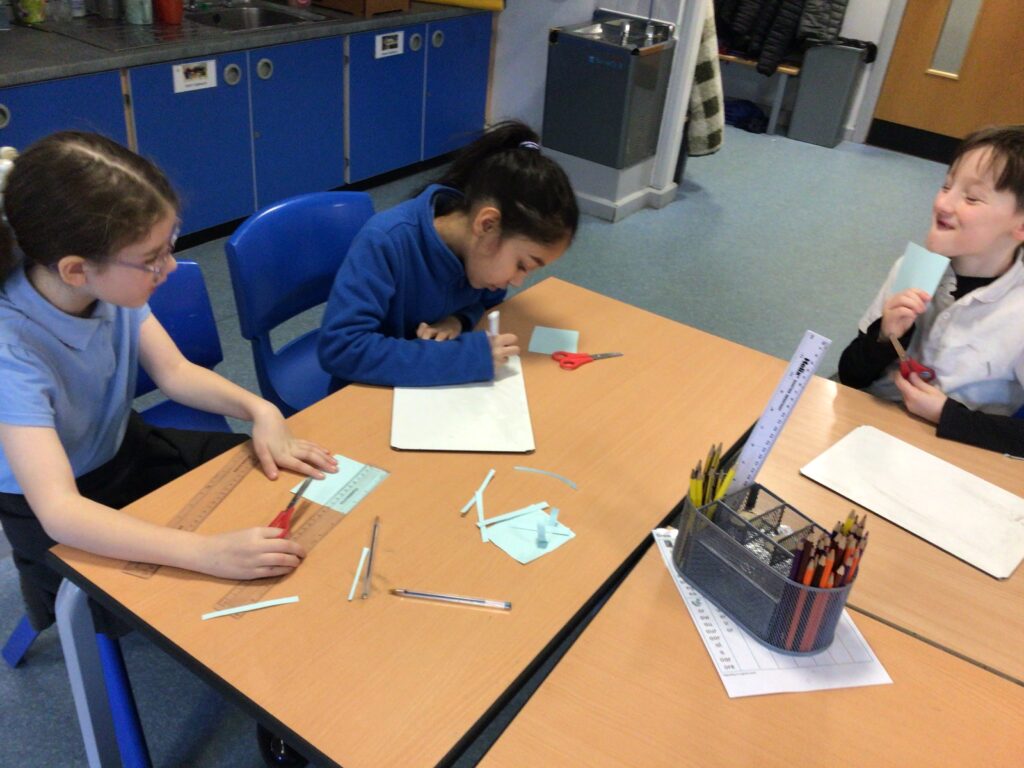
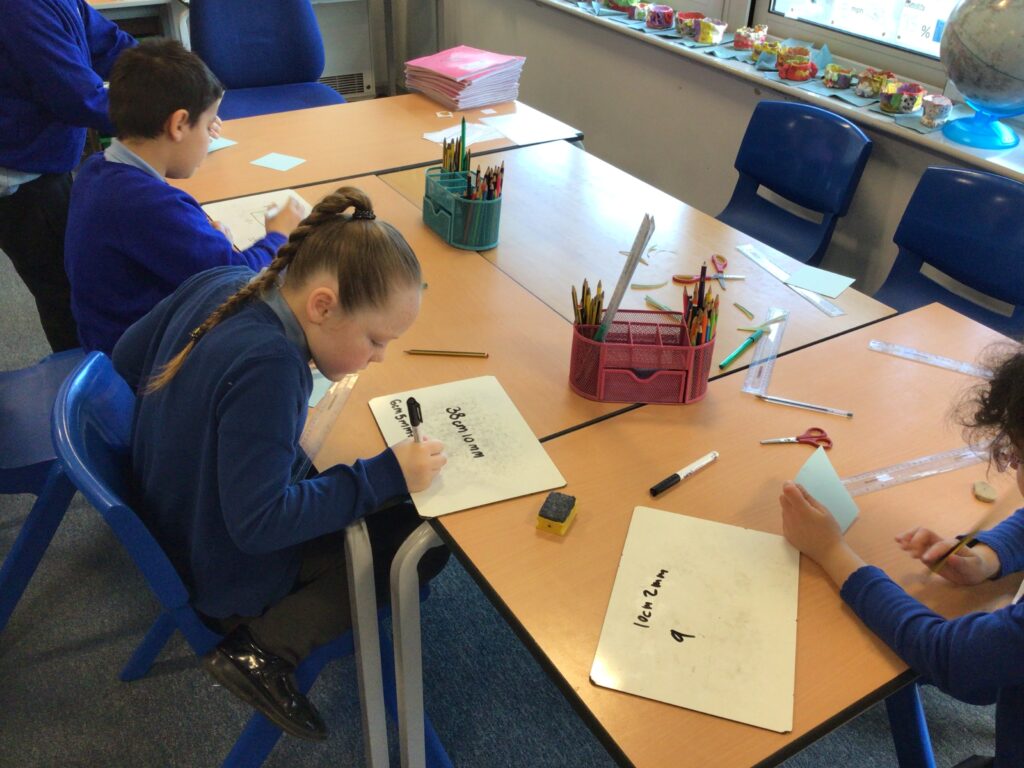
Year 4
Mrs Smith’s maths group looked at a challenge where they had to make their own conjecture. They were so resilient and kept going to try lots of possibilities, each time looking at our previous answers to see if we needed to use bigger or smaller numbers next time. Lola was the first to spot that all of her answers were even and work out that when you add odd numbers you always get an answer that is even! Other children soon realised this too-we have great fun today, practised lots of maths skills and made some excellent discoveries too!
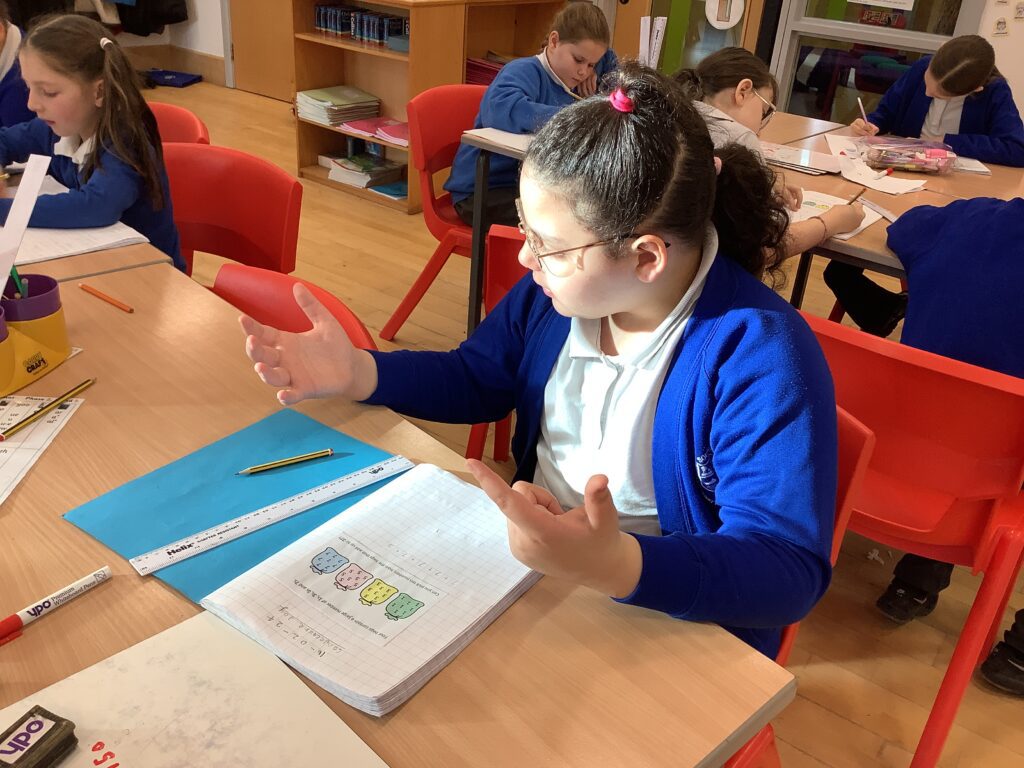
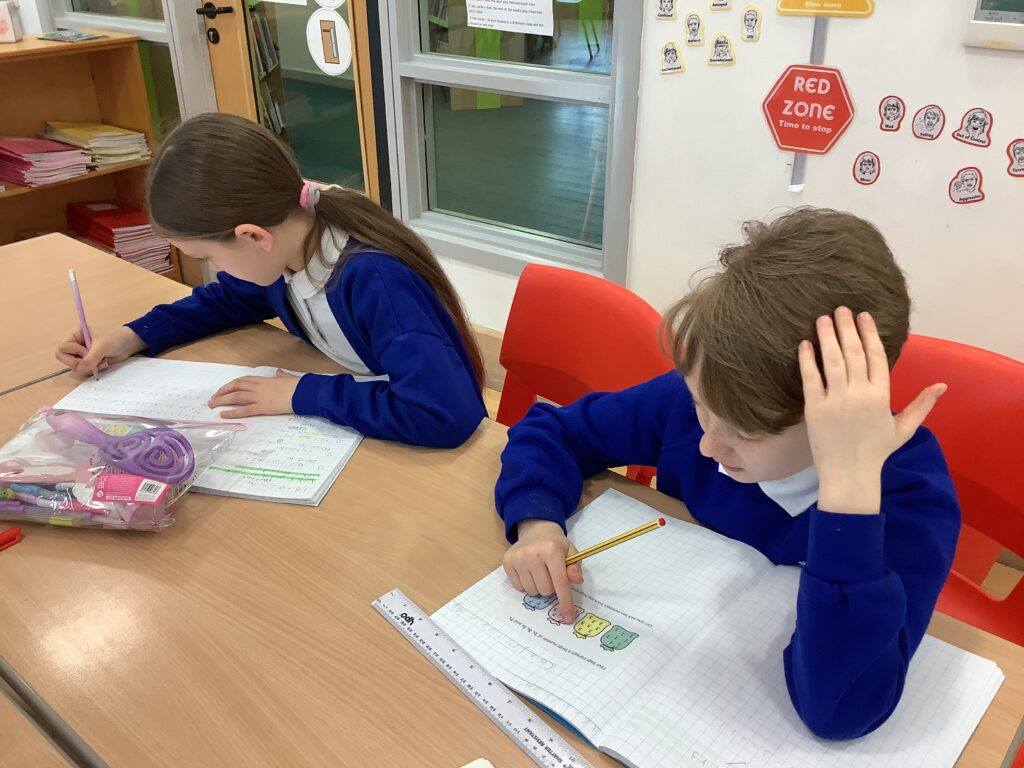
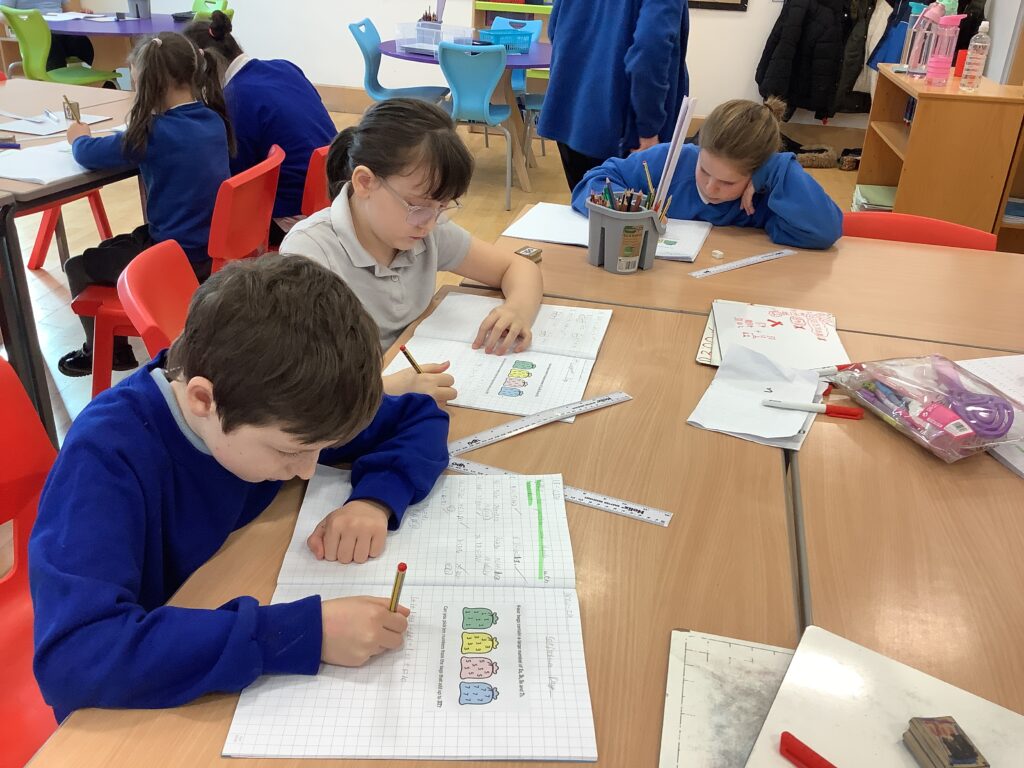
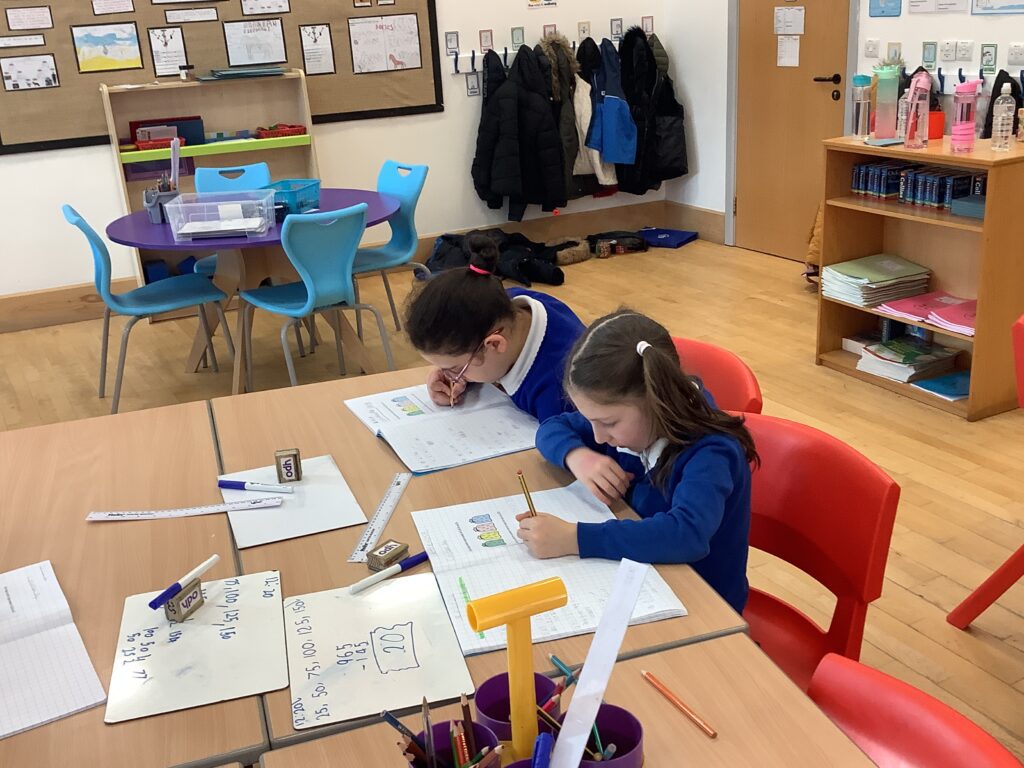
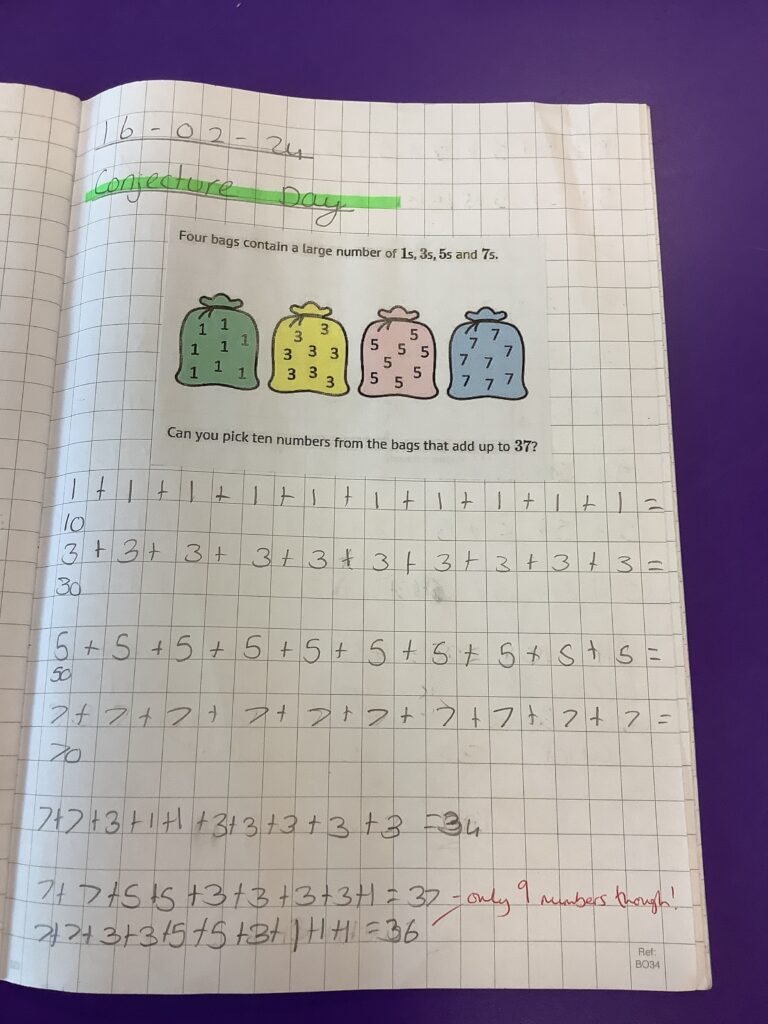
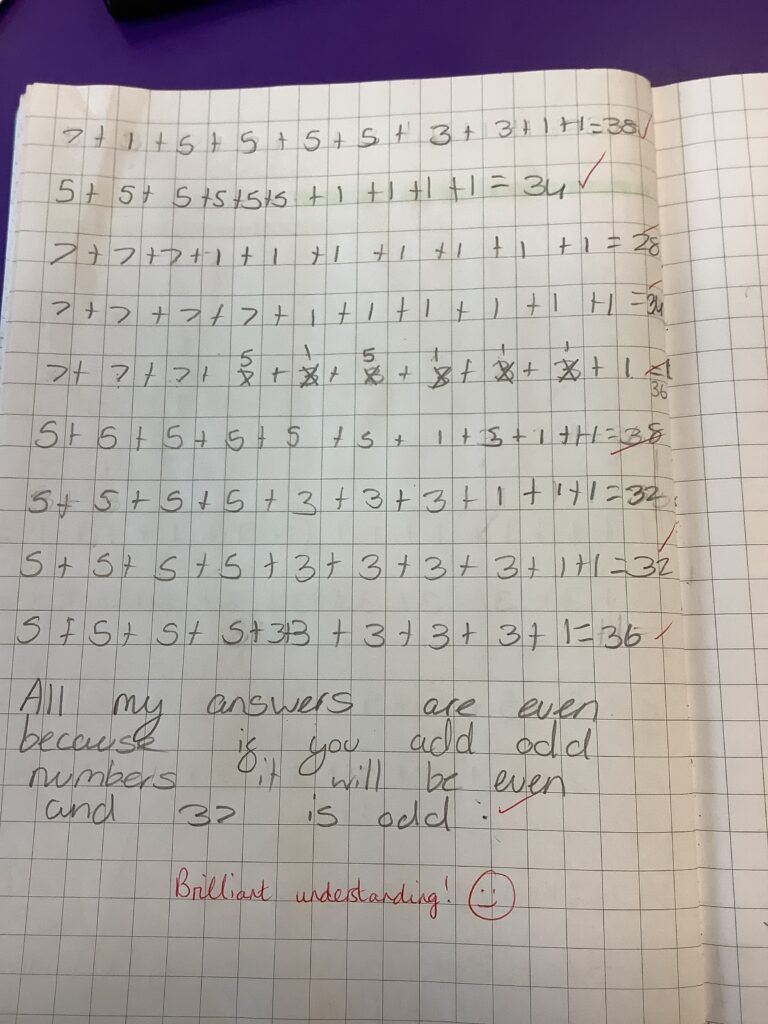
Year 5
We have been looking at written strategies for multiplication. As part of out work we had to test statements and say if they were always, sometimes or never true. We had to provide examples for evidence and we made sure we used different numbers (odd and even).
Another day we were given some statements about numbers and we had to say if they were true or false. We had to test the statements using our knowledge or written multiplication to help us.
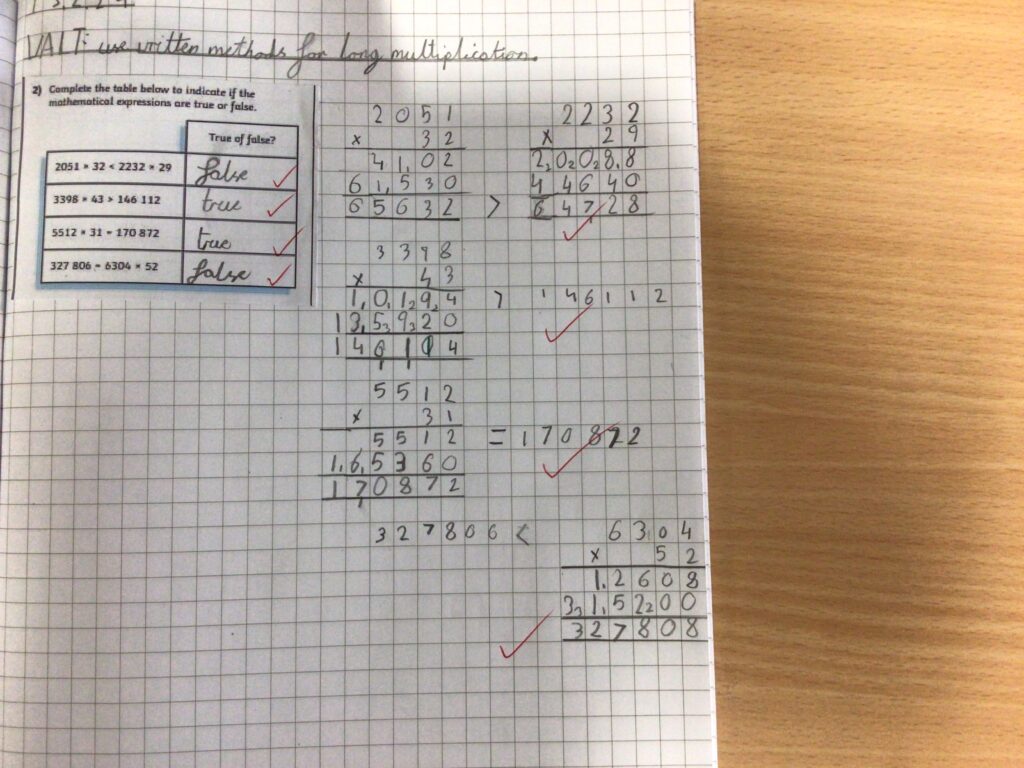
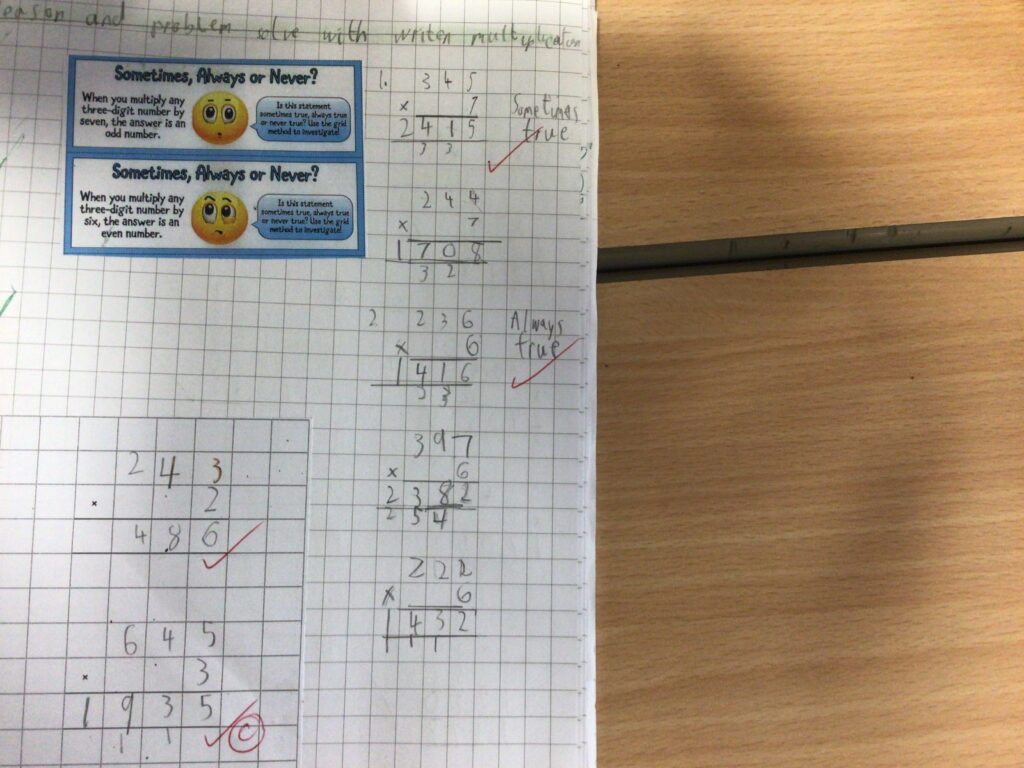
Year 6
Year 6 have been investigating Goldbach’s conjecture, ‘Every even number is the sum of two primes’. The children had lots of fun and showed great determination and perseverance when investigating this conjecture.
Make 8 day
On Friday 30th June, we held a ‘Make 8’problem solving day across the whole school. Each year group had to use the math’s skills their class had been learning to make 8. We had some brilliant pieces of work completed and the children took part in some fabulous lessons.
EYFS
This week in Reception, we have been exploring making 8. We ended the week solving problems with missing numbers and an investigation to make ‘one big triangle’.
In one group, we used concrete resources to compose and decompose the number 8. We explored the different parts that make up the whole, using resources such as tens frames, Numicon, dominoes, dice, counters and cubes. Some of us even recorded these in number sentences!
The other group used our number knowledge to explain that eight is made up of different numbers. We then explored this further by recording our number facts using different equipment such as bar models and part whole models.
We then used our knowledge to solve the problem ‘one big triangle’. We were challenged to arrange our 8 triangles to make one large triangle, so the numbers that touched, added up to 8. We were given the first triangle and then we had to work together in teams to find out where the other parts went. We had lots of fun solving the problem!
Year 1
Mrs Woodey wrote the number 8 on the board and asked us to tell her everything we knew about 8. We worked in perfect partners to share our thoughts and ideas, before sharing our ideas as a group. We discussed how you can make 8 through addition and subtraction, finding the inverse and communitive. We recalled our doubling and halving knowledge and how we knew it was an even number. We also used different mathematical equipment to represent the number using tens and ones and numicon. Mrs Woodey was very impressed at all the different ways we could make 8!
In Miss Dickinson’s class, we were challenged to think of everything we know about number 8. We worked in perfect partners to discuss what we already knew, then shared our answers to the class. We discussed number 8’s role in number bonds to 10, comparing number 8 to other numbers and how it can be represented in many ways. We were fascinated that 8 could be part of so many different mathematical skills.
Year 2
Our make 8 challenge was all about measuring out different amounts. This is because our focus in maths this half term has been length and height and weight and volume. We made 8 using different units of measure such as centimetres, millilitres, grams and cups. To do this we used scales, rulers and measuring jugs to measure 8 accurately. We even used our halving knowledge to half 8 to balance the scales using cubes.
Year 3
For maths day we were challenged to ‘make 8’. The children loved having the opportunity to be creative and think outside of the box. The children came up with lots of ways to make 8, recapping all of the maths domains covered this year. The children made 8 through addition, subtraction, multiplication and division calculations, they used Roman numerals to make 8, different representations (part-whole model, place value grid, tally, on the clock), they made 8 through the addition and subtraction of fractions, they added decimal numbers to make and 8 and some children even wrote their own word problems where the answer would be 8. They had so much fun and really challenged their growth mind set.
Year 4
Mrs Stephenson’s maths group worked with ‘What is my number?’ problem. We wrote our very own ‘What is my number?’ problem where the number we stared with was 8.
We knew we had to work backwards to check that our instructions were correct.
Mrs Waddell and Mrs Seaman’s maths group were challenged to find a variety of ways of asking questions to make 8. We had to create questions using the different mathematical operations and ideas that we knew. We started using one operation and then we used 2 or more mathematical operations. It was certainly challenging but we had lots of fun.
Year 5
We were set the challenge to make 8 in lots of different ways. It was the perfect way for us to apply and consolidate our learning this year. Our teachers were really impressed with our team work and resilience. These are some of the different ways we made 8:
- Multiplying and dividing decimals
- Adding and subtracting Roman numerals
- Shapes with a perimeter of 8
- Number which round to 8 (including numbers with more than 1 d.p.)
- Shapes with an area of 8
- Adding and subtracting decimals (up to 3 d.p.)
- Add and Subtract fractions (improper/mixed numbers)
- Fractions that equal 8
Year 6
Mrs. Smith’s Math’s Group looked at time, ratio, decimals and x and ÷ by 10, 100 and 100 to really challenge ourselves with some complex calculations. We also made 8 in Binary Code as we have learned all about this in ICT!
Miss Hetherington’s Math’s Group looked at times tables and division facts, percentages and rounding as we have had a big focus on these areas this year-we were aware that for subtraction there were infinite possibilities!
Miss Slater’s Math’s Group decided to make 8 using fractions, decimals and multiplication and division facts. We loved our work on perimeter so decided to include this too!
Money Maths Day
On Friday 21st October, we held out first ‘real life maths’ day of the year, celebrating money and it’s importance in the ‘real world’.
We linked the day, to the theme of Autumn term by ‘giving’ donations to the local pet charity Bryson’s, continuing and celebrating the work from our Harvest celebration.
Each year group gathered donations and used money throughout the day, taking part in a range of activities.
Maths ‘superstar’ certificates were handed to children who had shown excellence throughout the day.
Year 1
In year 1 for Maths Day and we have been learning all about money. We discussed what we use money for and explored different coins from 1p to £2. We used the spare change we brought in to go shopping and took turns in buying different items from the shop keeper. We also practised counting out pennies to match them to an amount and played a shopping game on the IWB.

















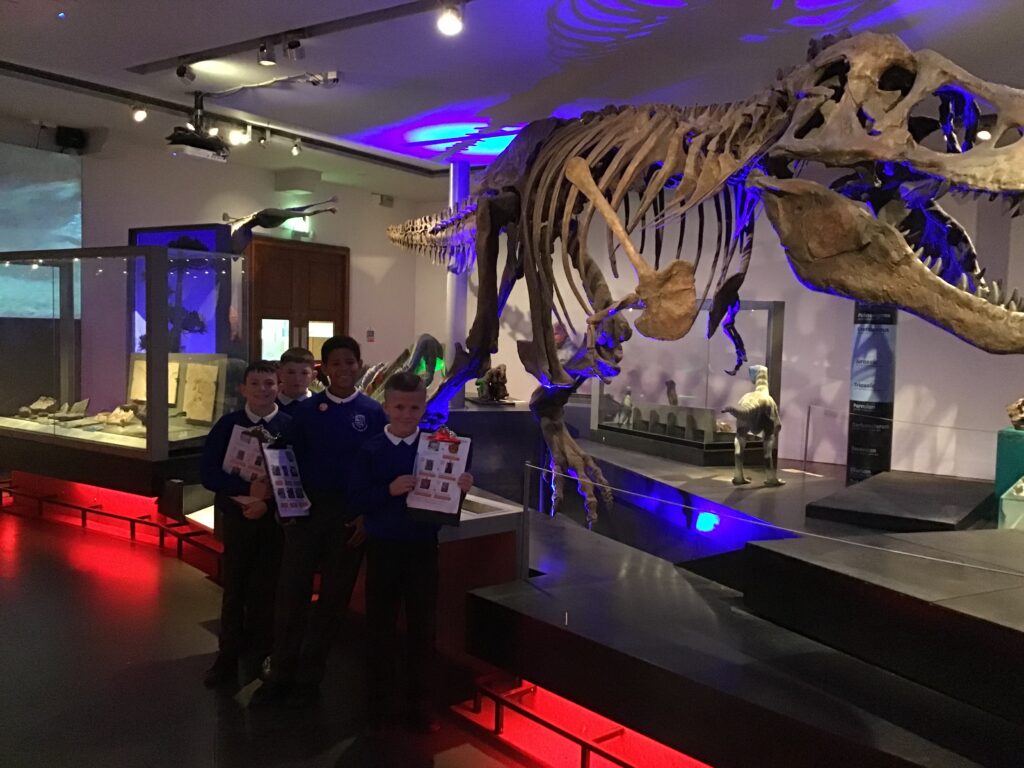











Year 2
Today we looked at the real life purpose of money, why we use it, what it is for and discussed money management.
As a whole school, we collected loose change to help support a local charity. During the day, we used the change brought in to create a collage representing the importance of the charity.
We were given a selection of coins and used these to create some wonderful animals. We loved being creative and looking at the different ways we could use the same coin and the different combinations we could make. We loved exploring and creating a visual image using the coins. Take a look at some of our complete designs.
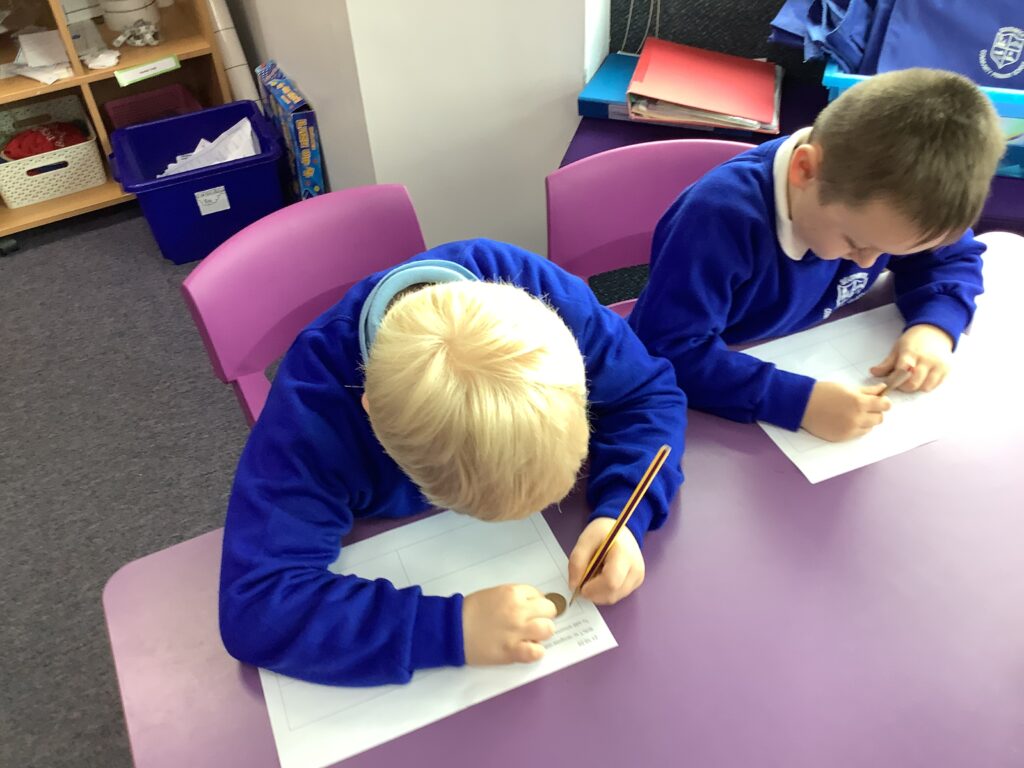
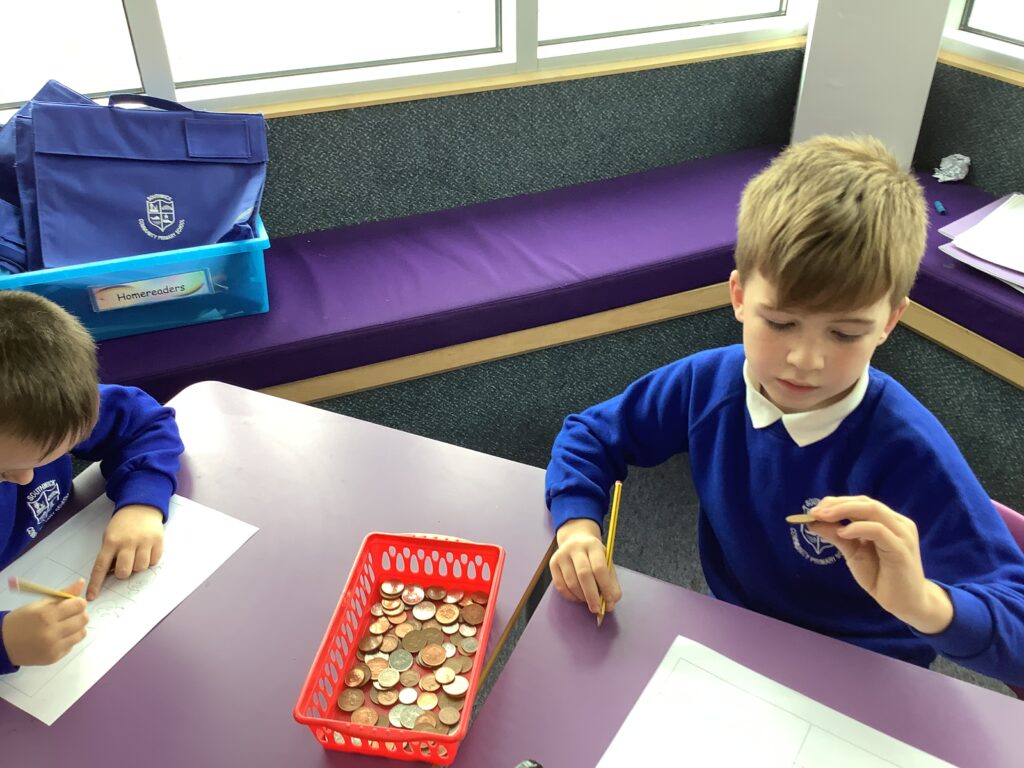
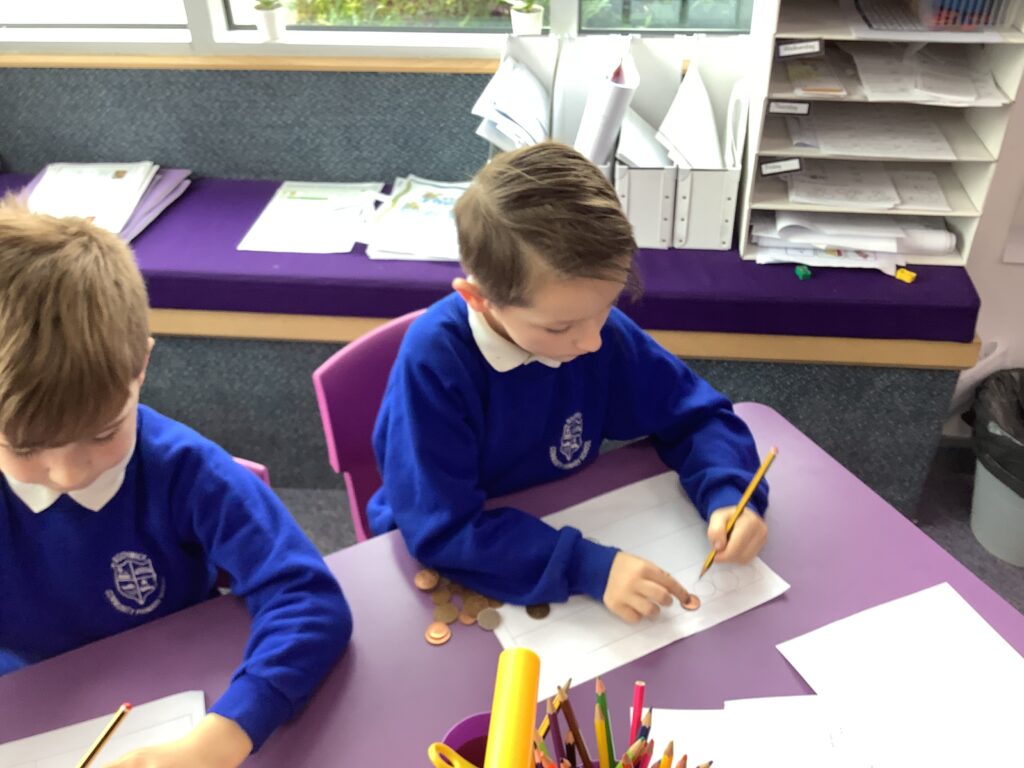
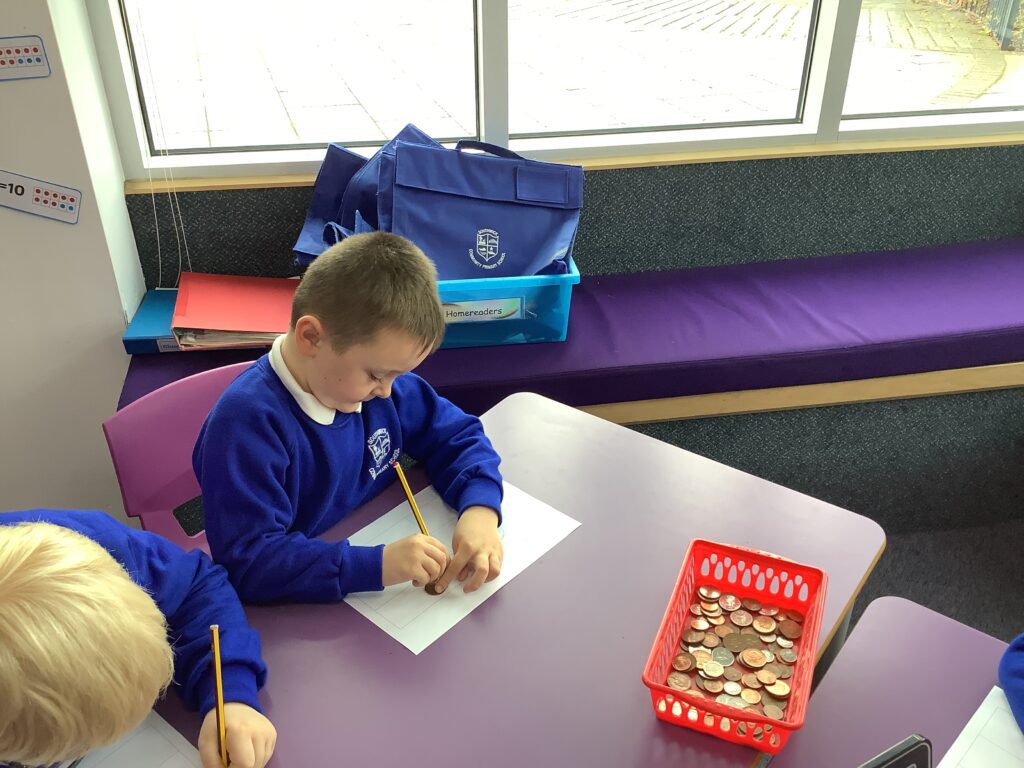
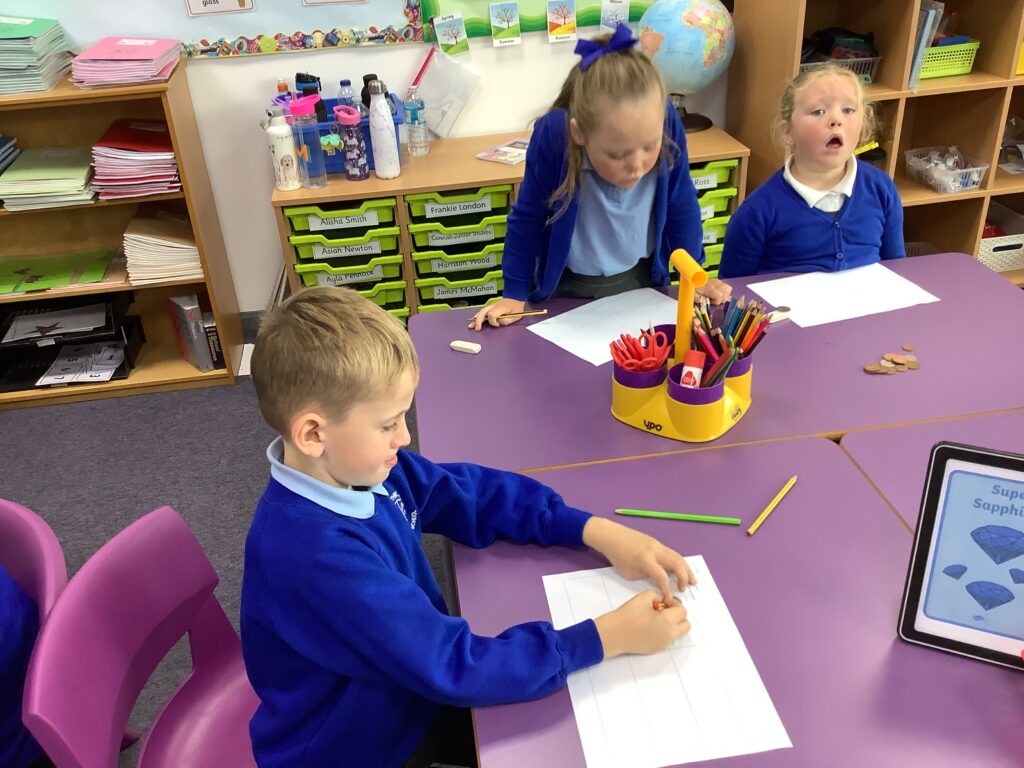
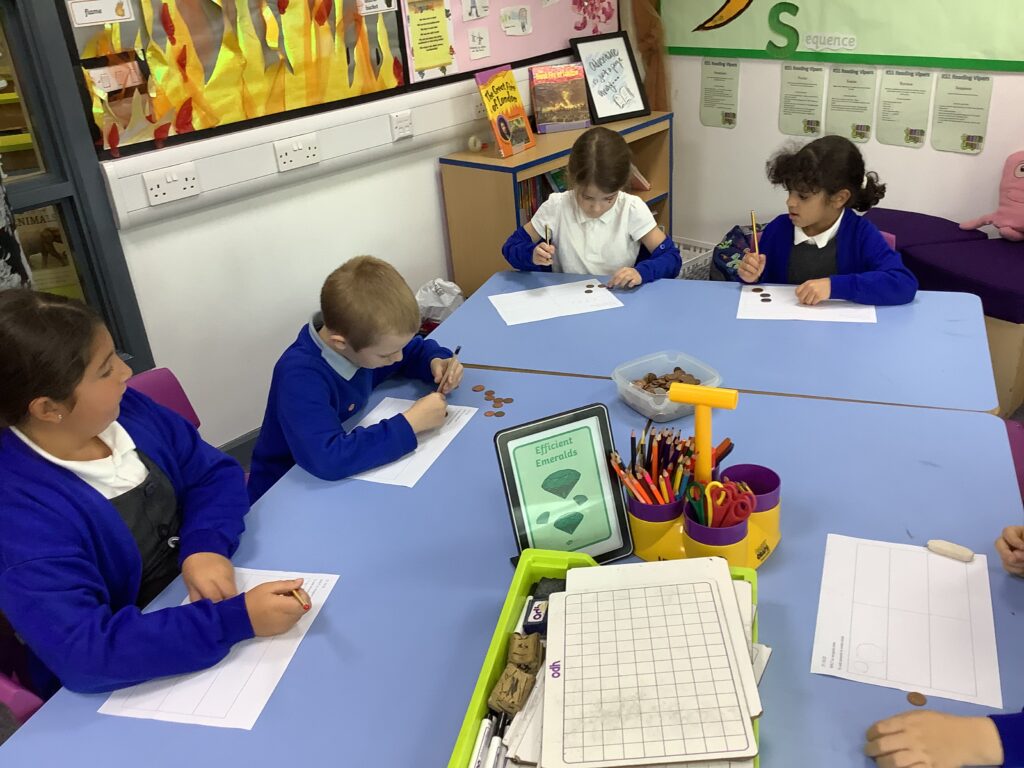
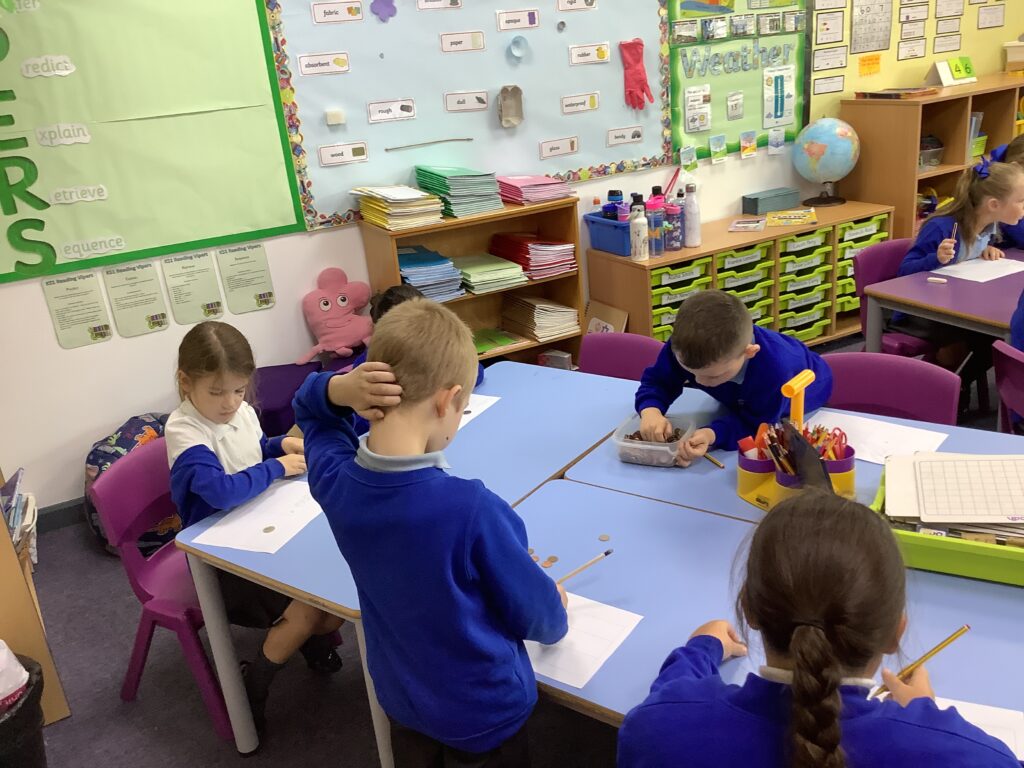
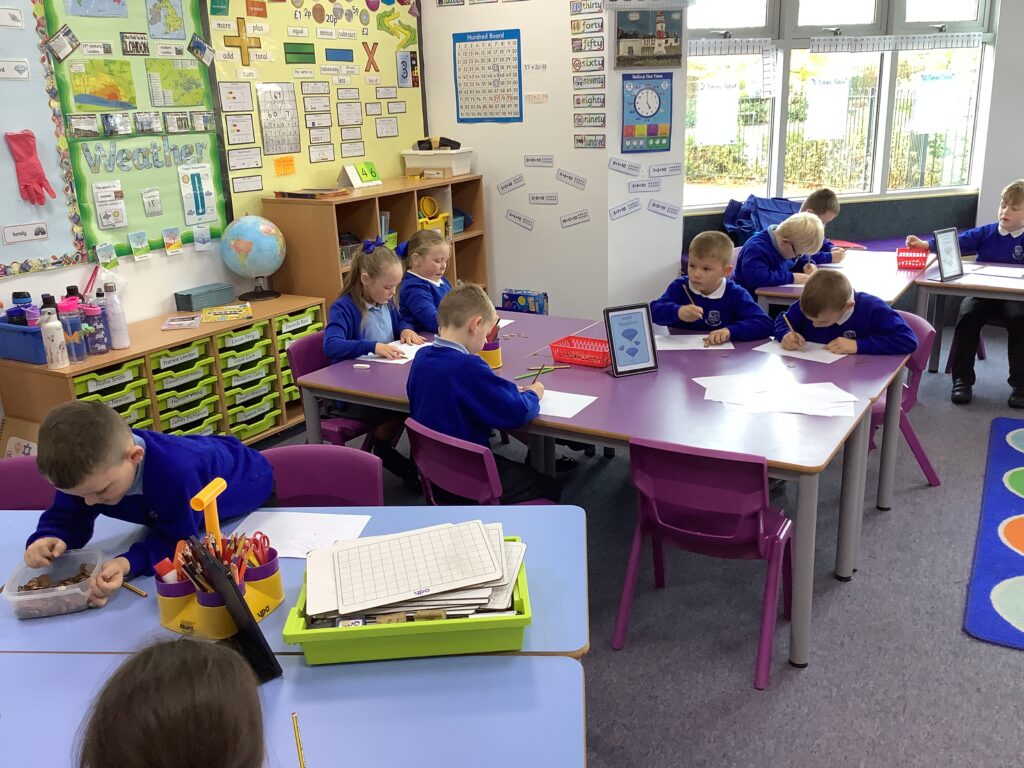
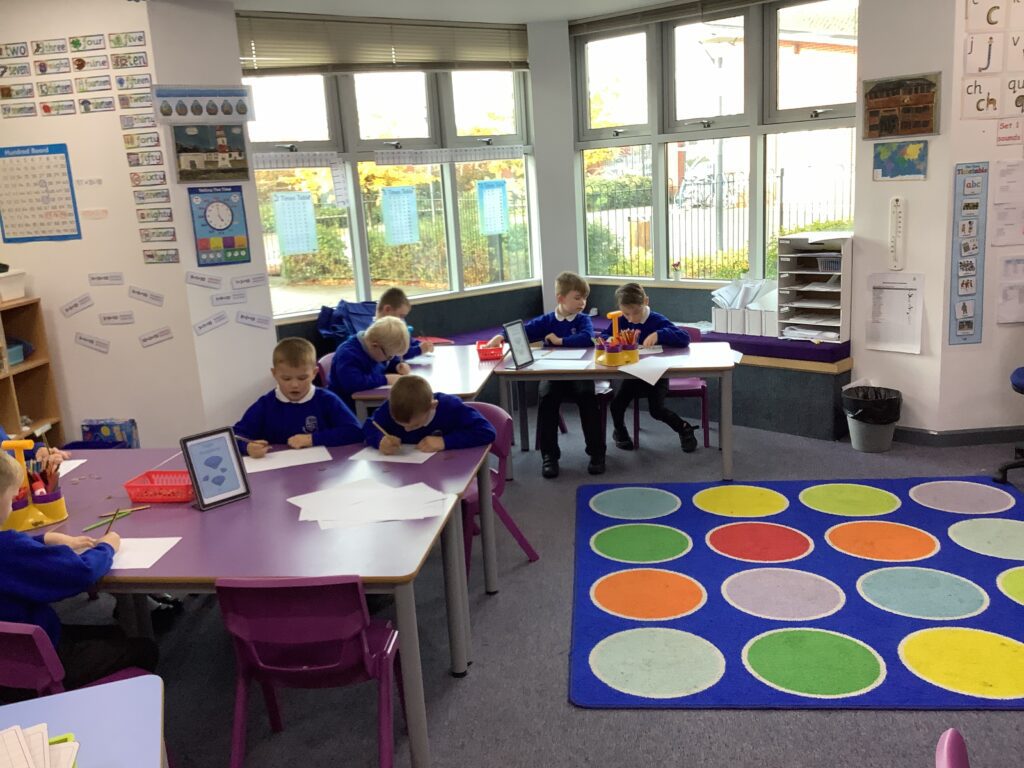
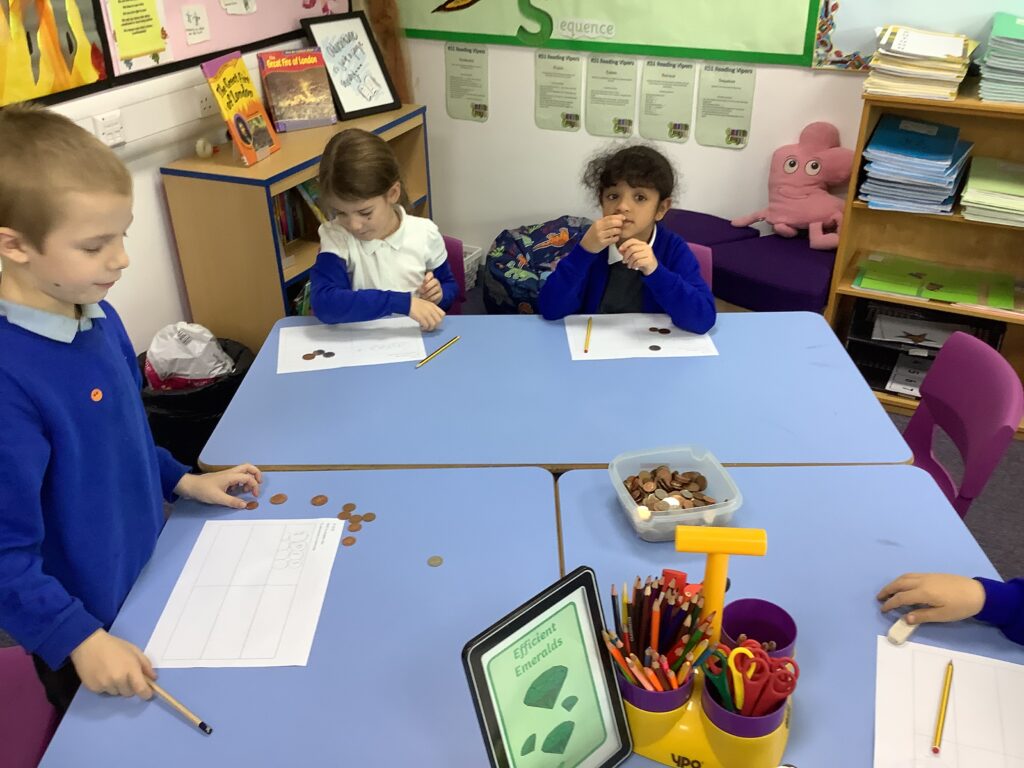
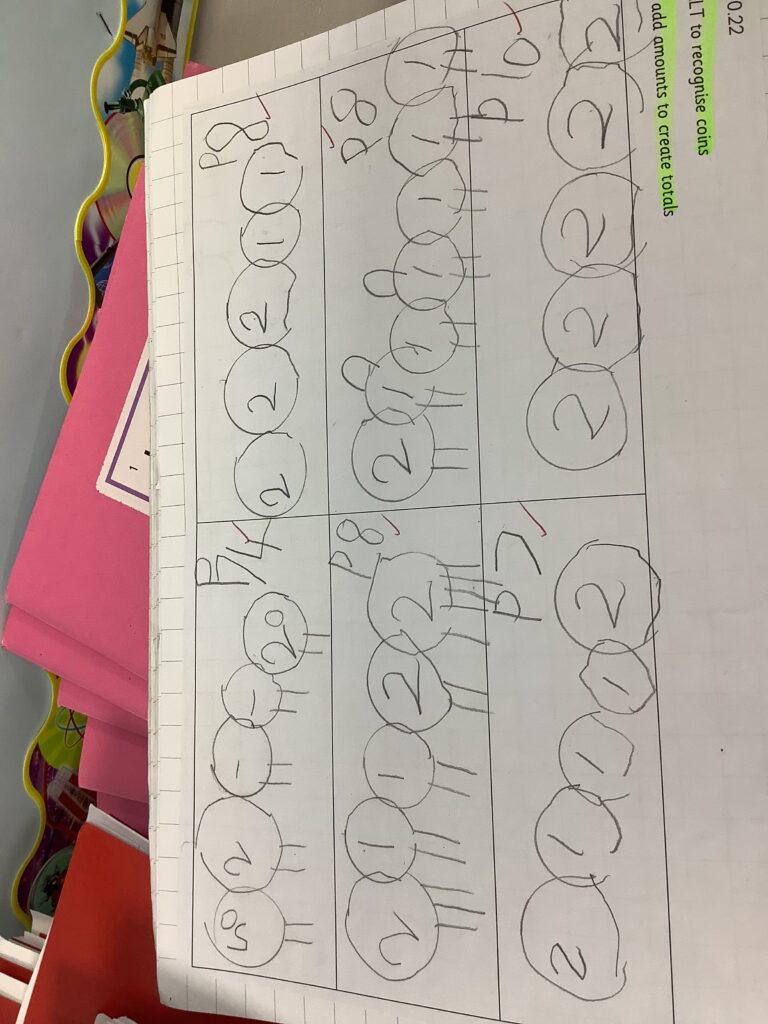
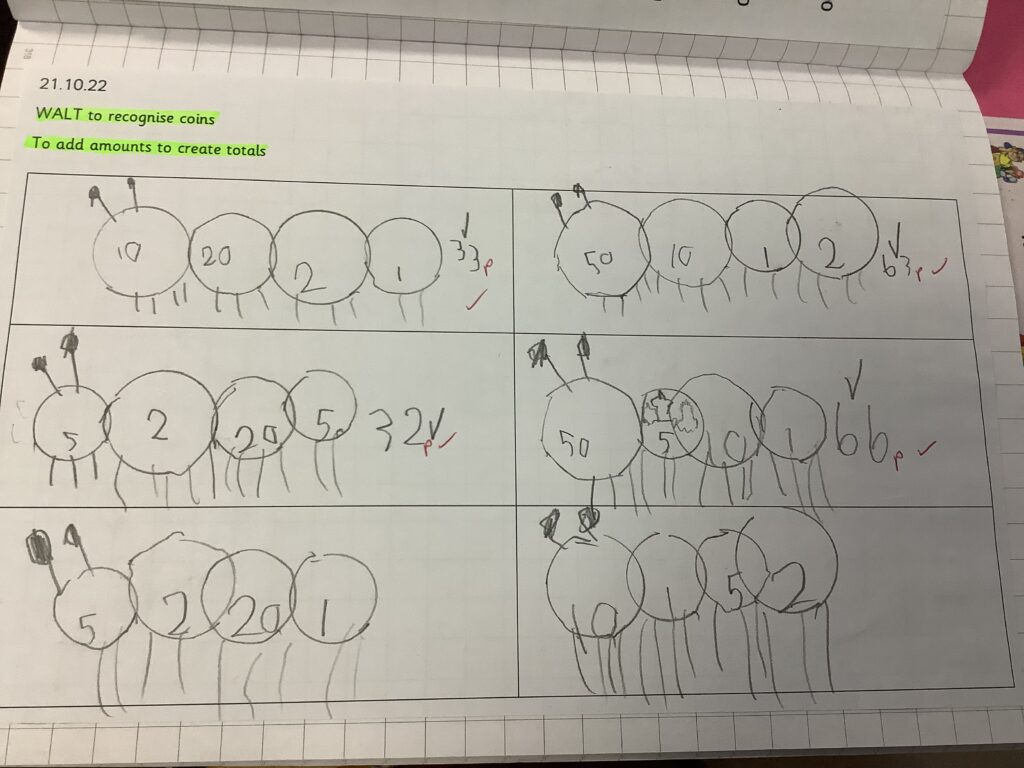
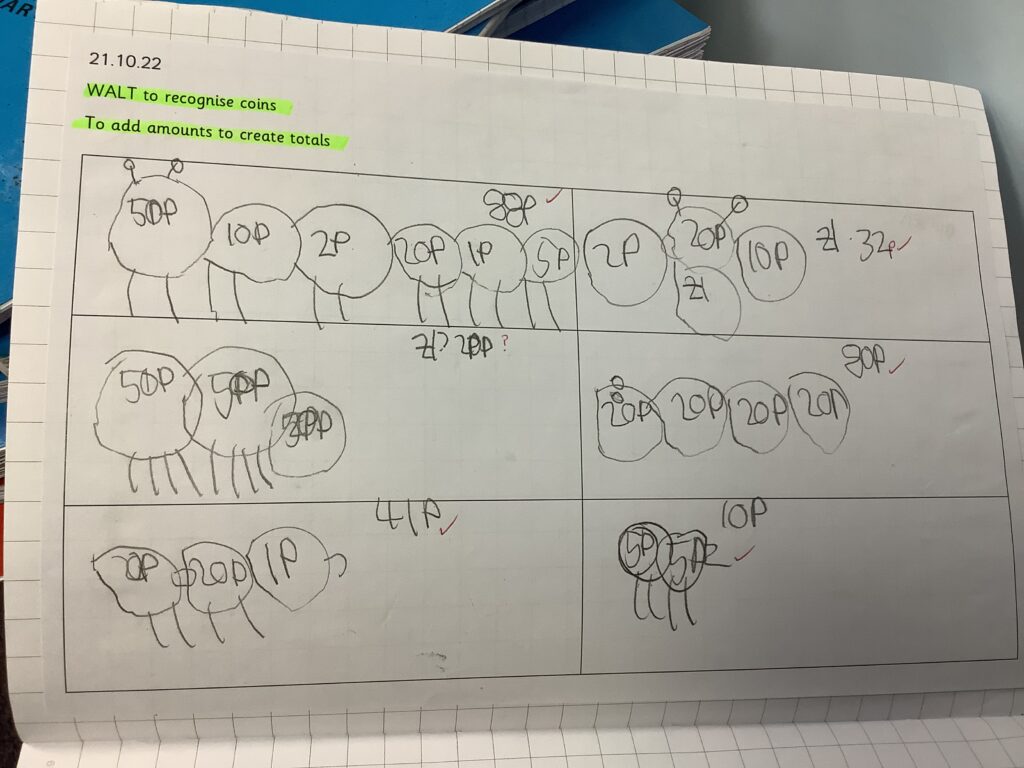
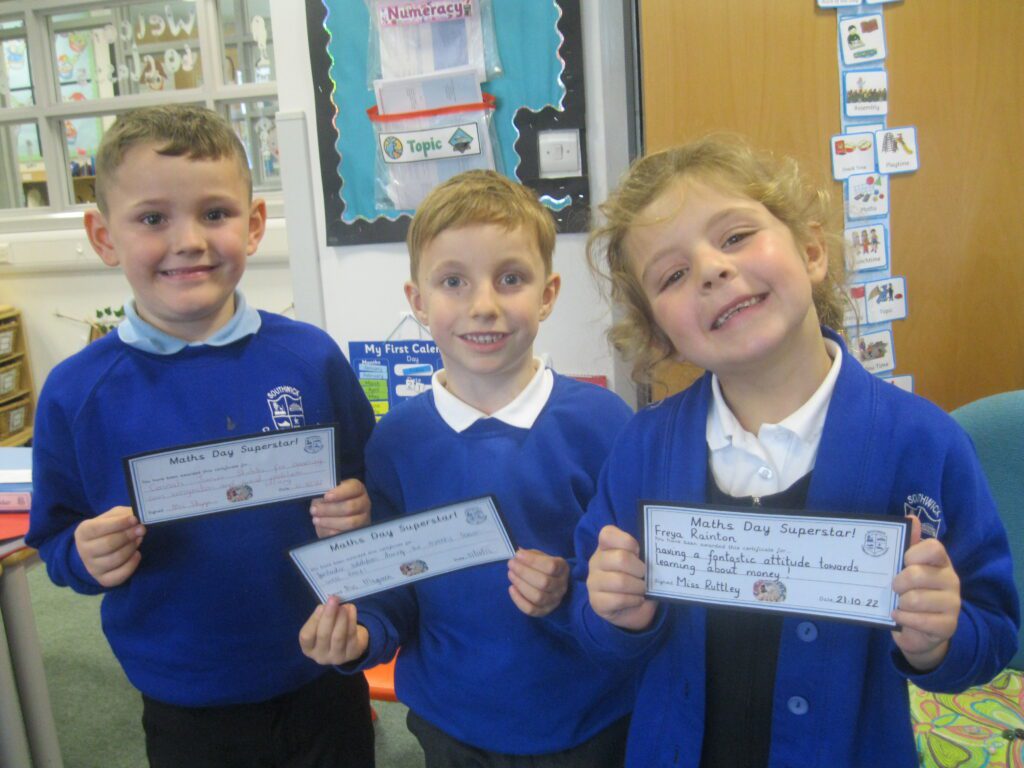
These 3 Year 2 children were awarded the ‘Money Maths Superstar’ certificates because they were fabulous when adding different coins together! They investigated different ways to make amounts with the most and fewest coins they could manage.
Year 3
Today we looked at the real life purpose of money, why we use it, what it is for and discussed money management.
As a whole school, we collected loose change to help support a local charity. During the day, we used the change brought in to create a collage representing the importance of the charity.
We were given a criteria to follow regarding how many of each coin could be used and were introduced to a tally to track the usage of the coins. We loves exploring and creating a visual image using the coins. Take a look at some of our complete designs.
We also completed activities using our current place value knowledge to generate some money caterpillars, reinforcing our counting in 2’s, 5’s and 10’s.
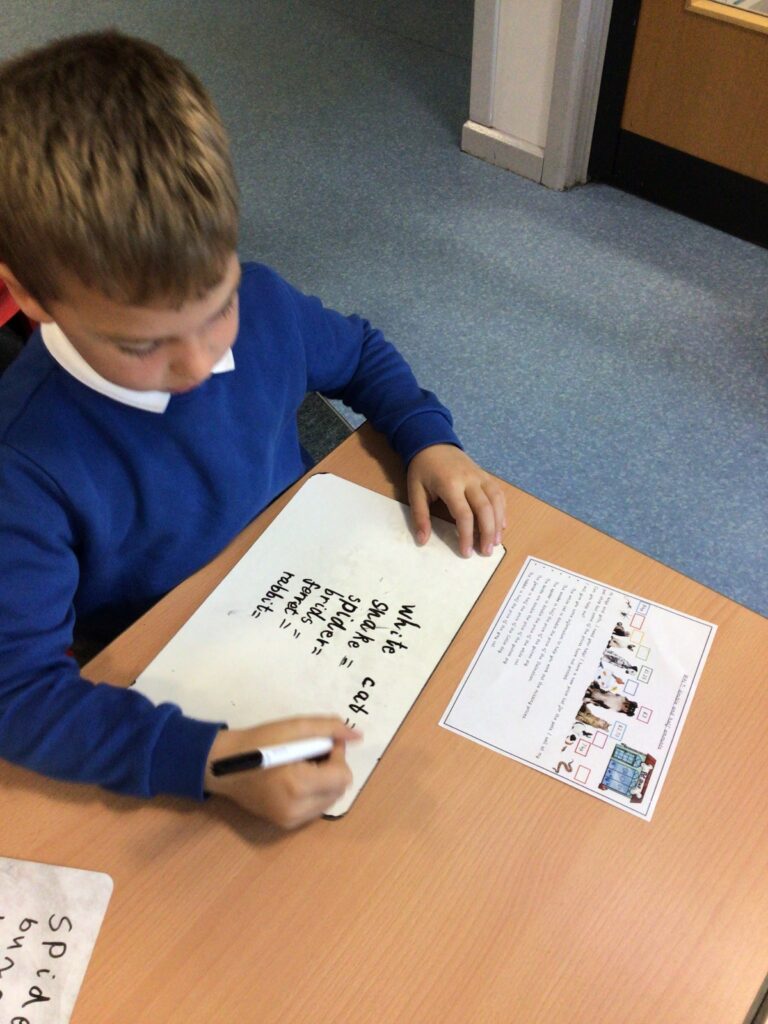
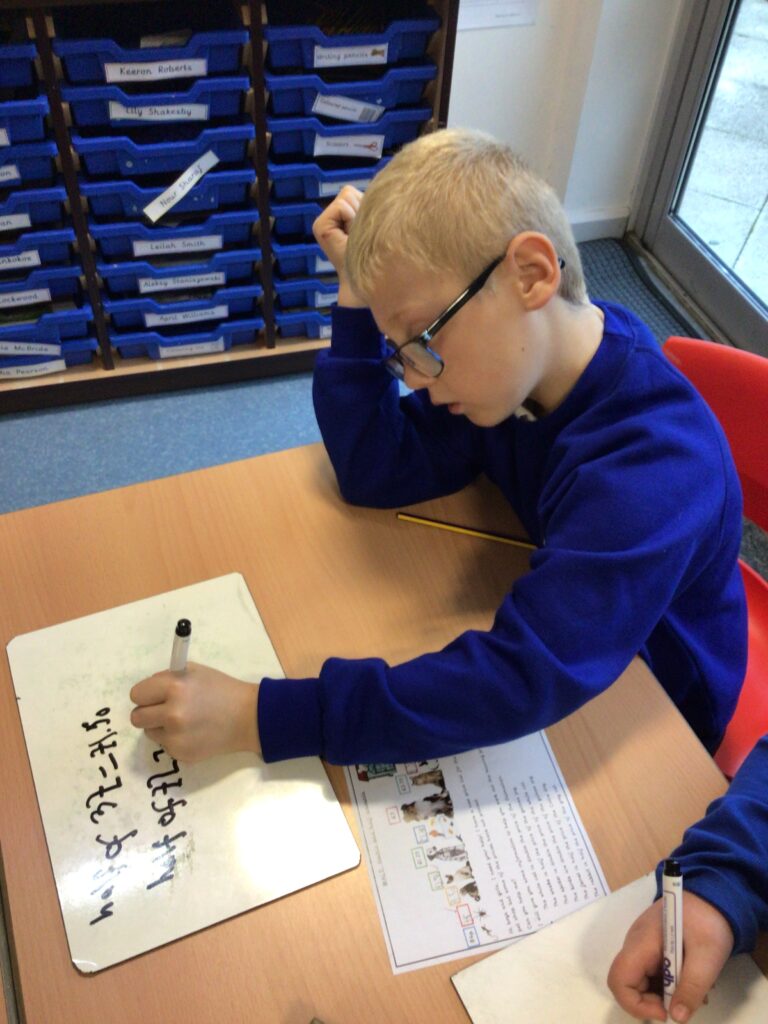
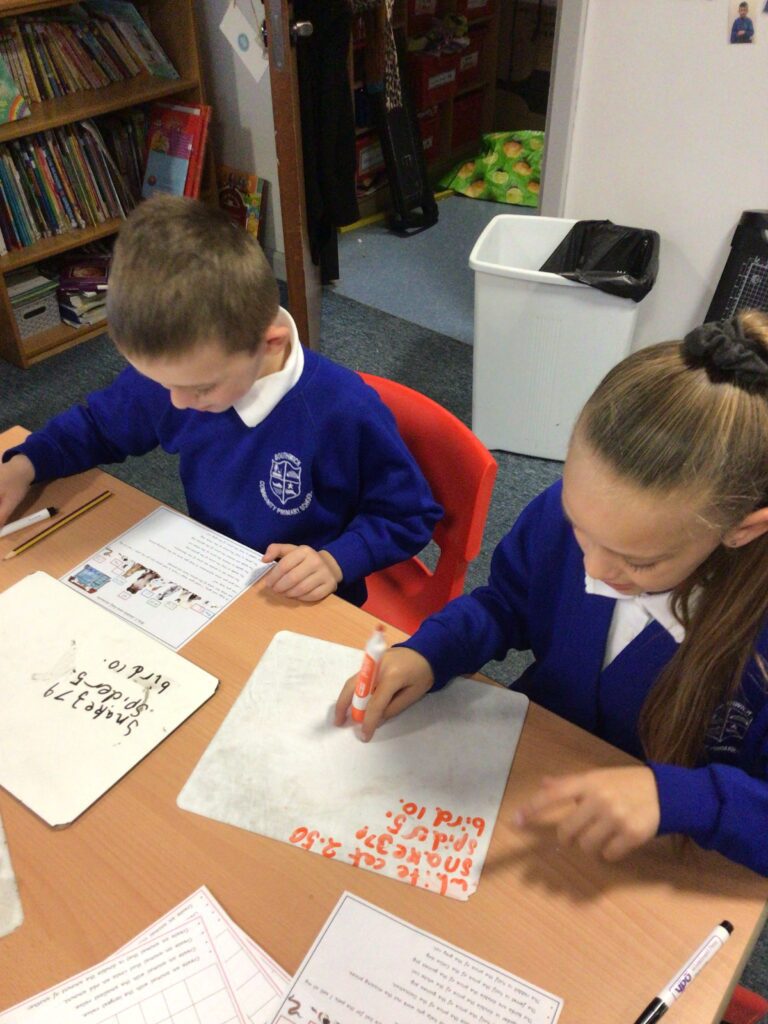
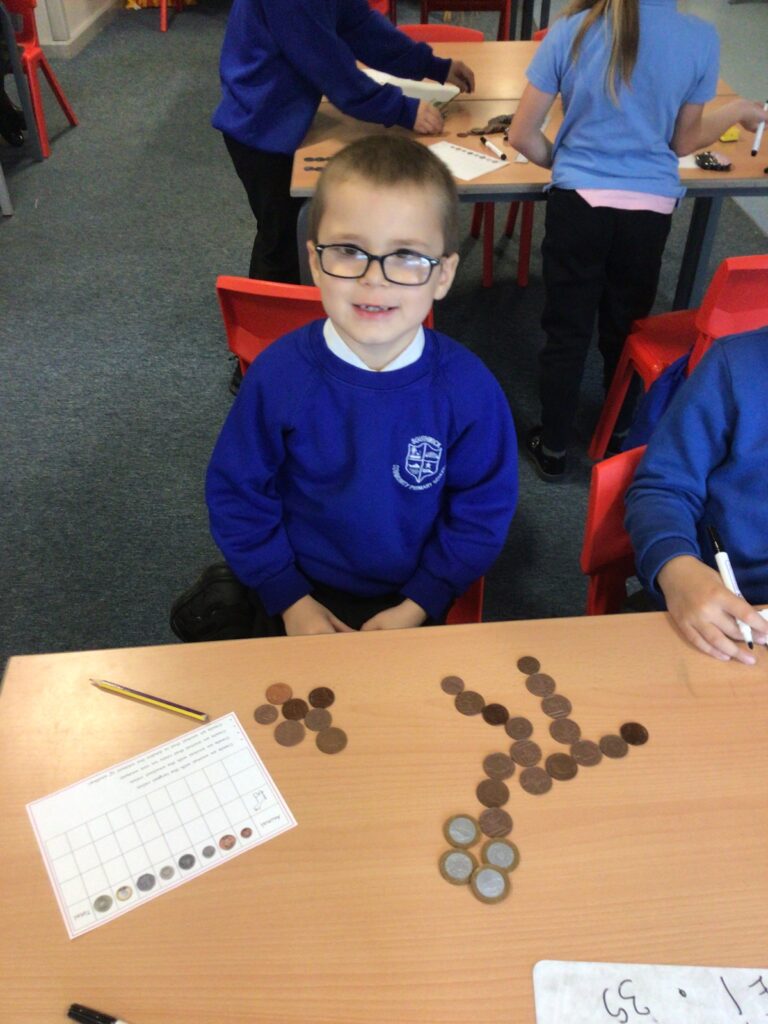
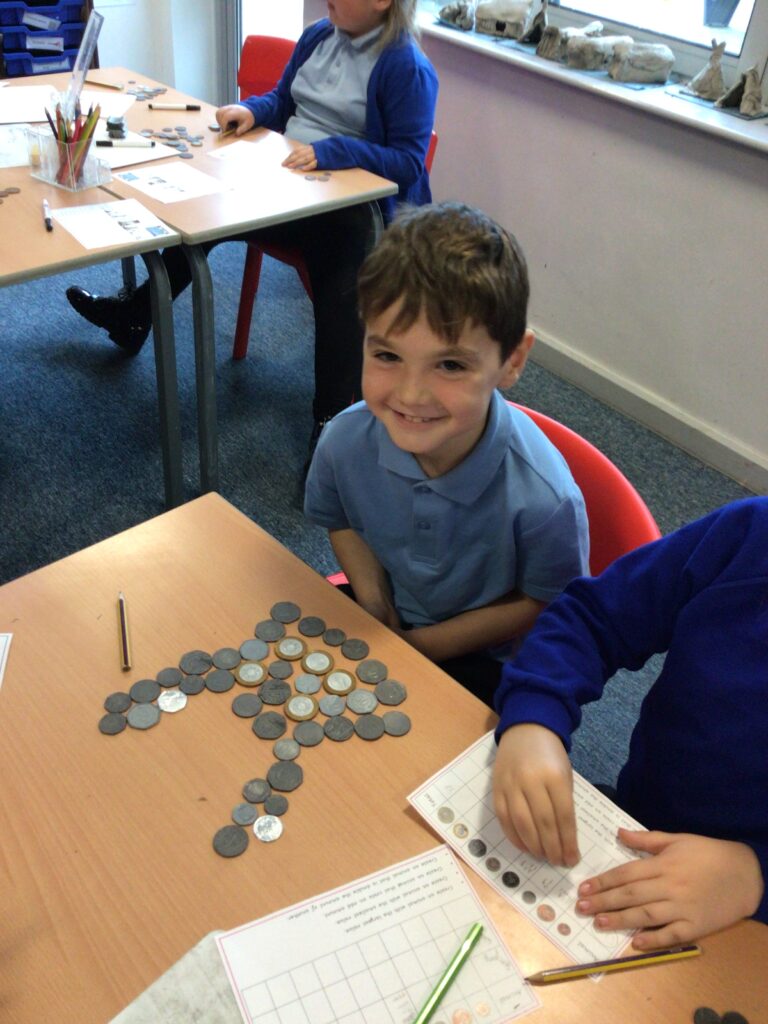
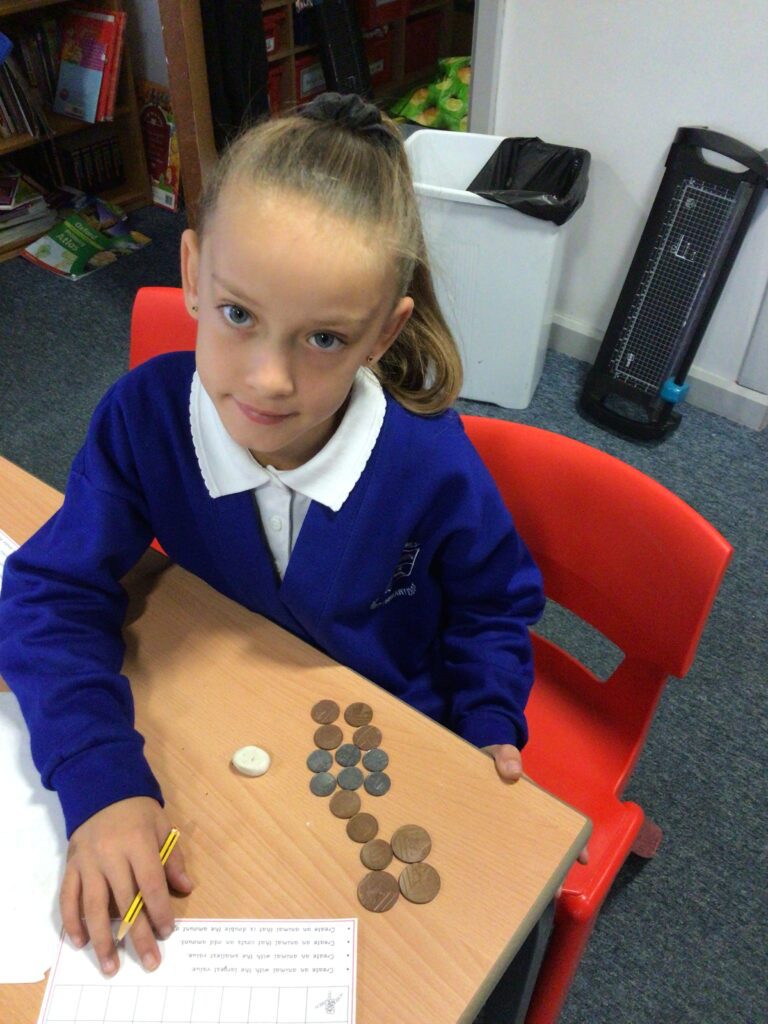
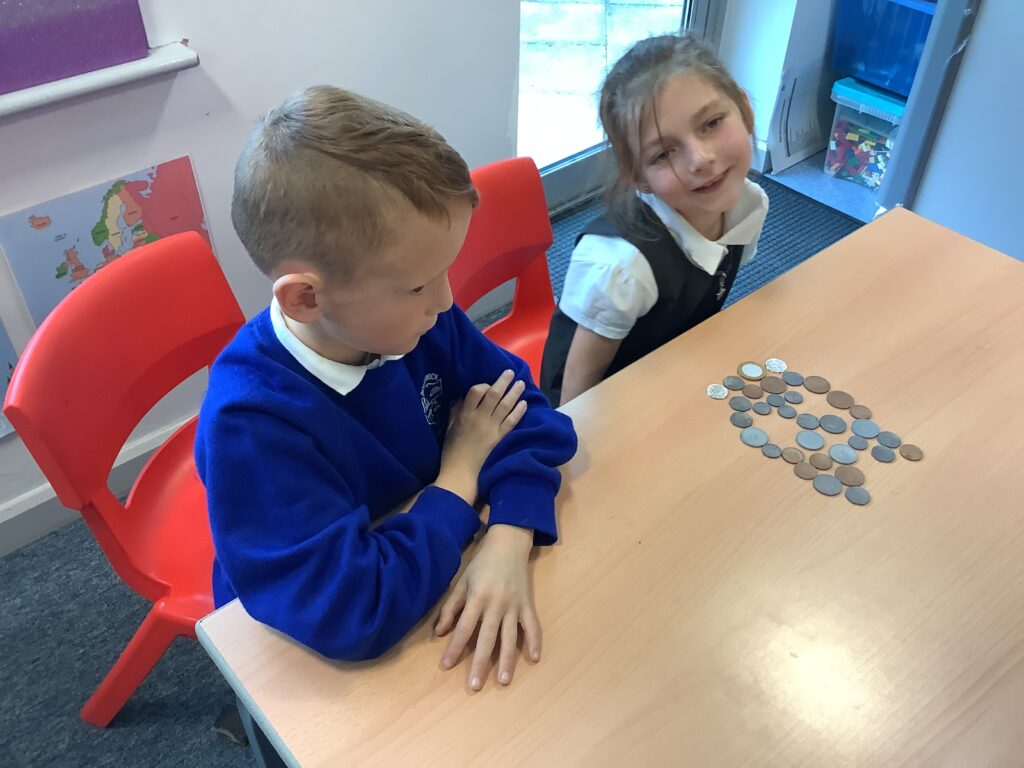
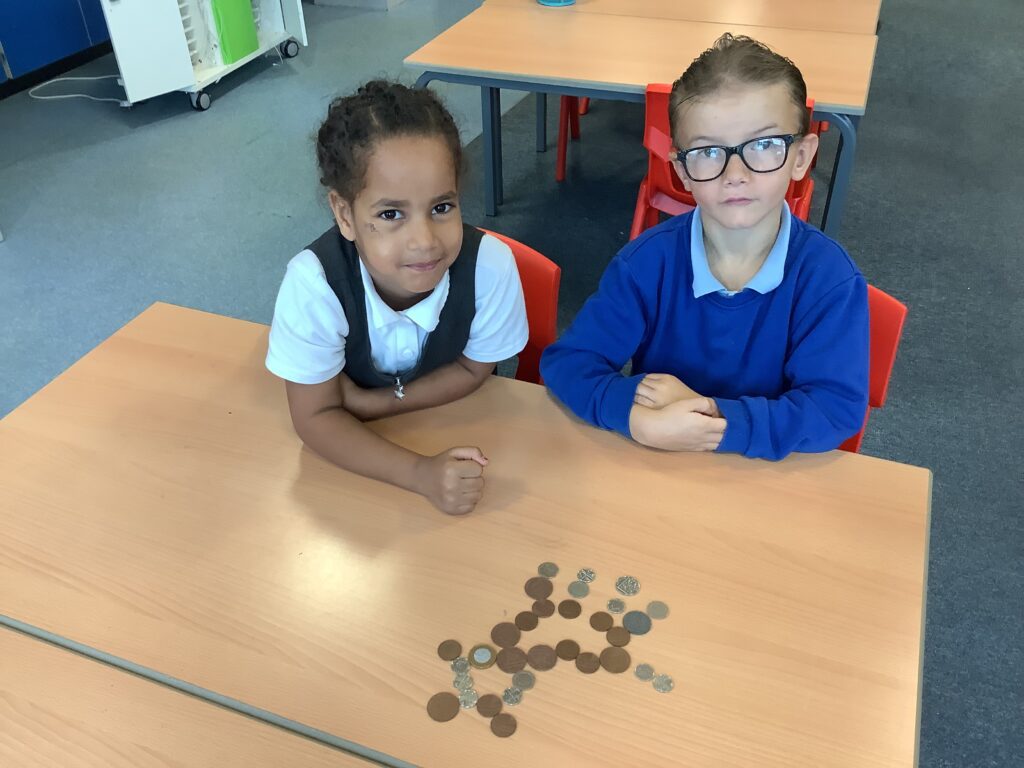
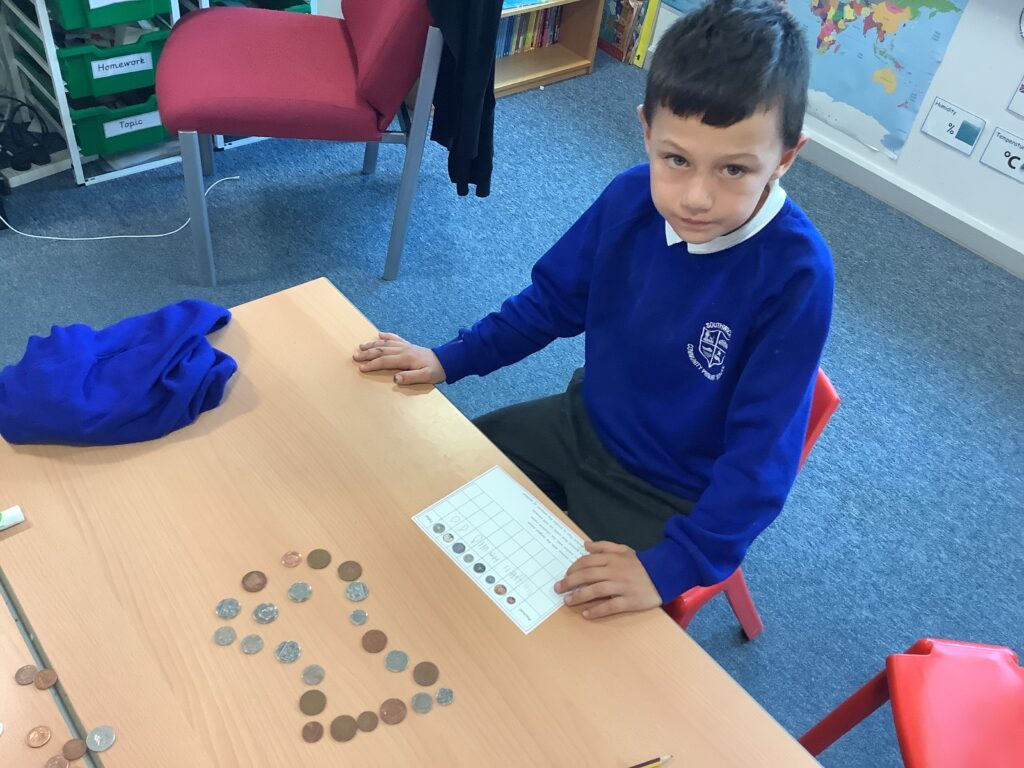
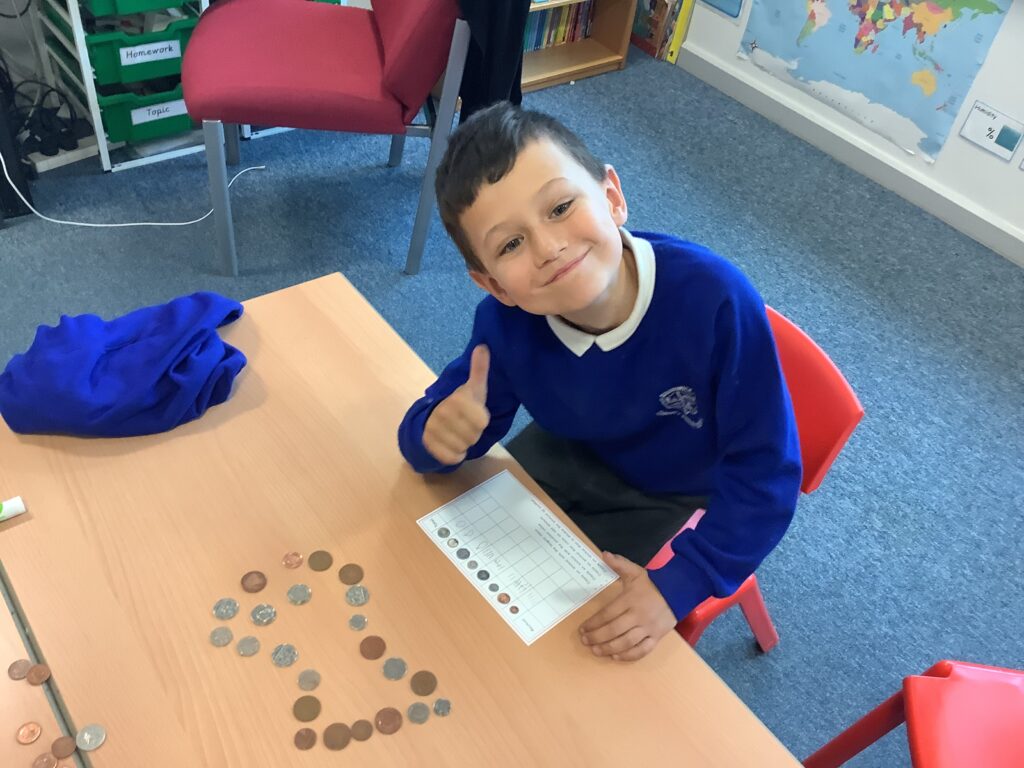
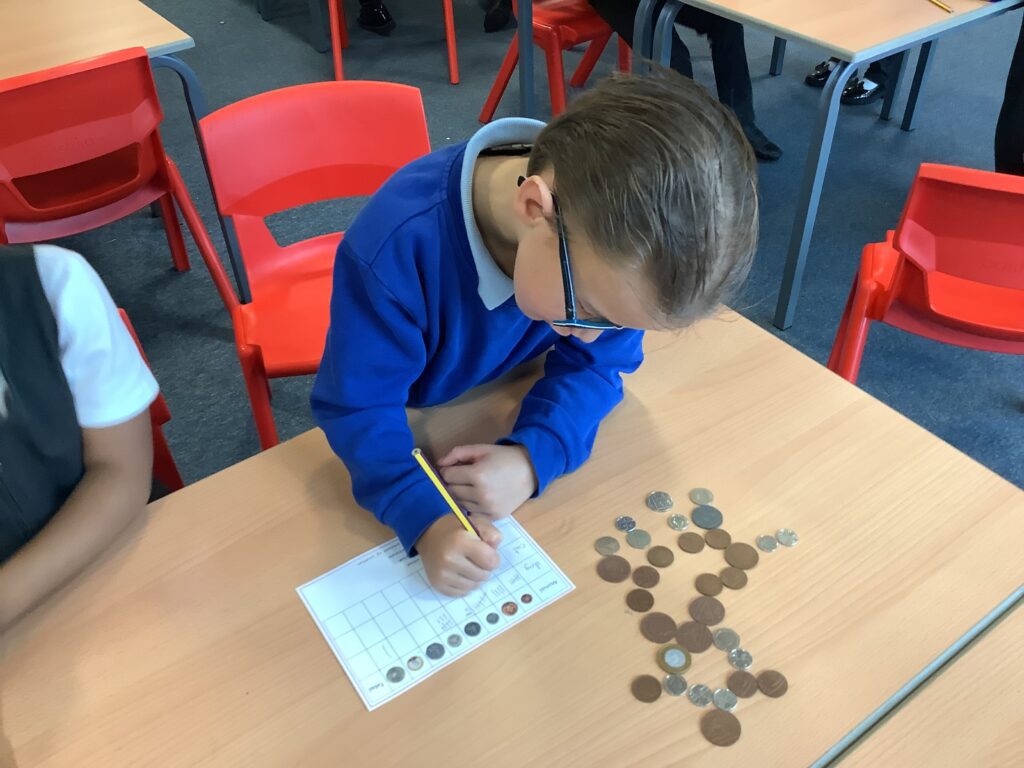
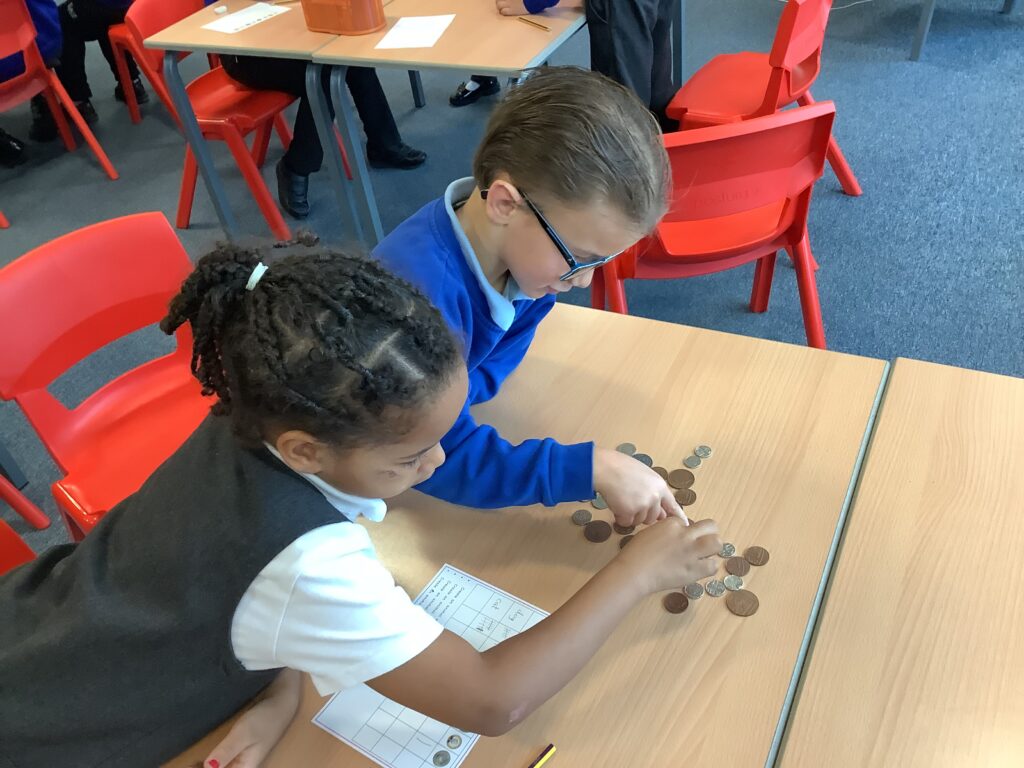
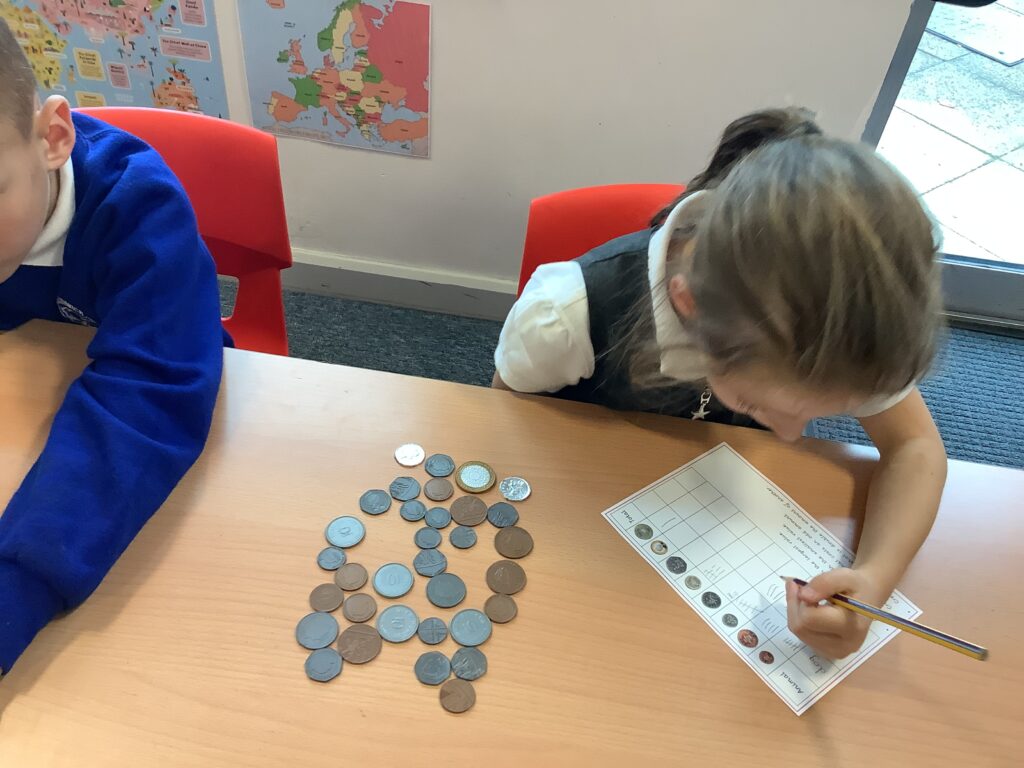
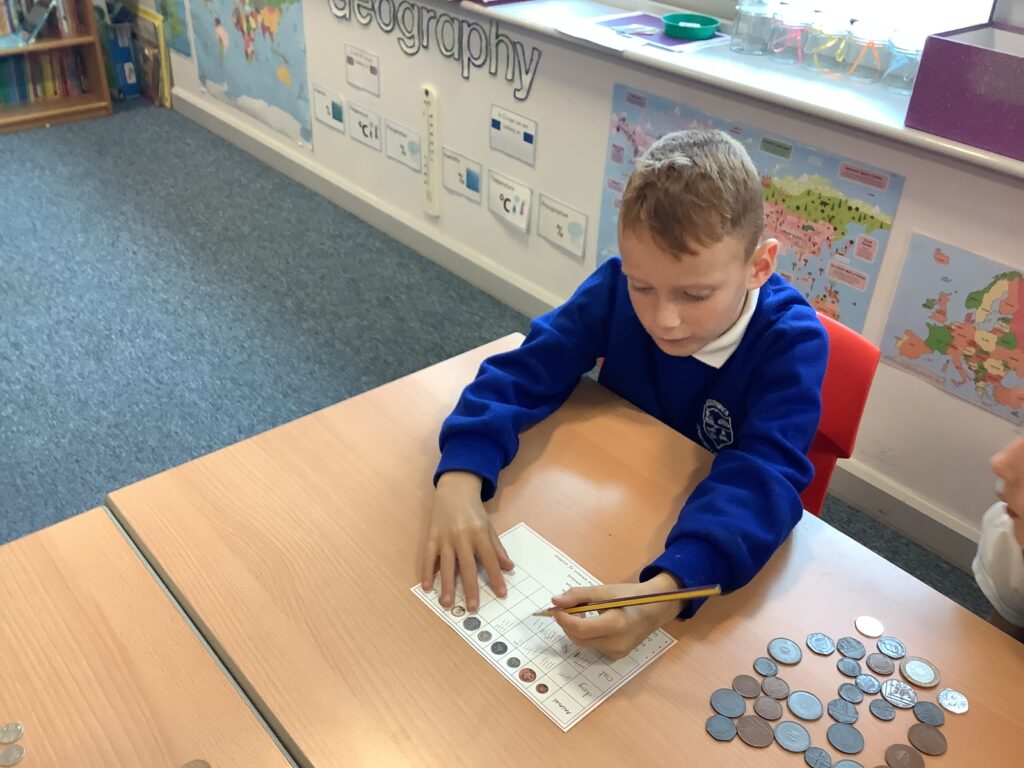
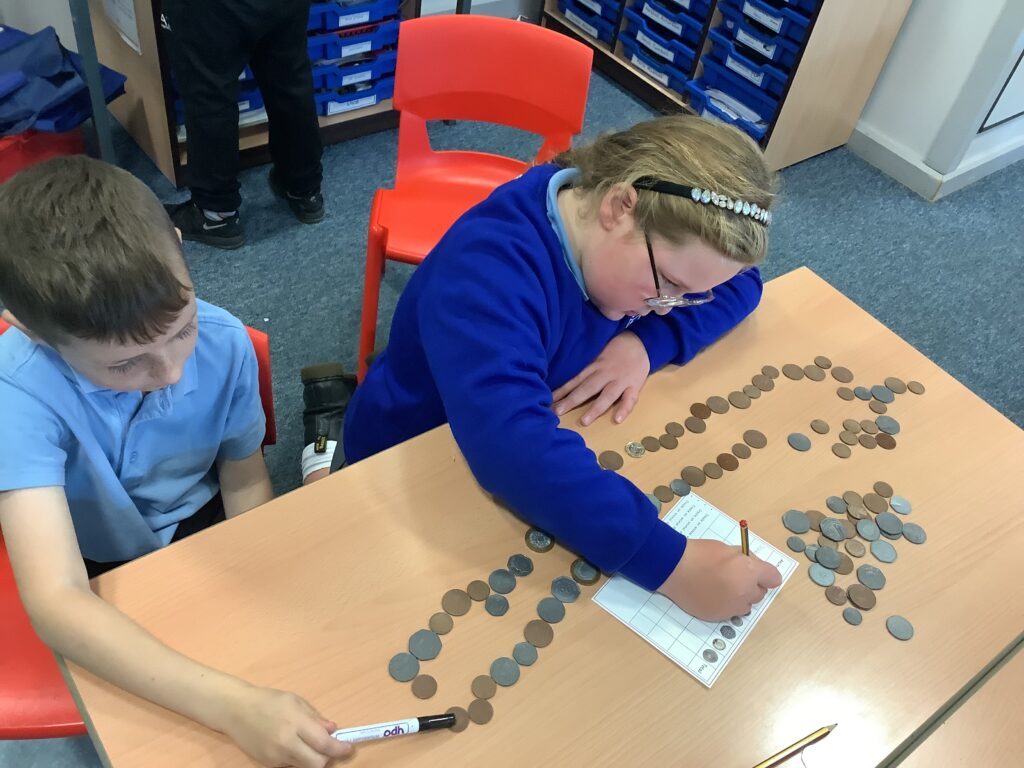
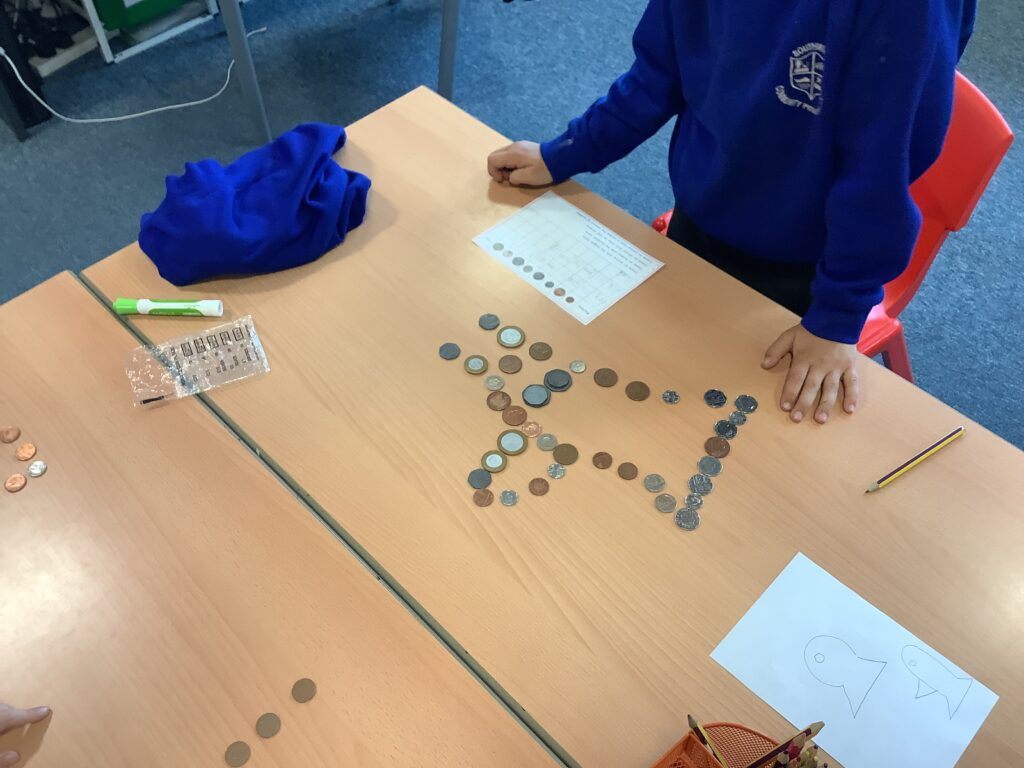
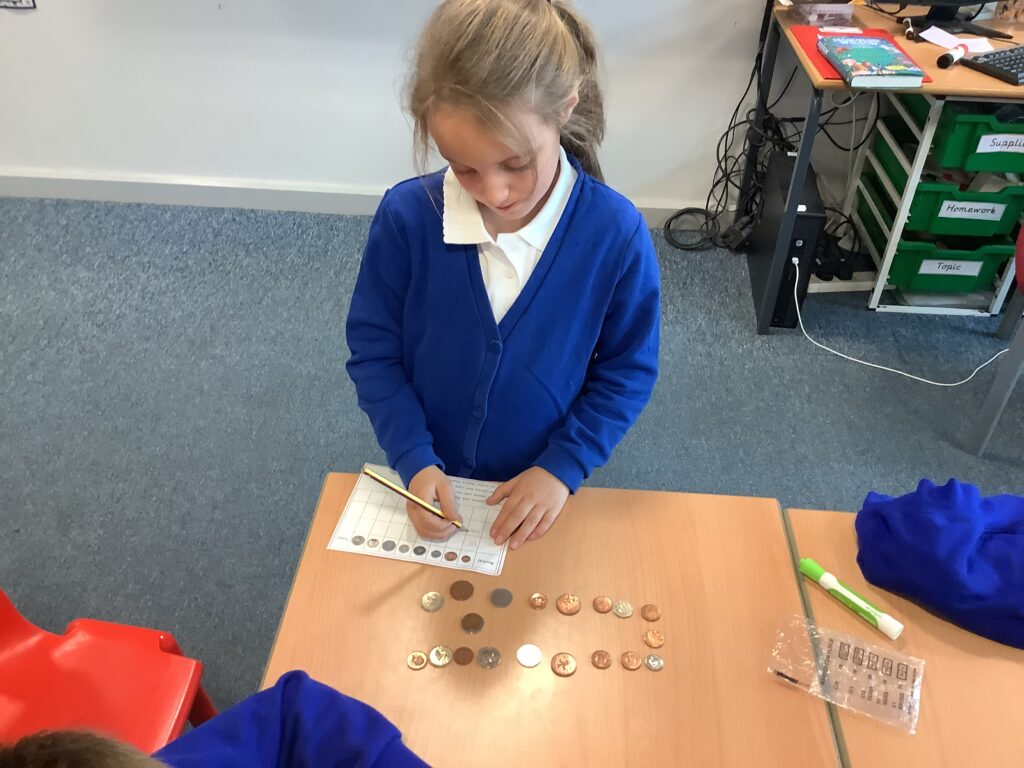
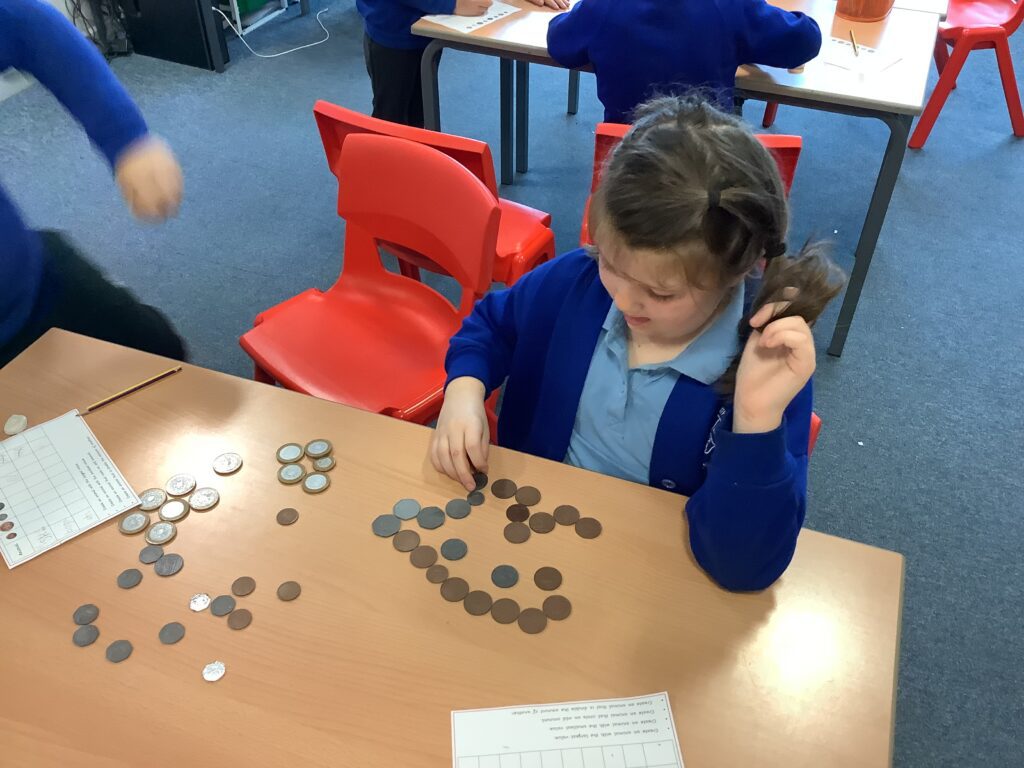
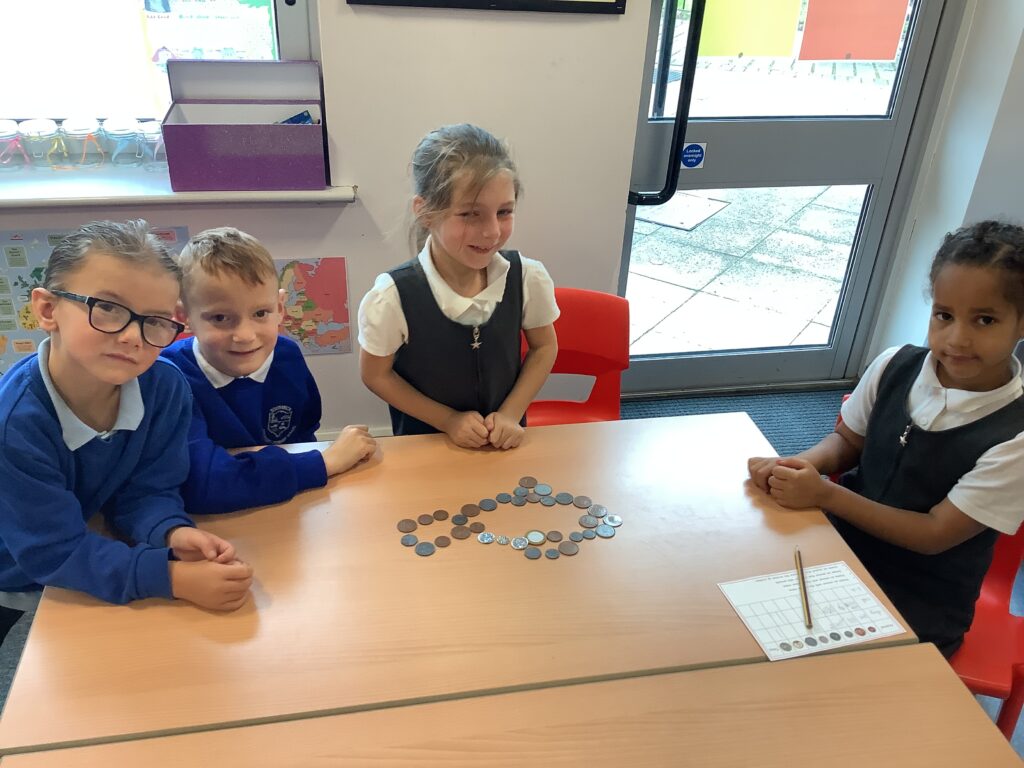
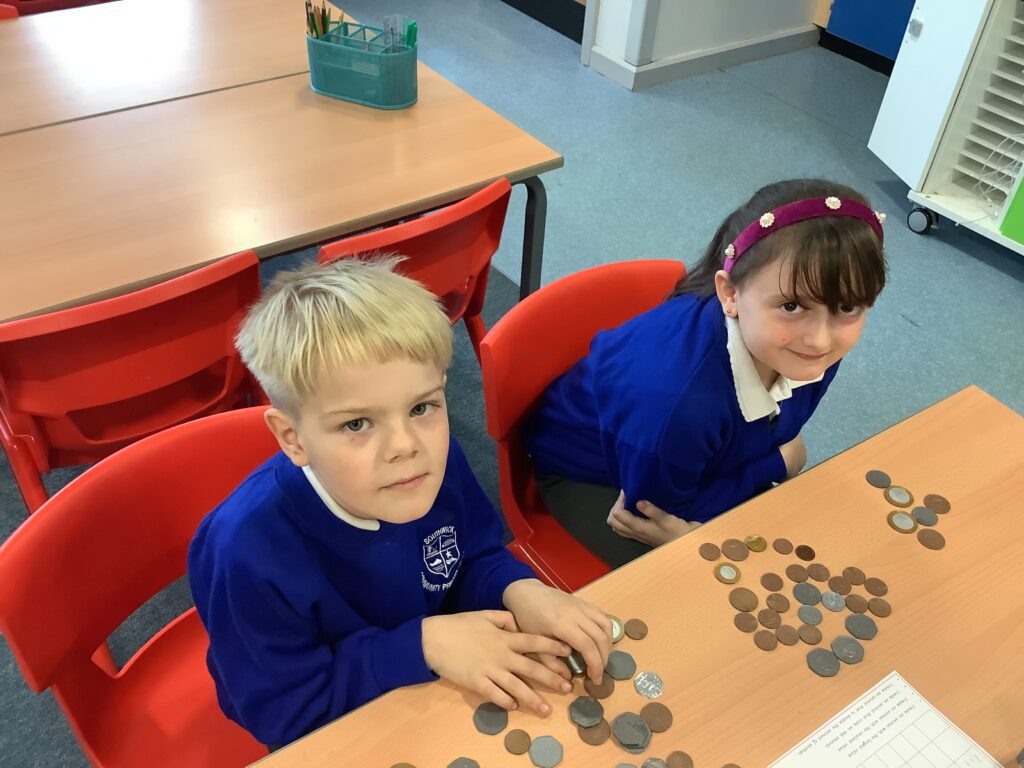
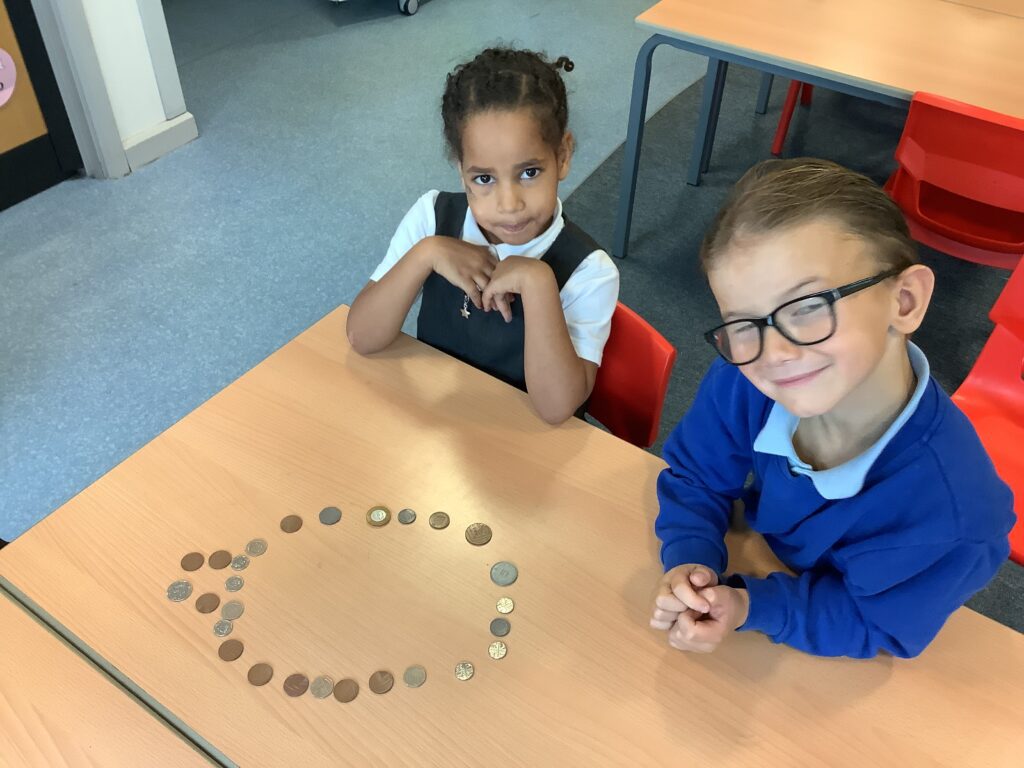
Our Year 3 money superstars:
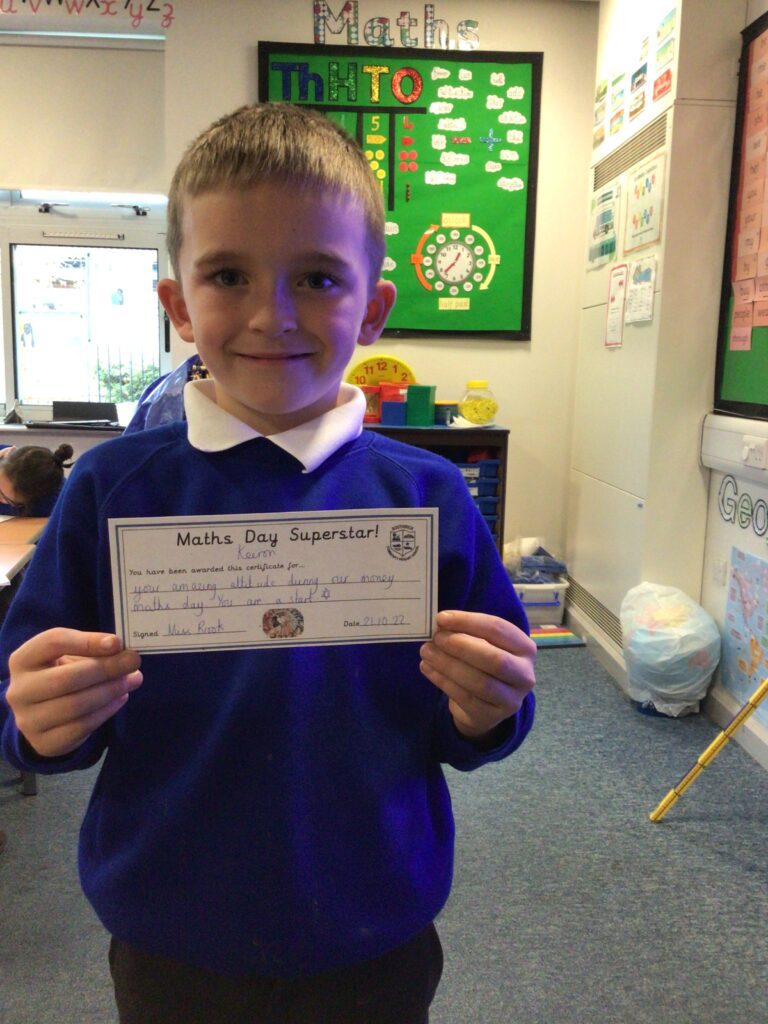
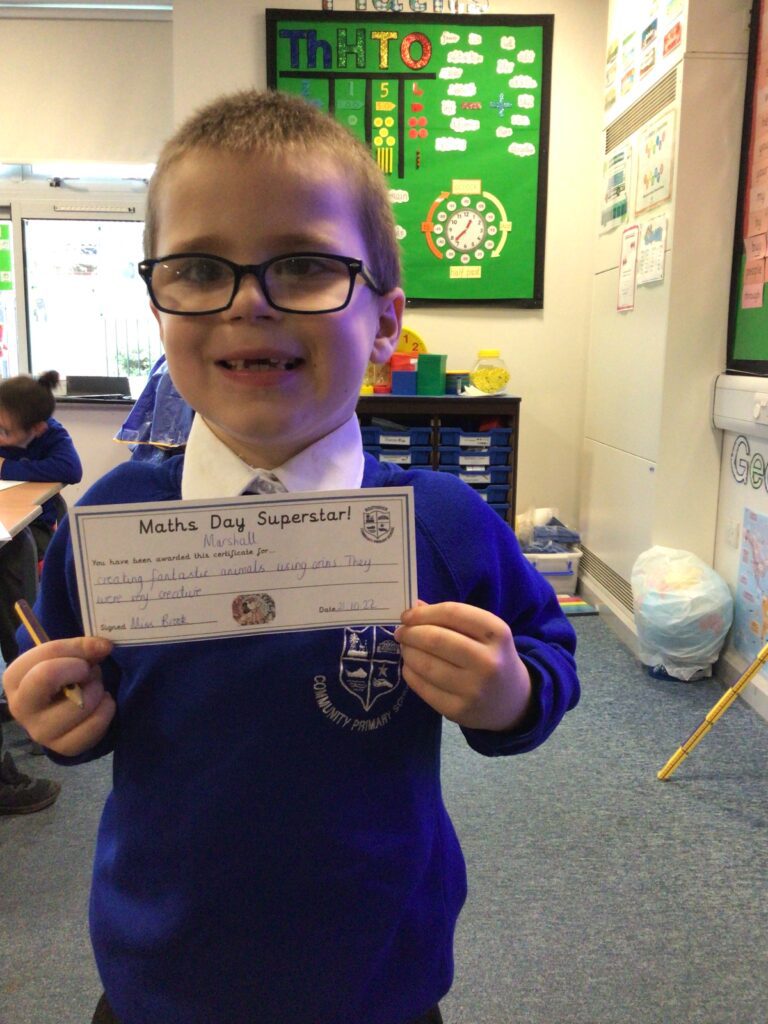
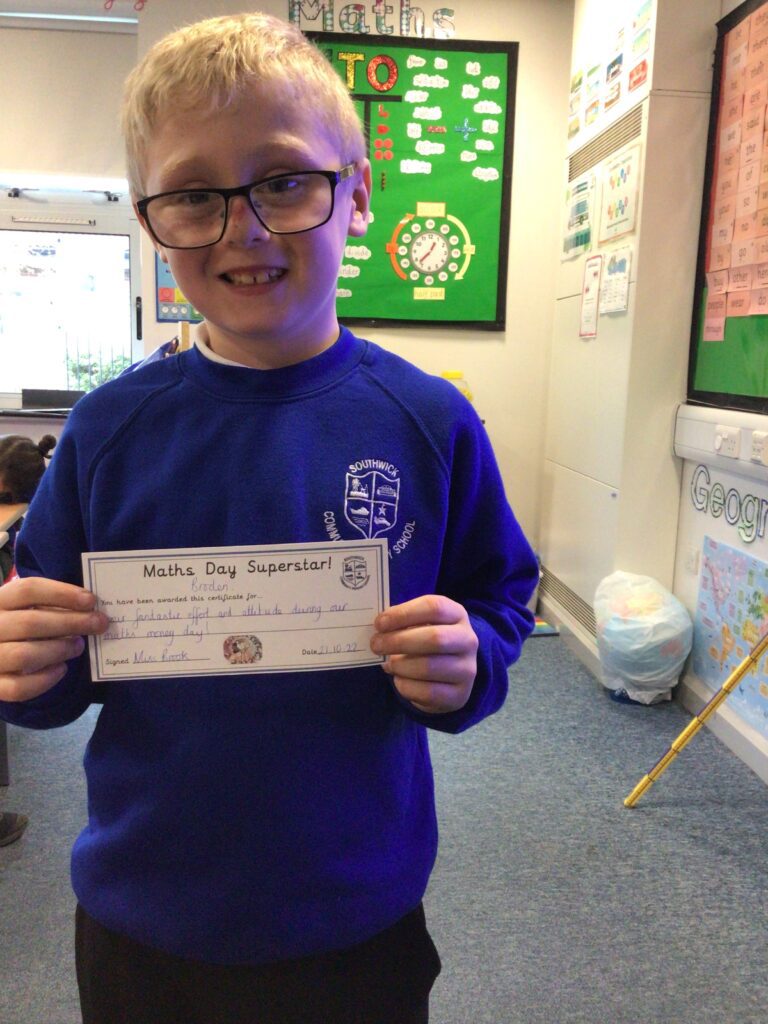
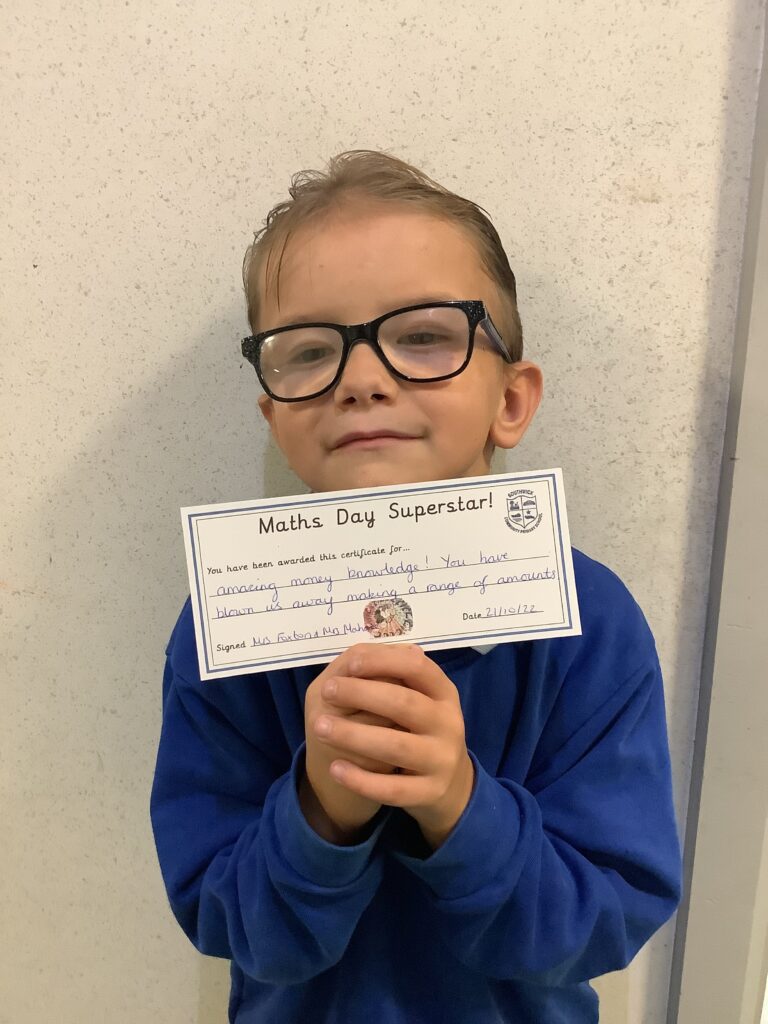
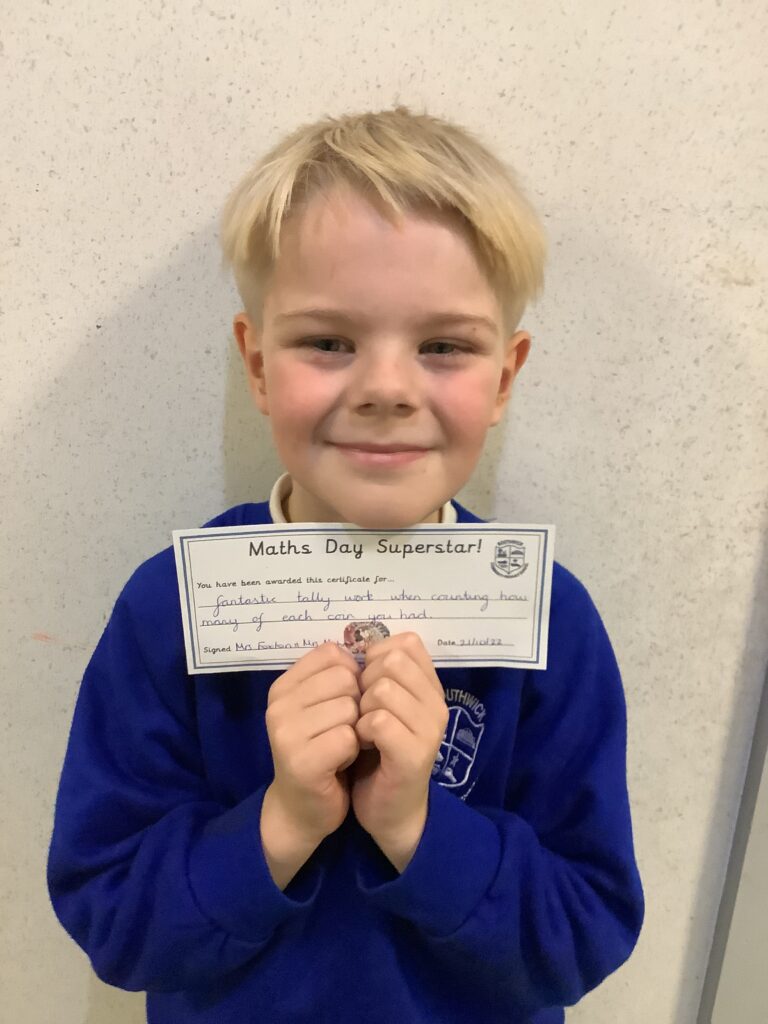
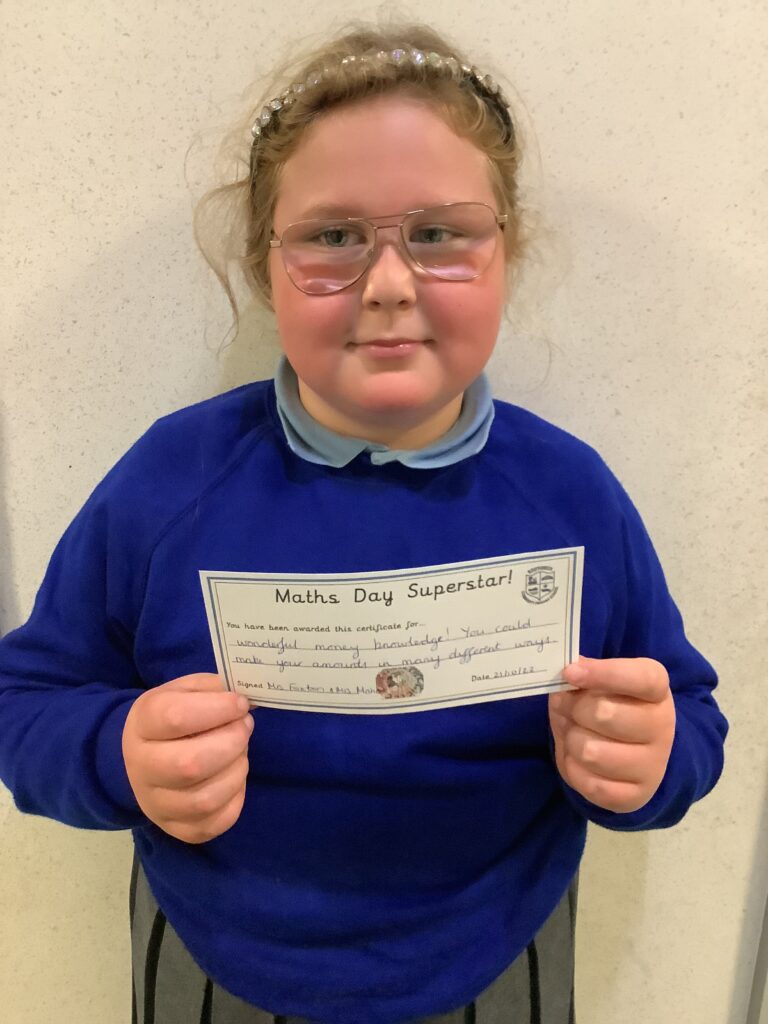
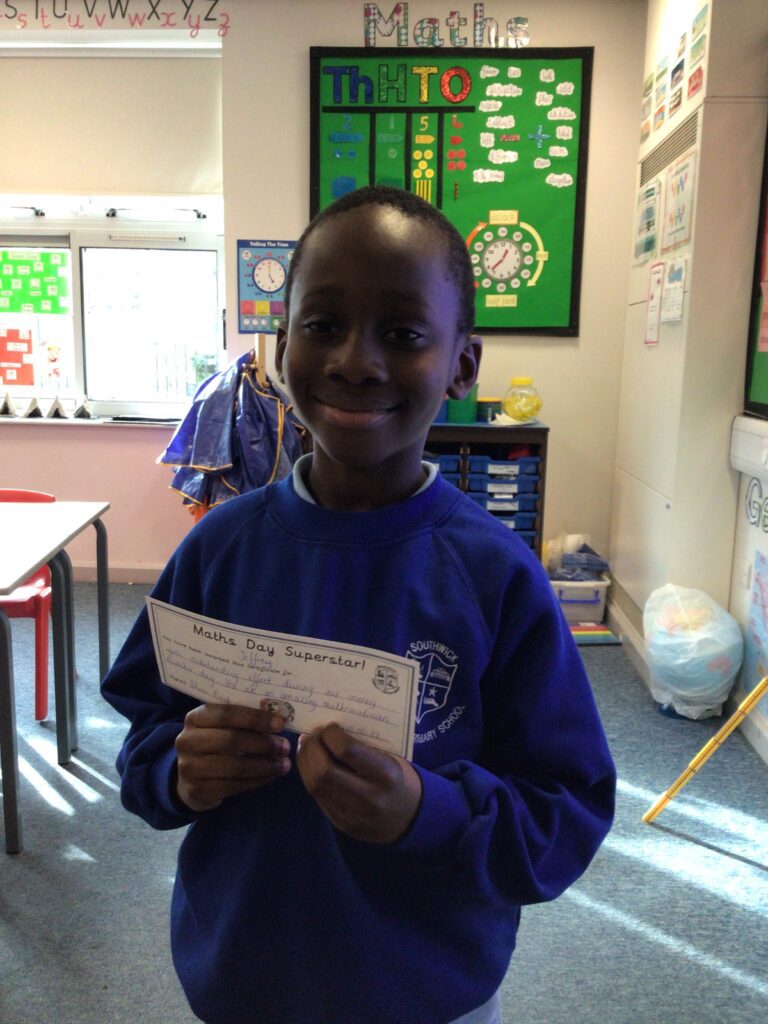
Year 4
Mrs Stephenson’s class have been looking at money all week. Today, they began the lesson by ordering the coins into ascending order. We then began to work through some tricky 2 step problems in order to find our change. We used the column method to solve the calculations.
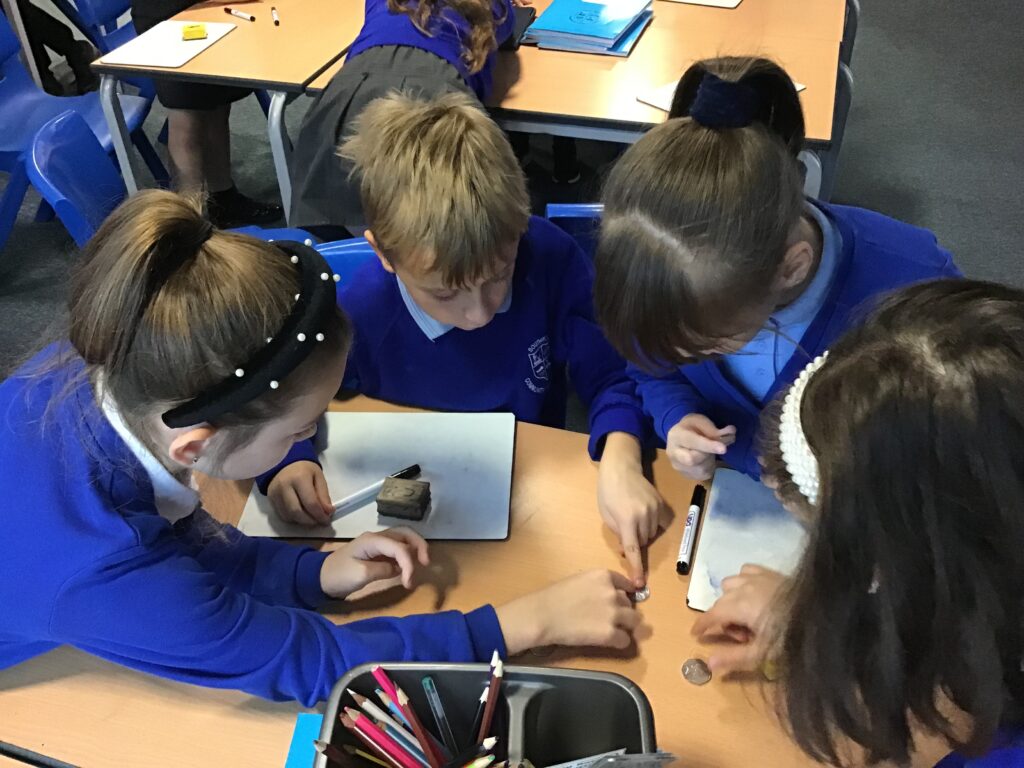
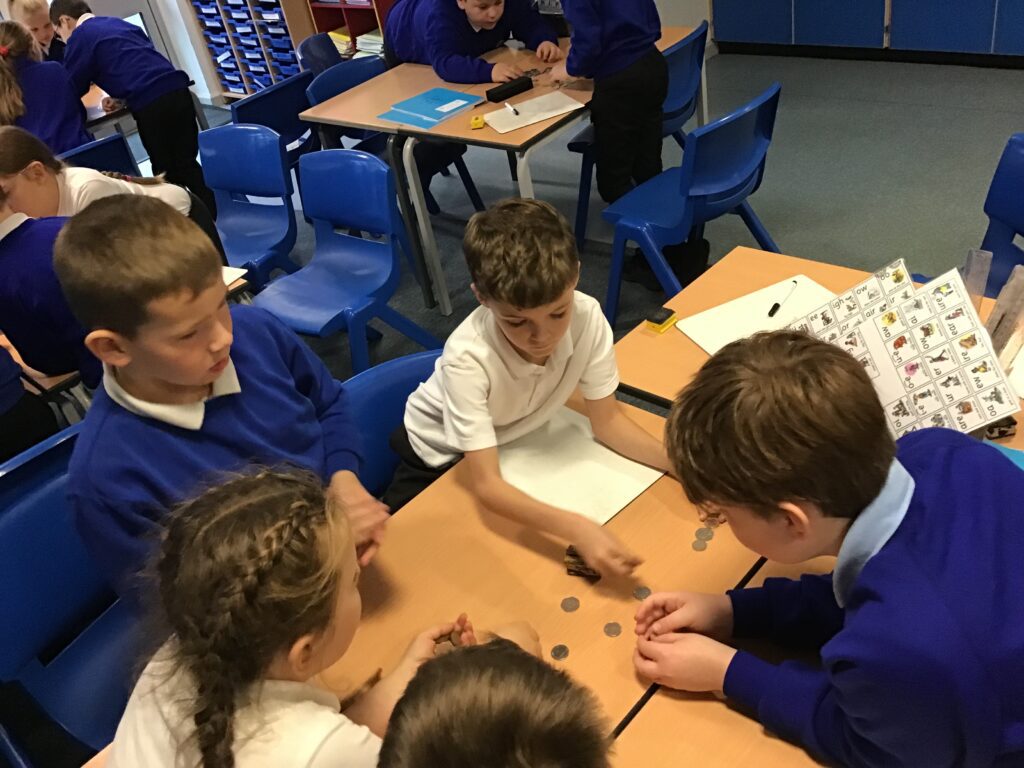
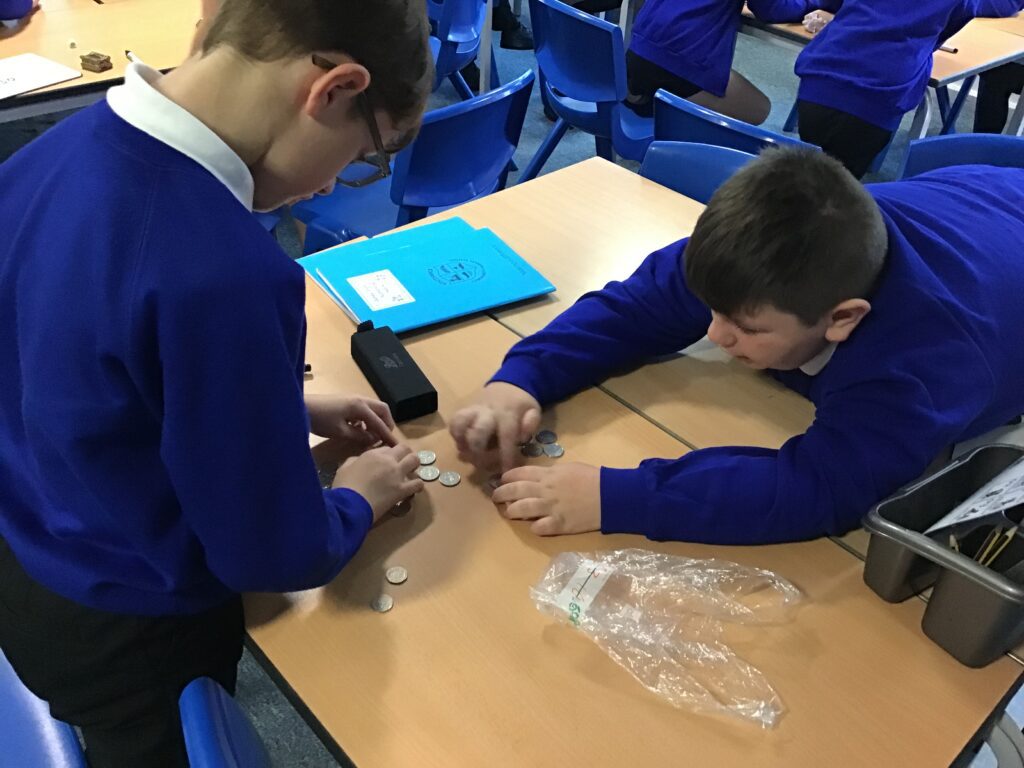
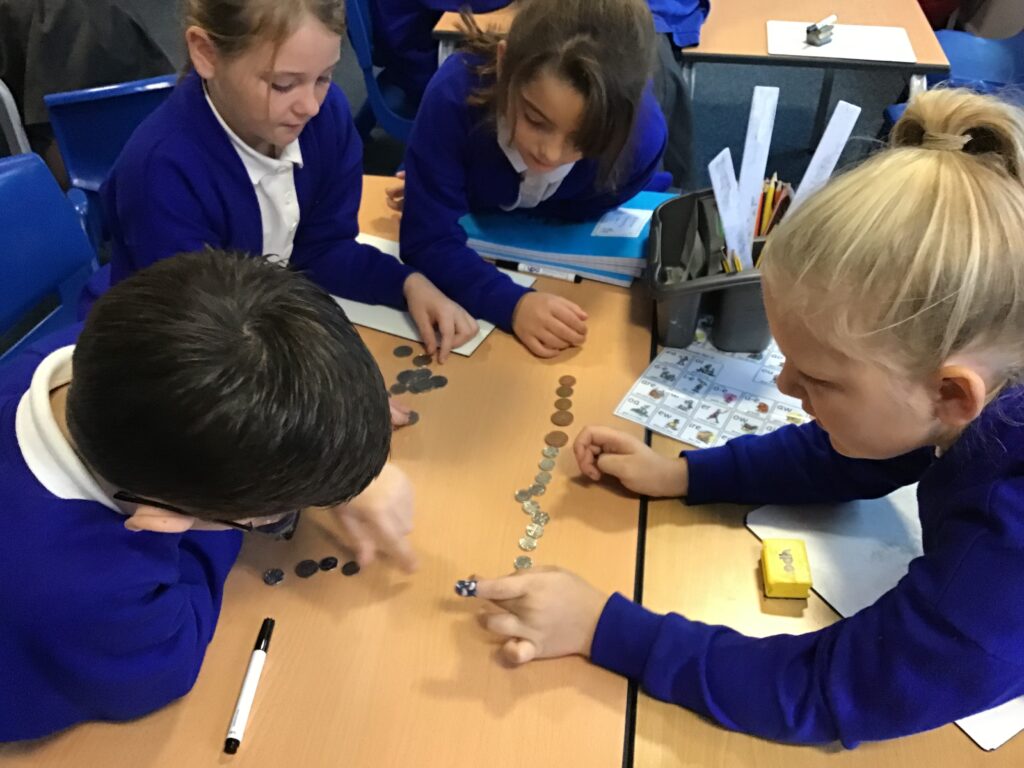
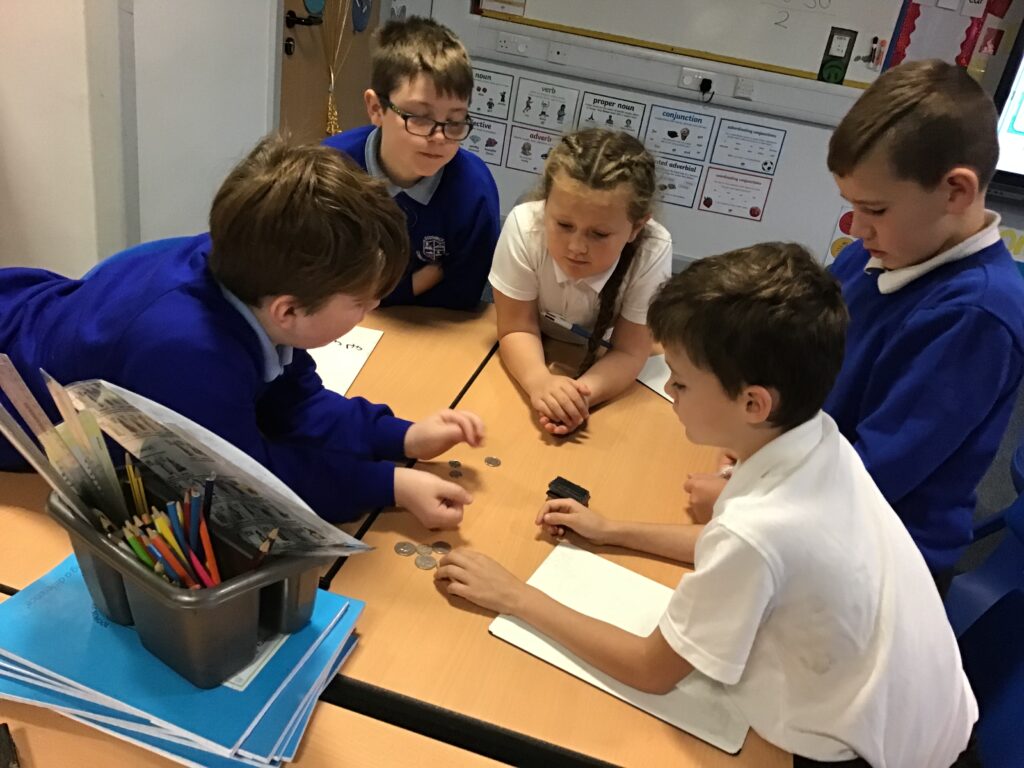
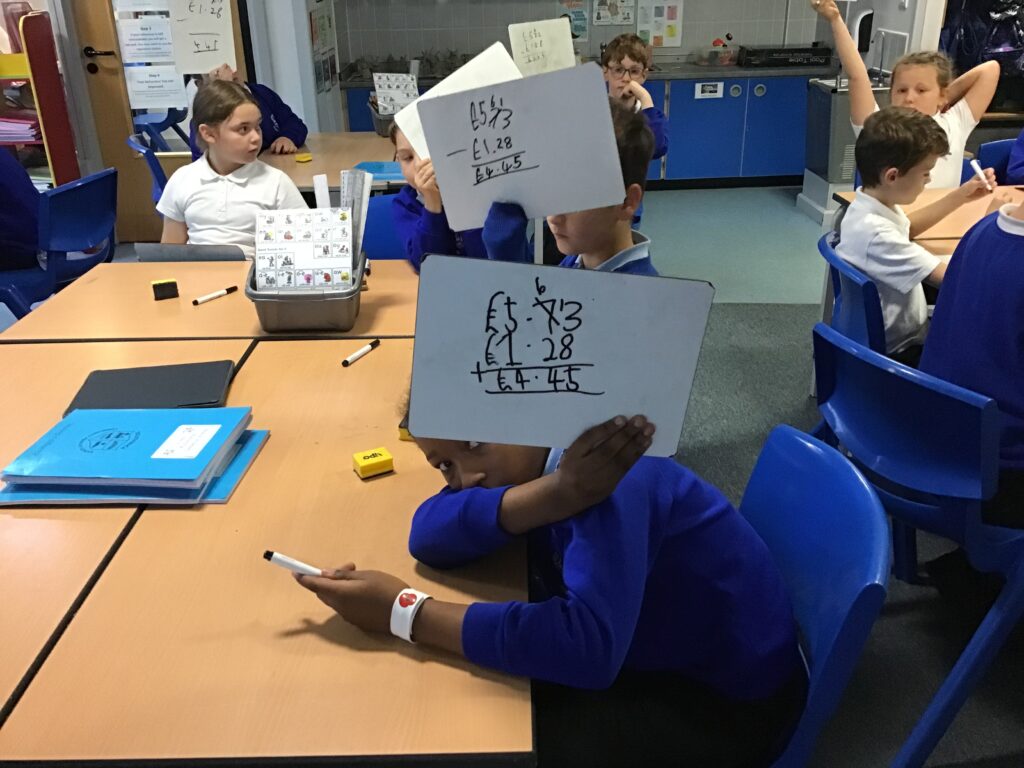
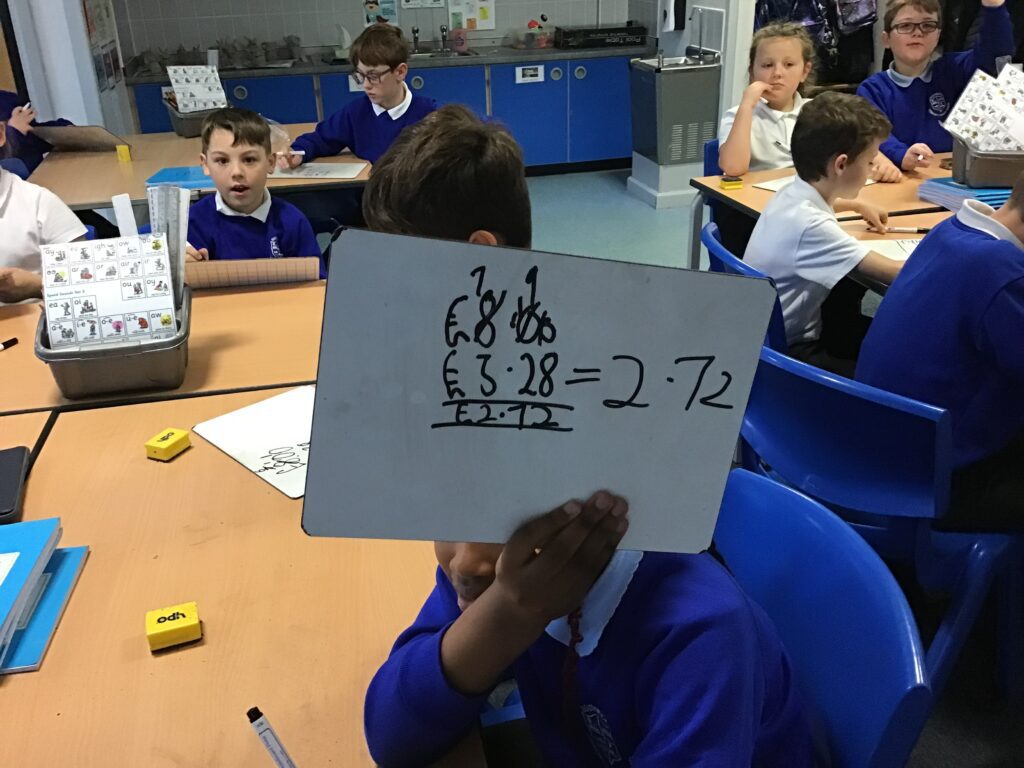
Year 5
In our maths lesson we have looked at budgeting. We used our understanding of place value, addition and subtraction to help us to design our own playground. We had to consider the budget carefully and think about what equipment we would like in our playground. Sometimes we could get things cheaper if we bought more than one but we had to make sure there would be enough to keep people interested (it would be no good to have a park full of only swigs).
Once we had designed and costed our playground we made a sign. Again we had to cost this and make sure we didn’t go over the budget.
Finally, we compared everyone’s designs. We looked to see who had used their budget well and whose playground we thought was the most exciting. We even checked some of the calculations to make sure we had costed it correctly.
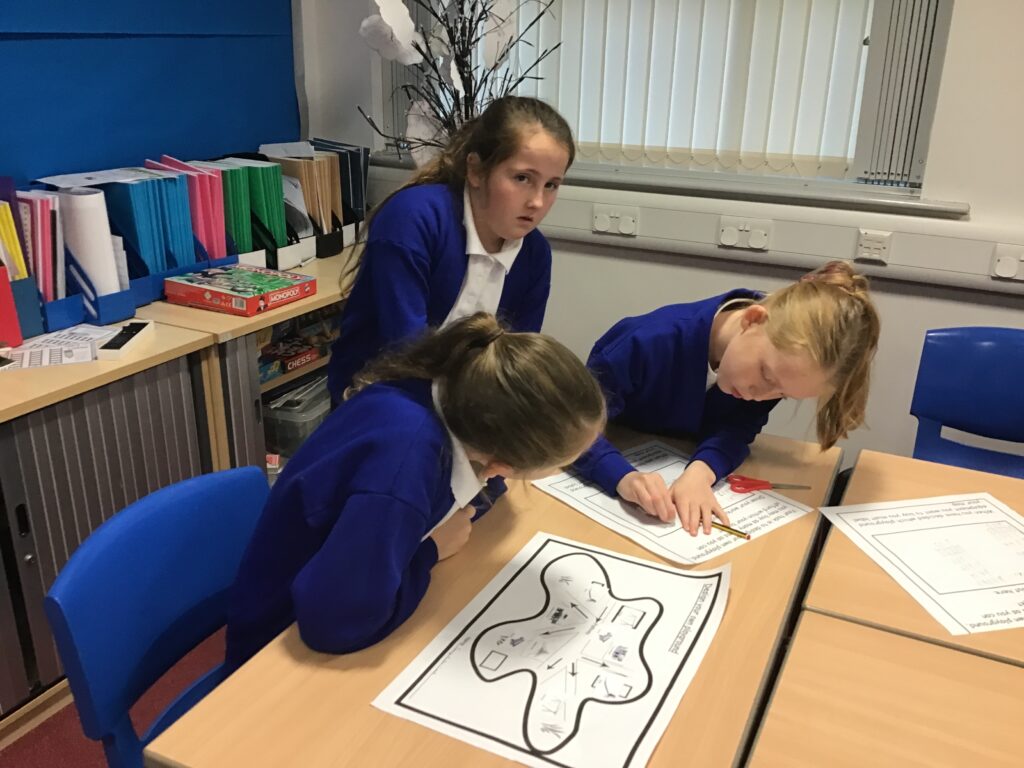
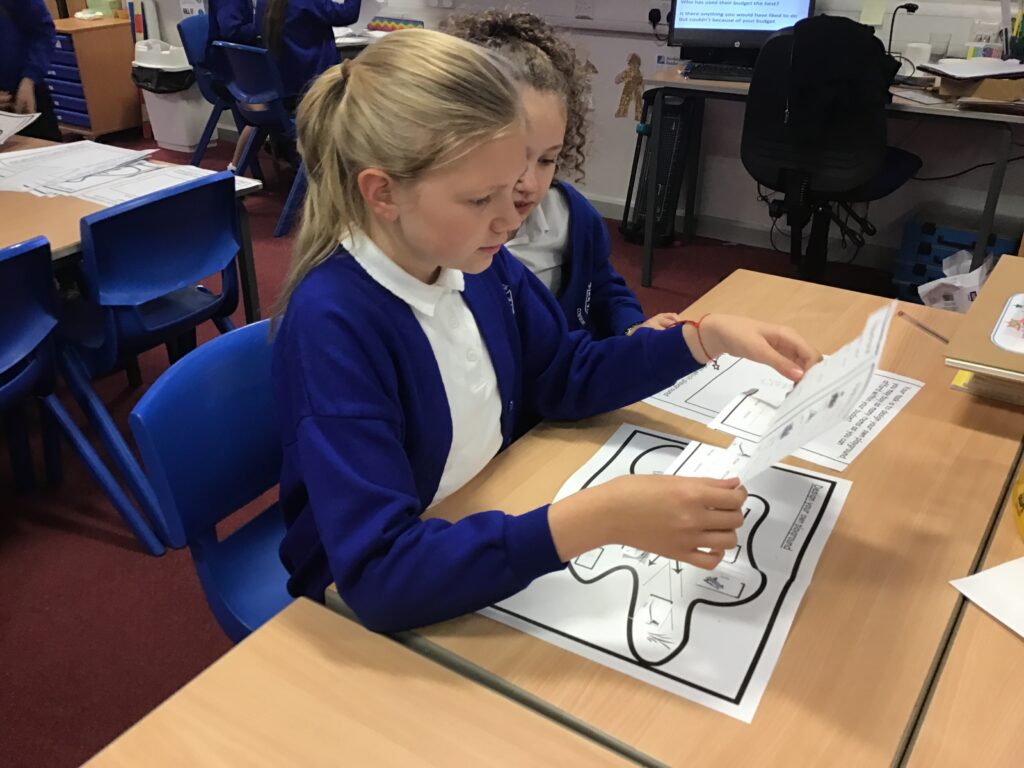
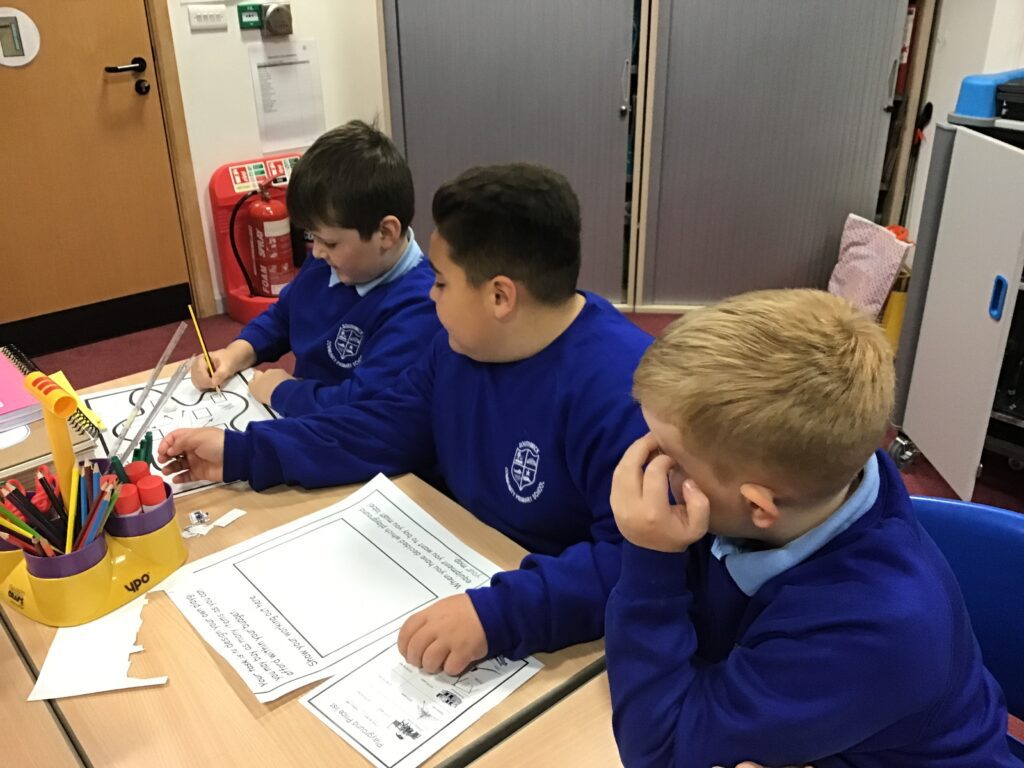
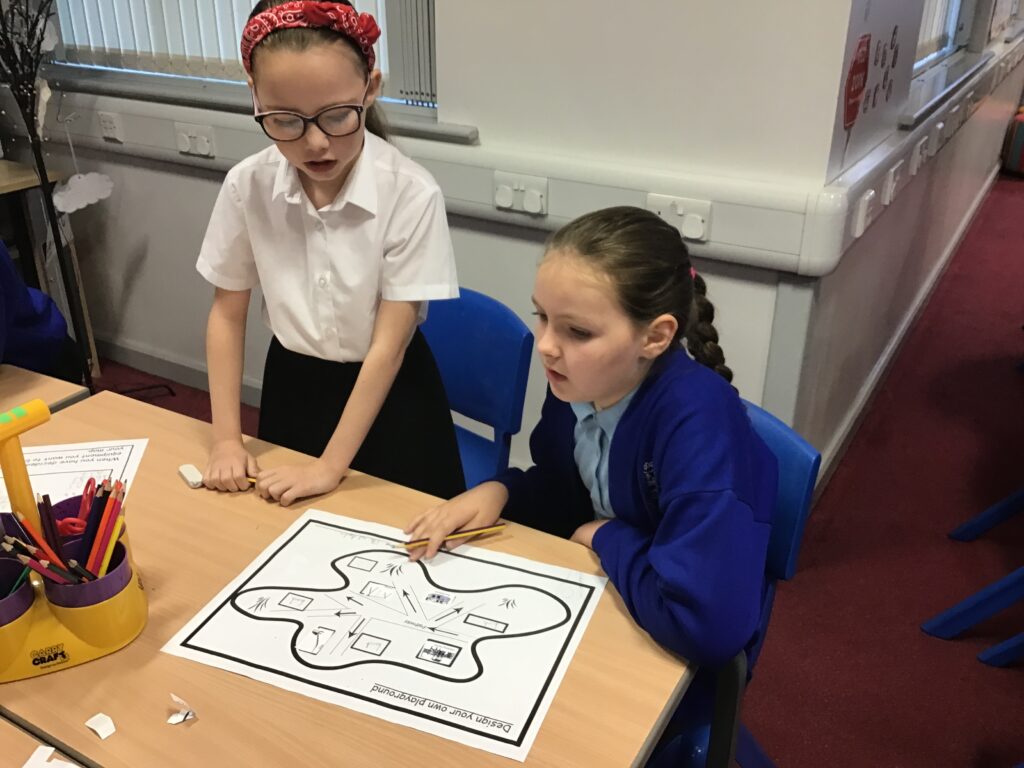
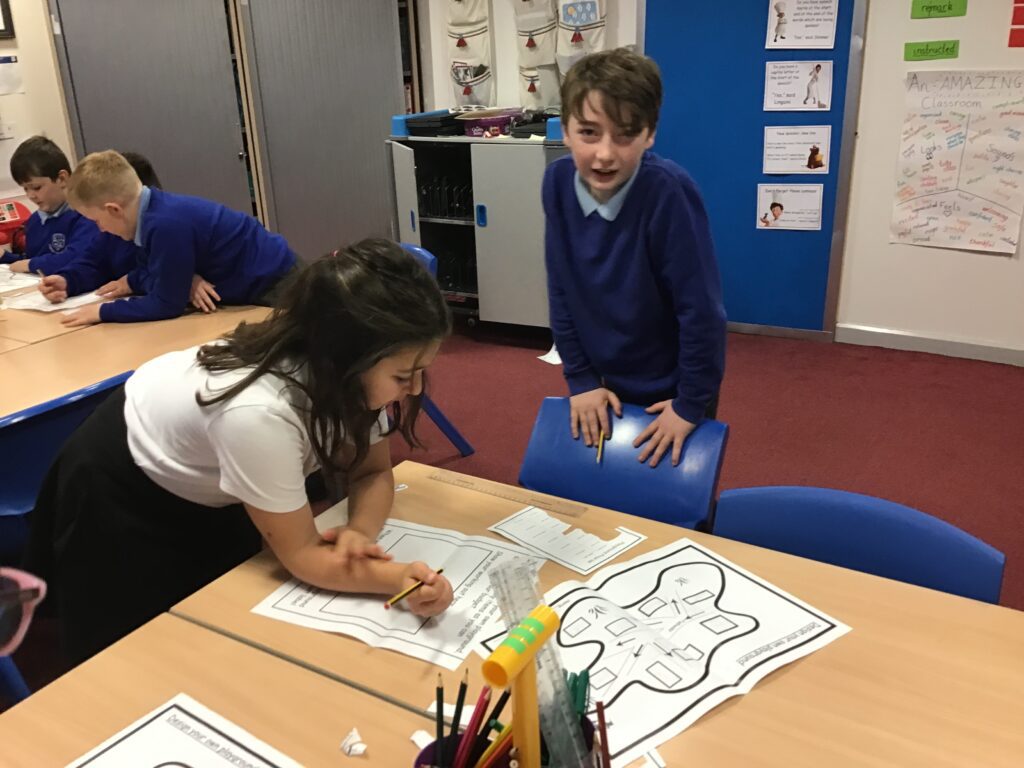
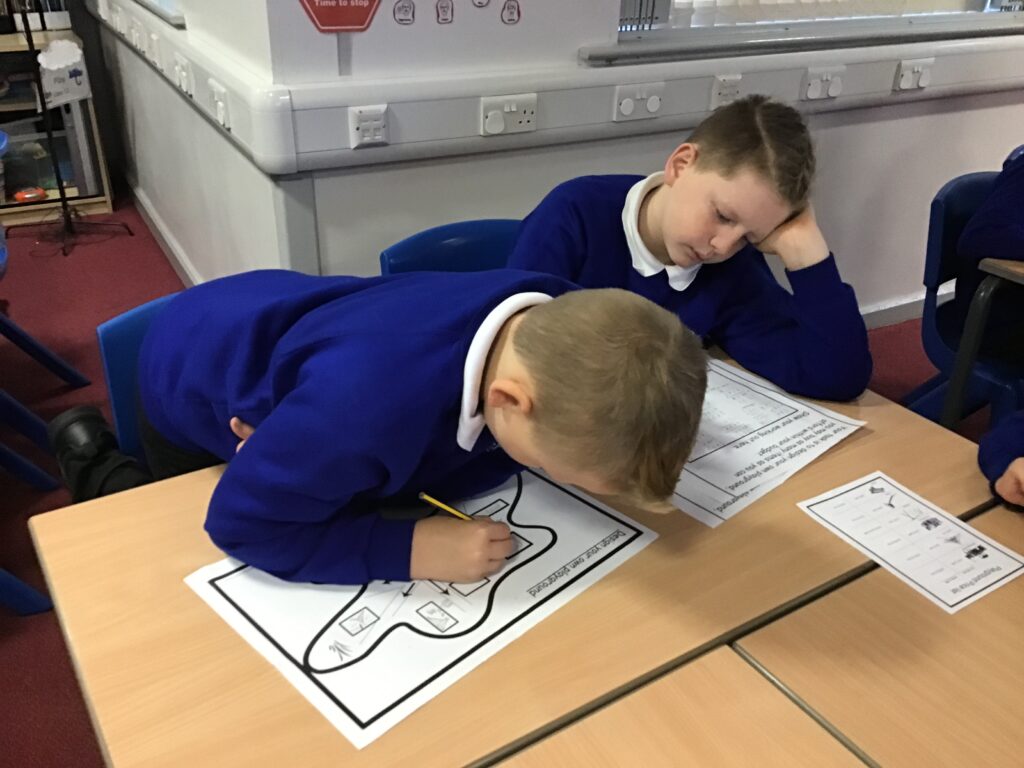
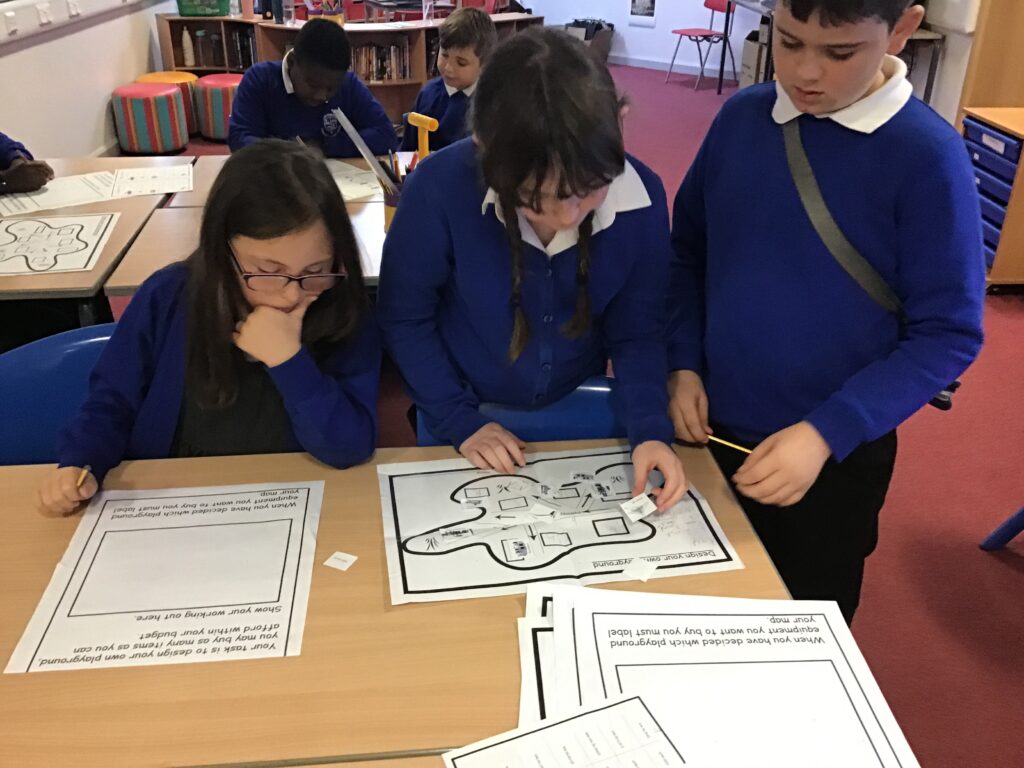
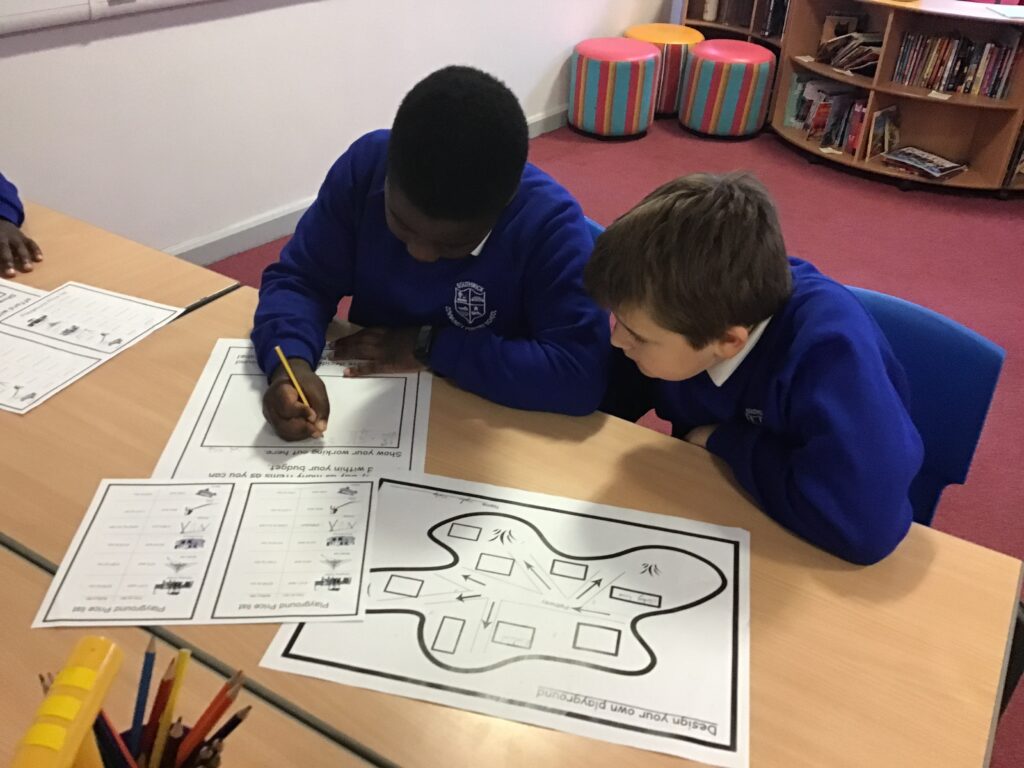
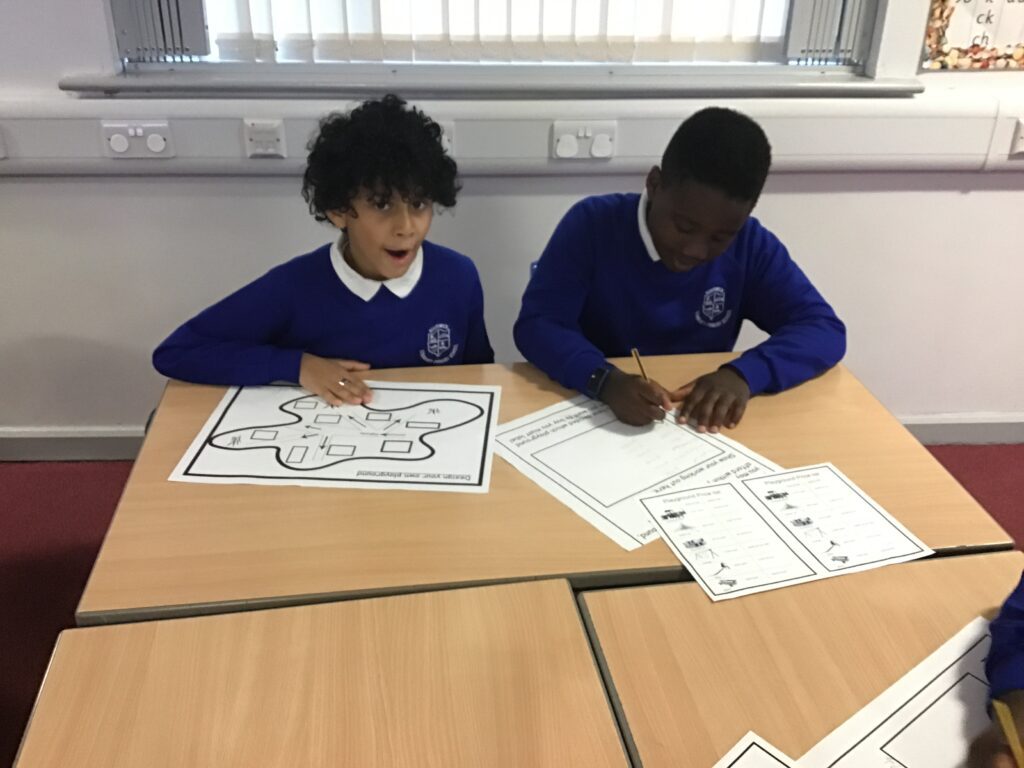
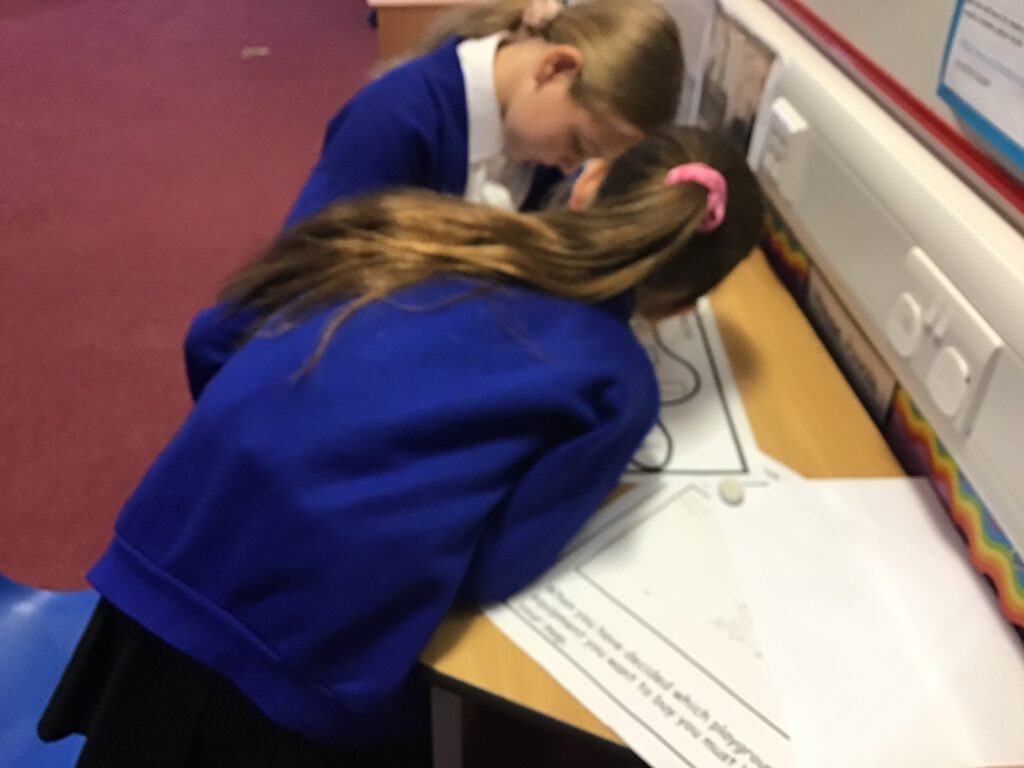
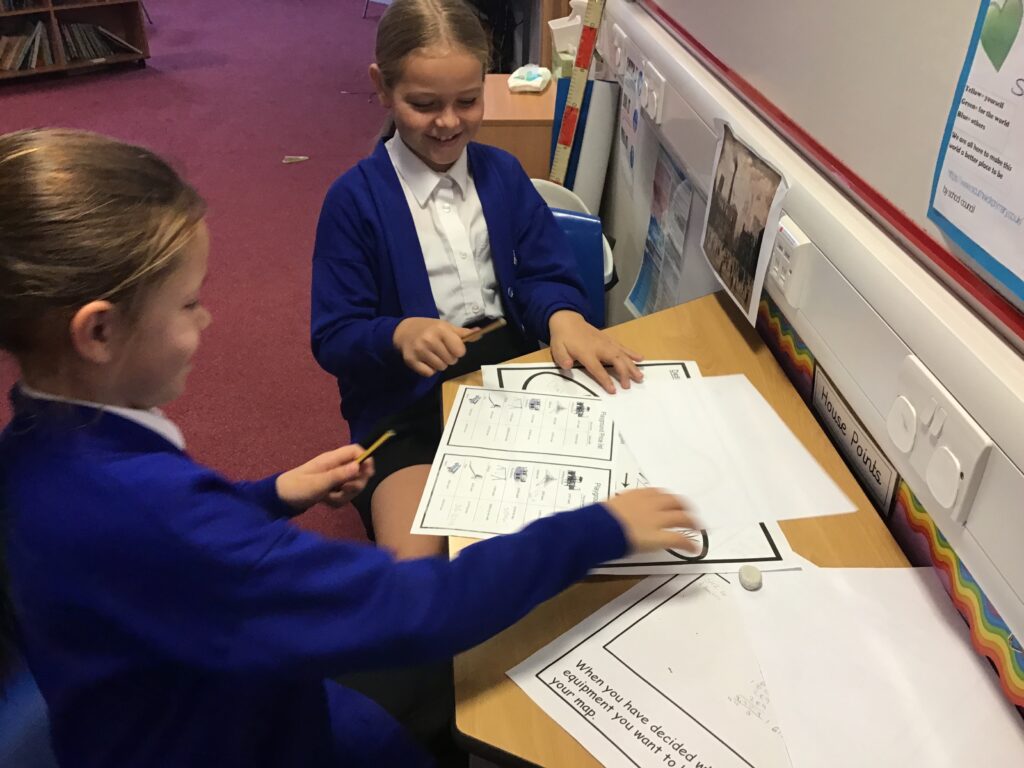
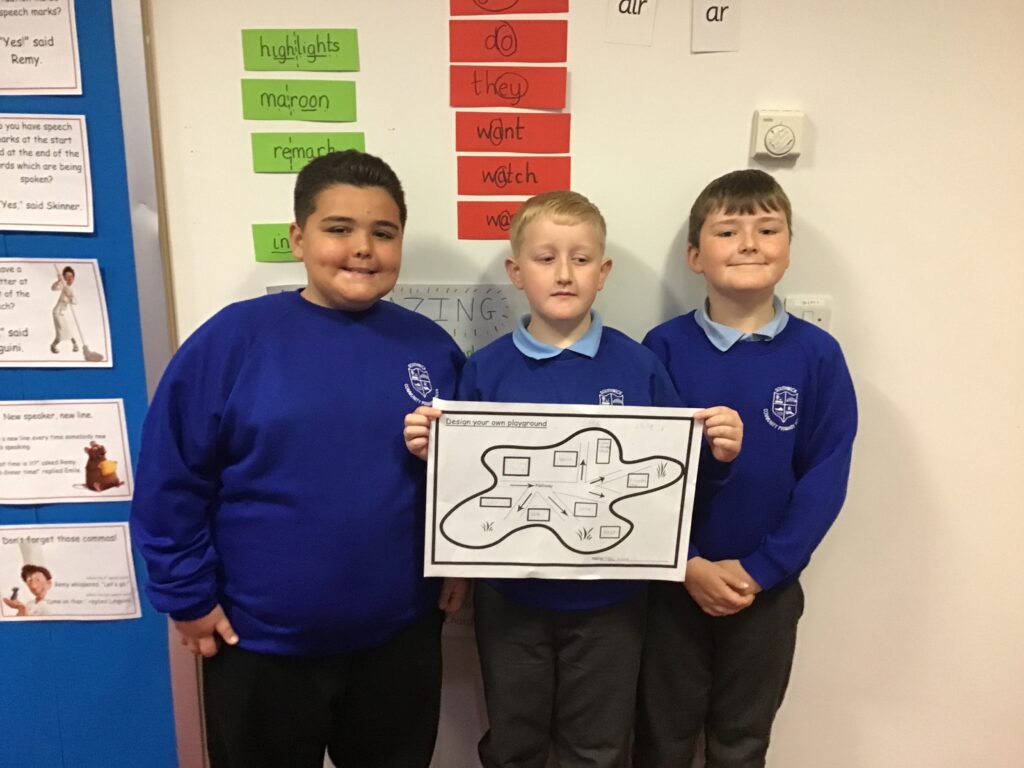
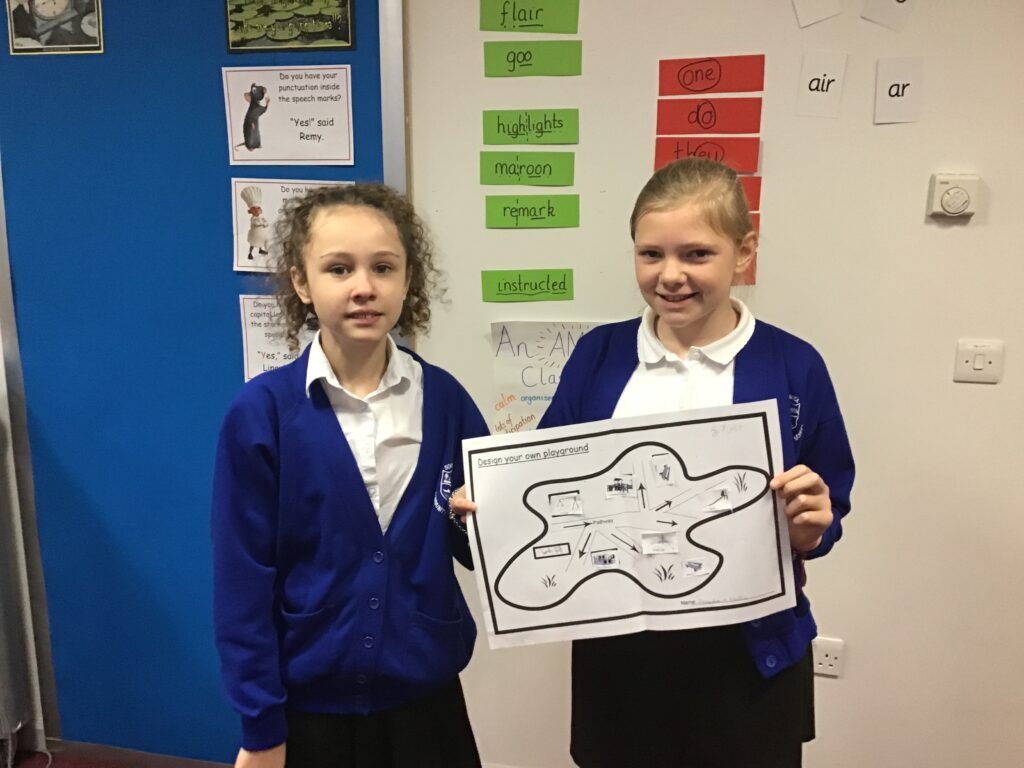
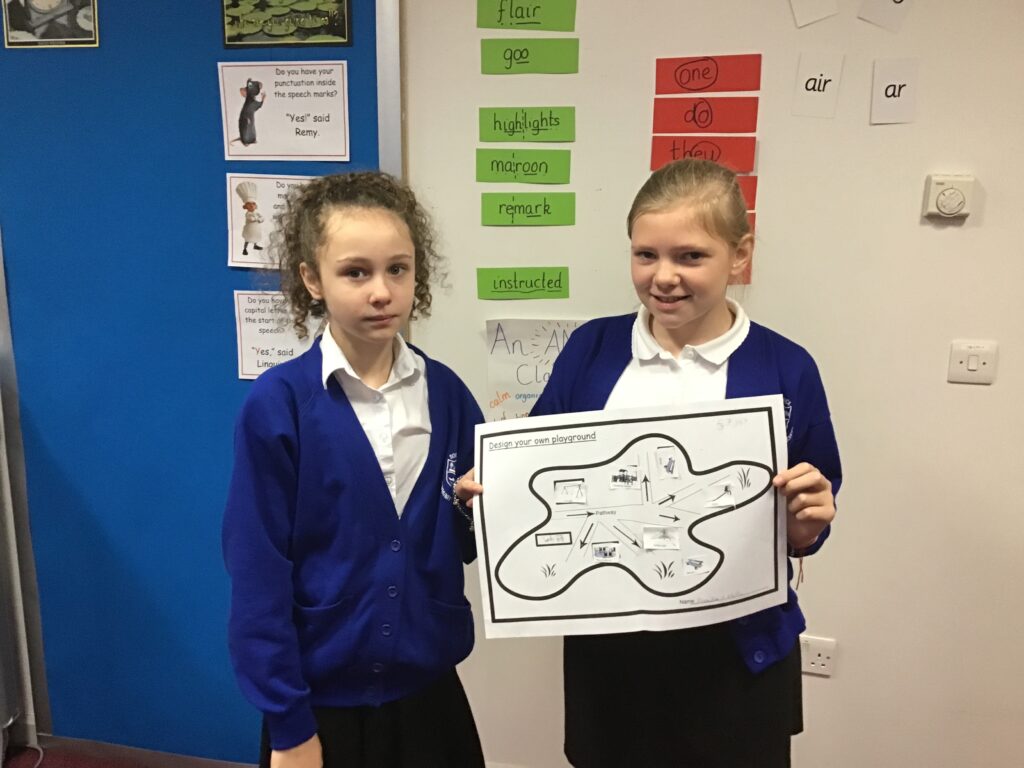
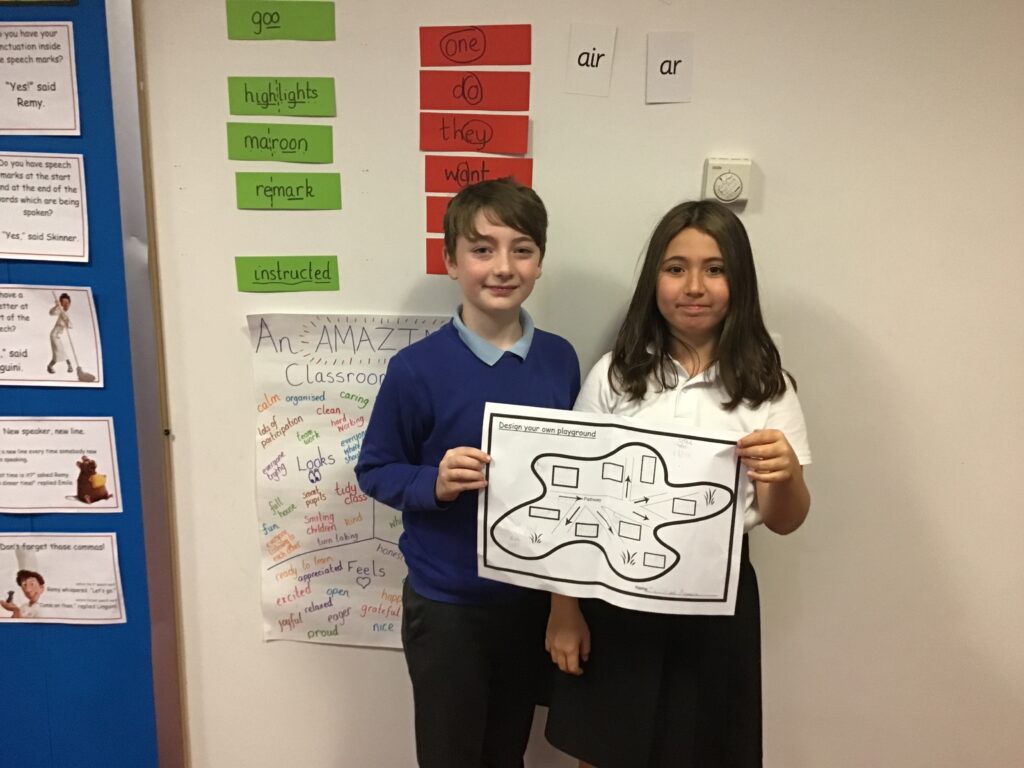
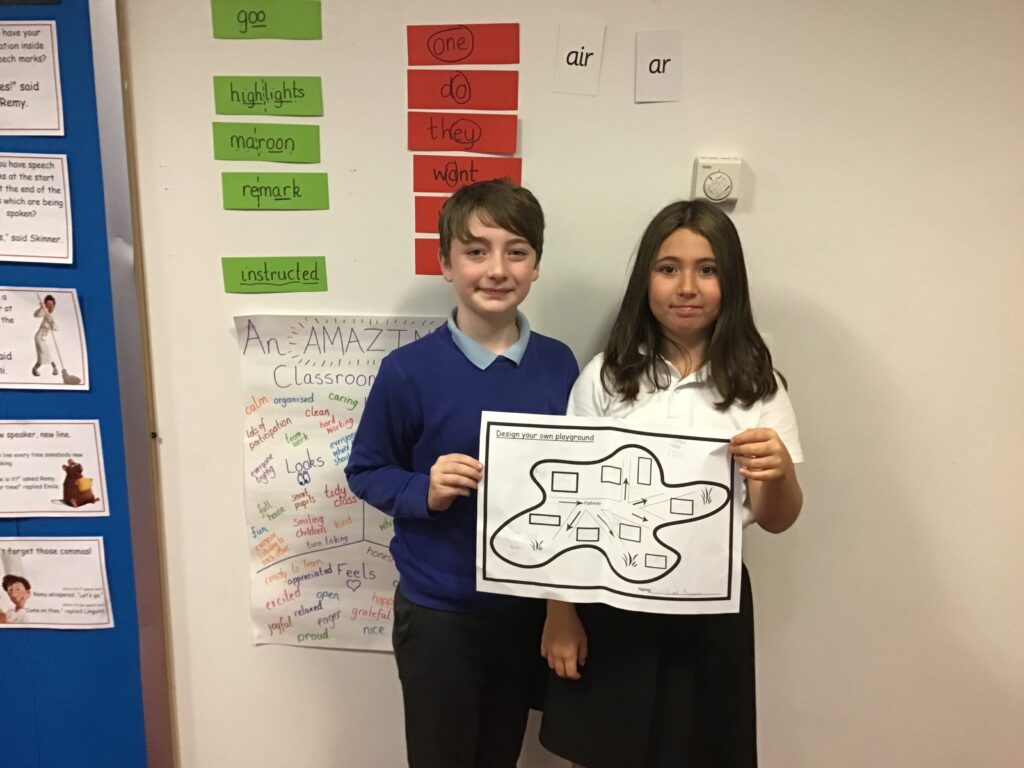
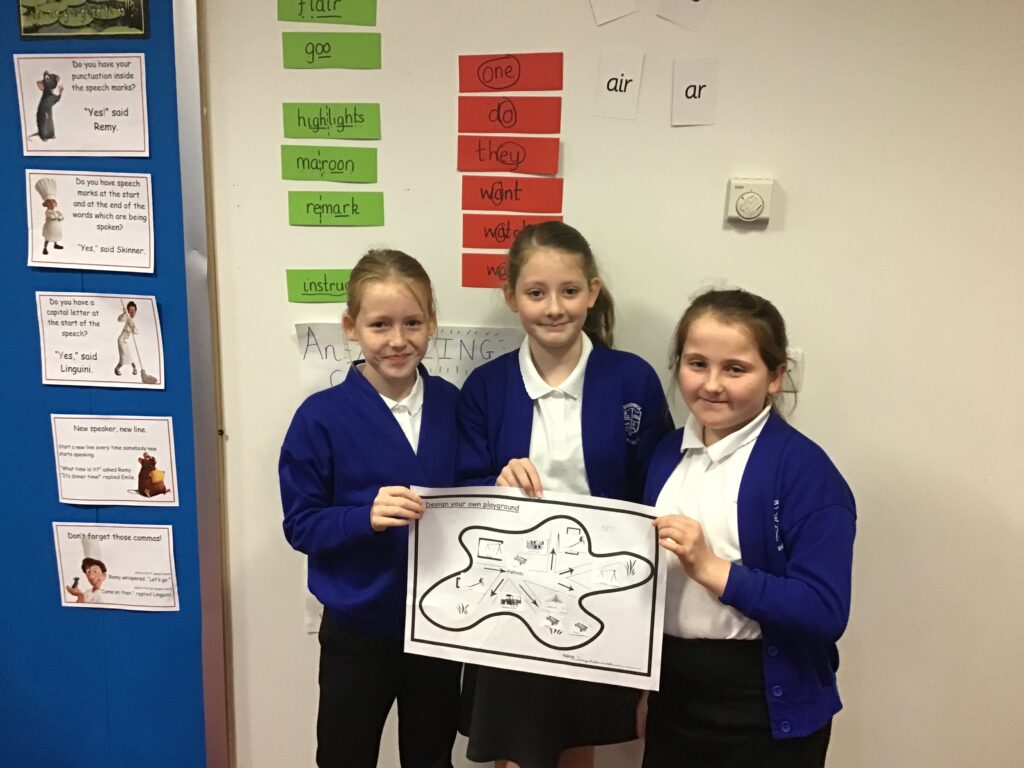
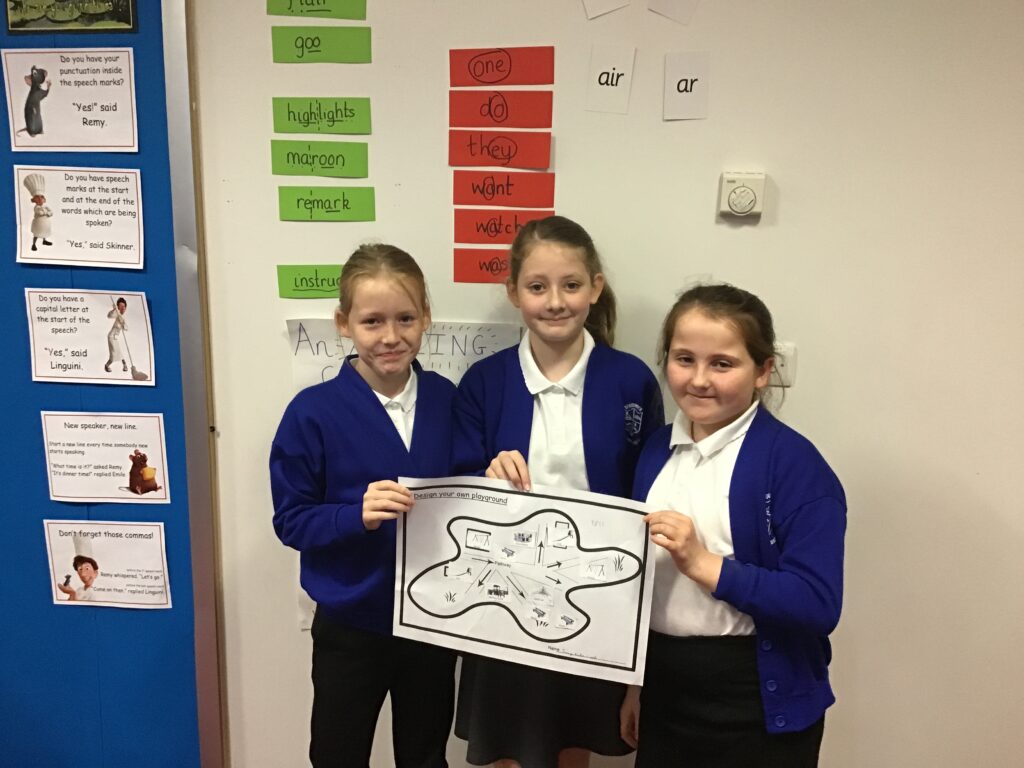
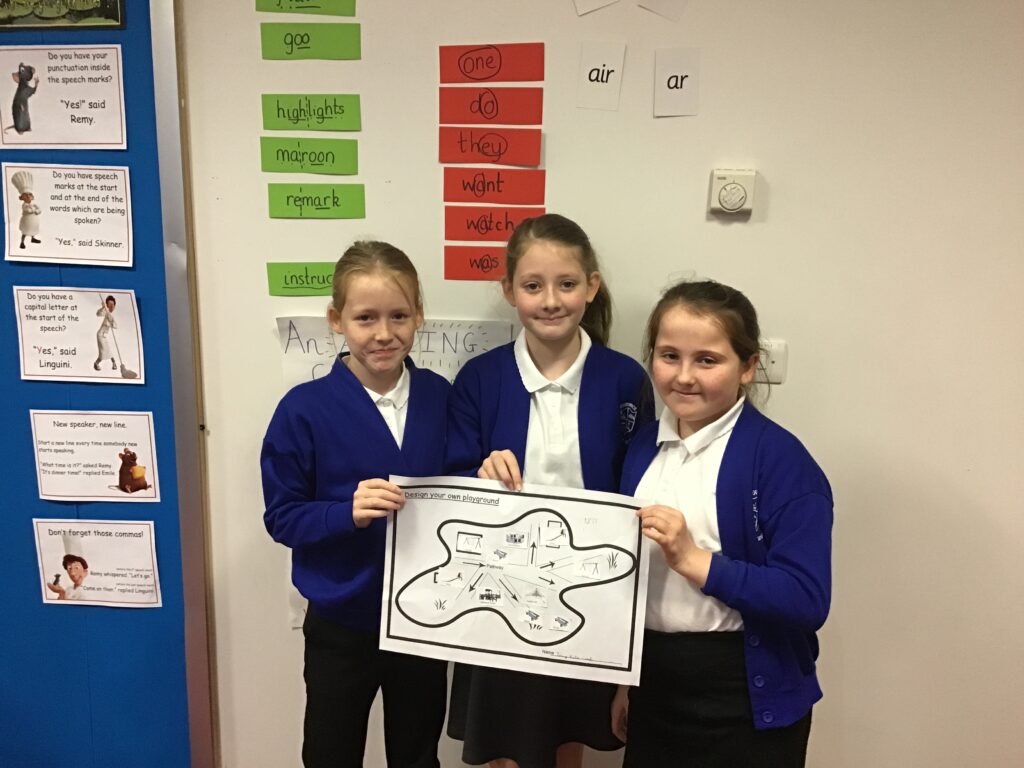
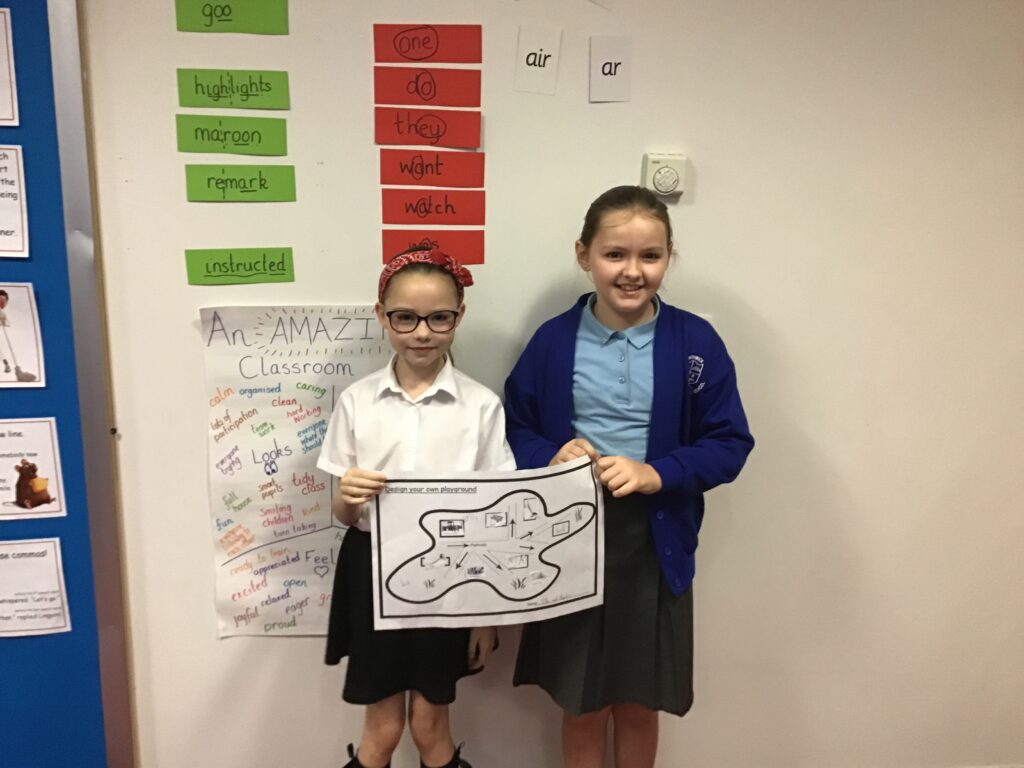
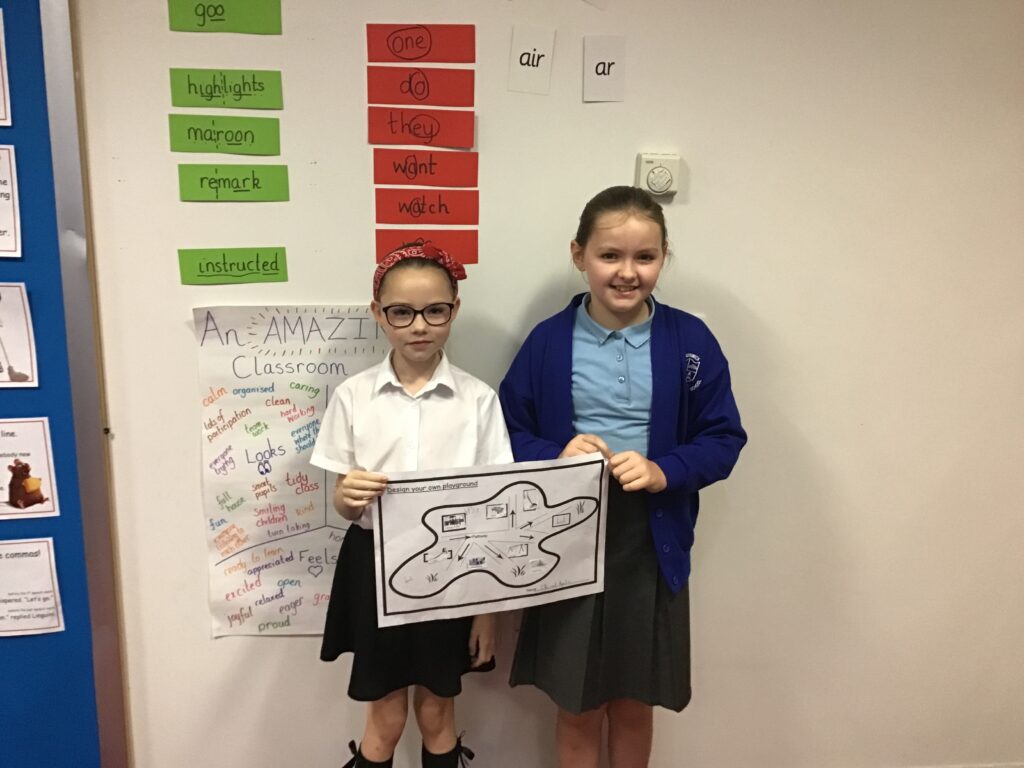
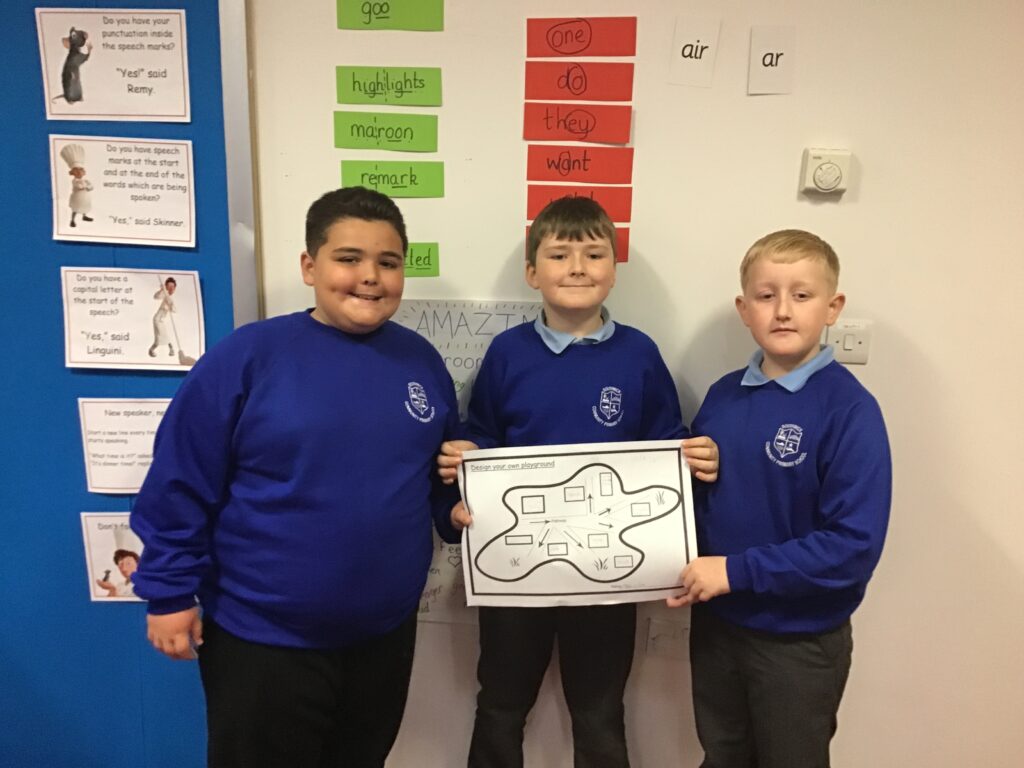
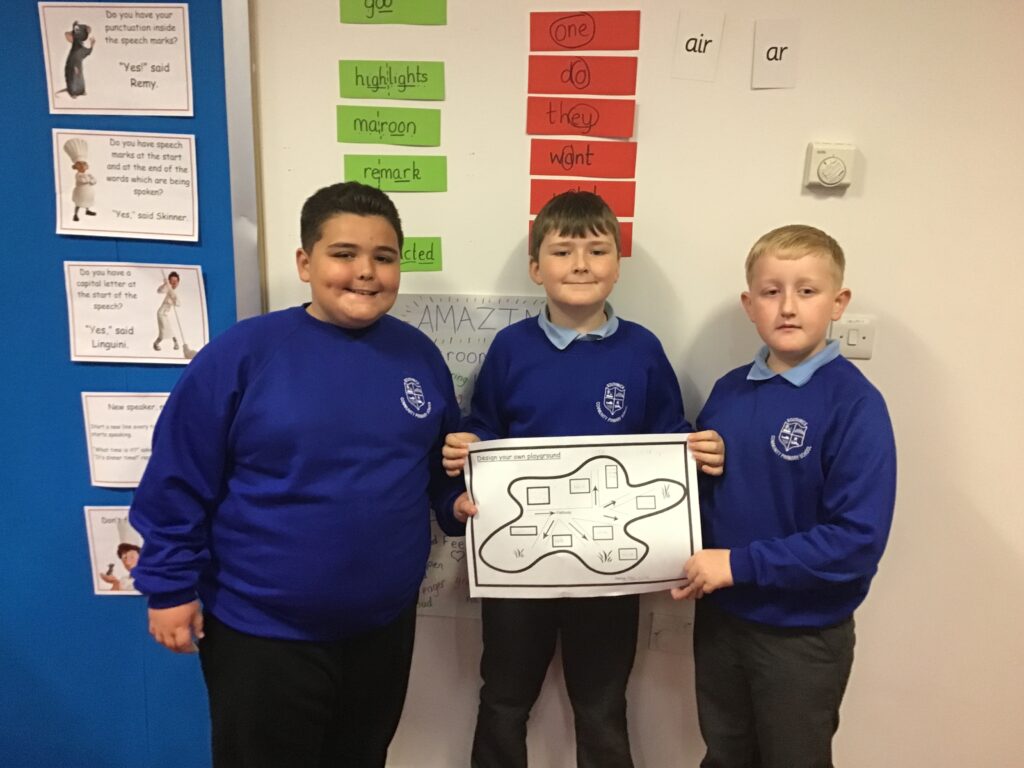
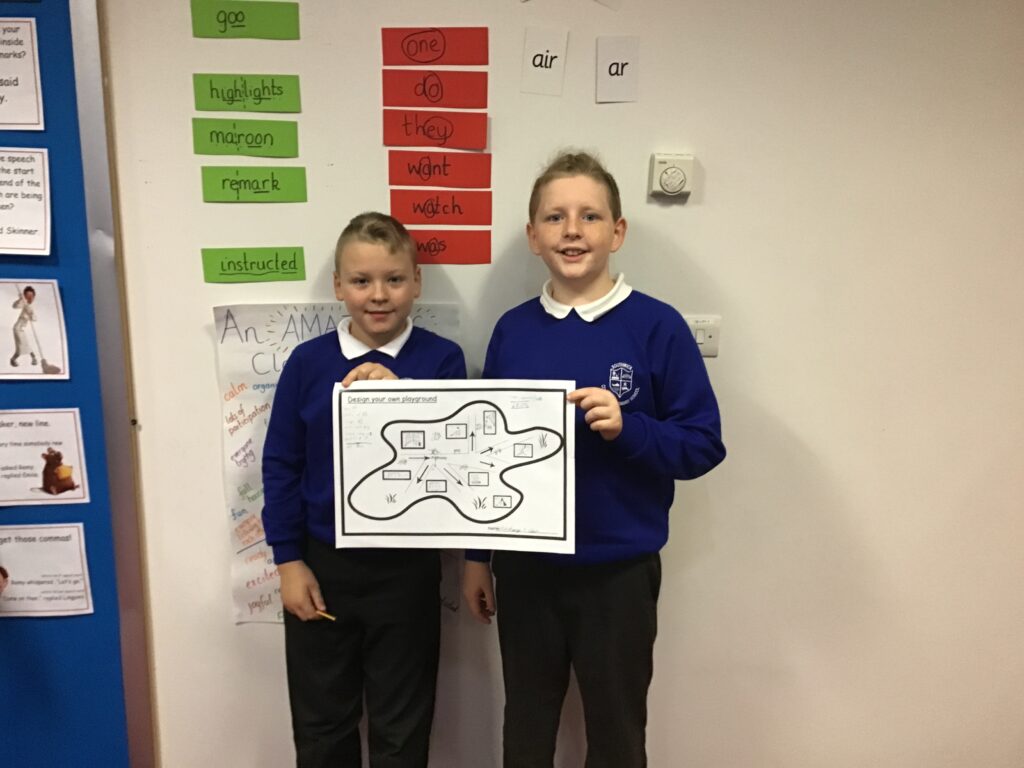
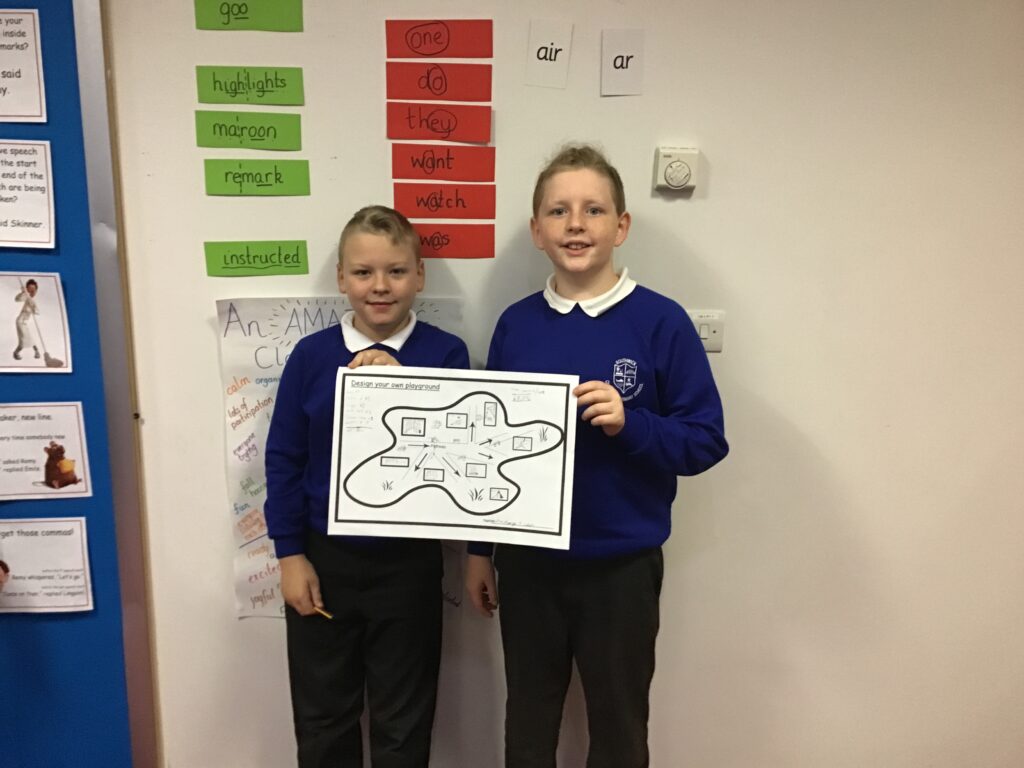
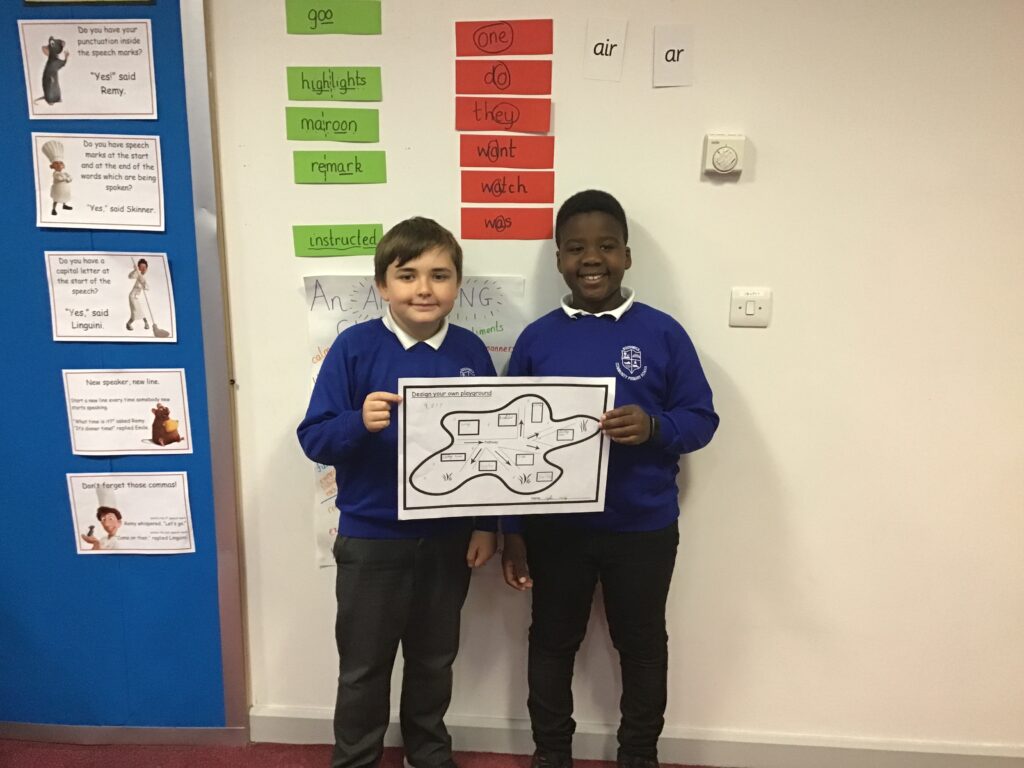
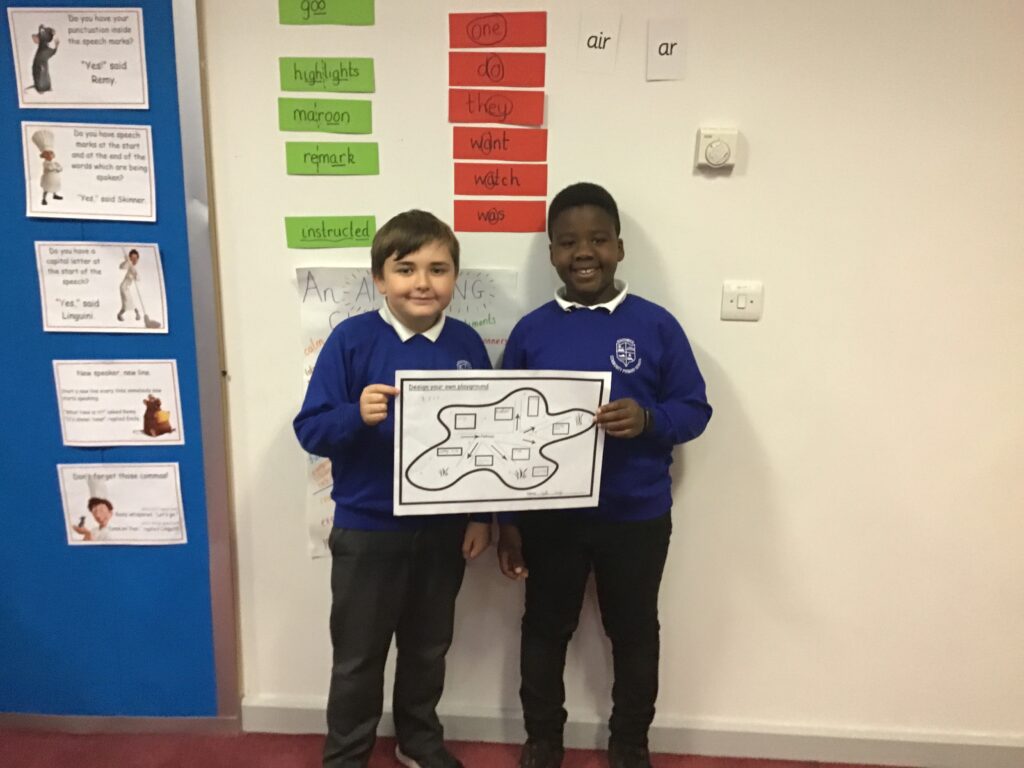
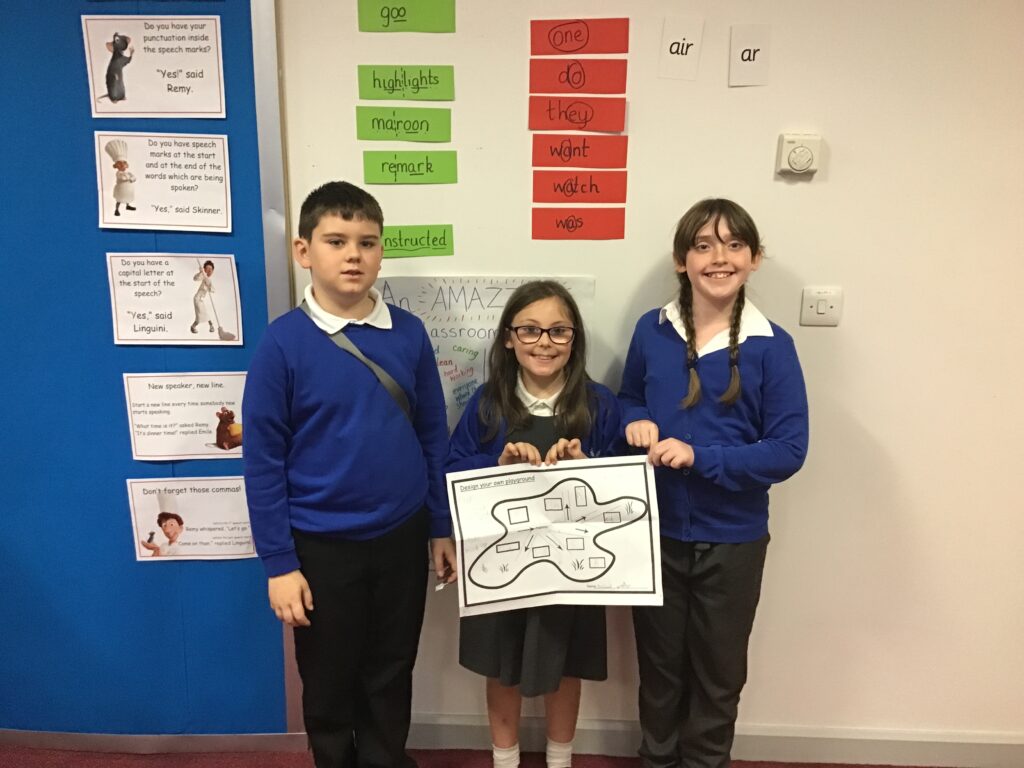
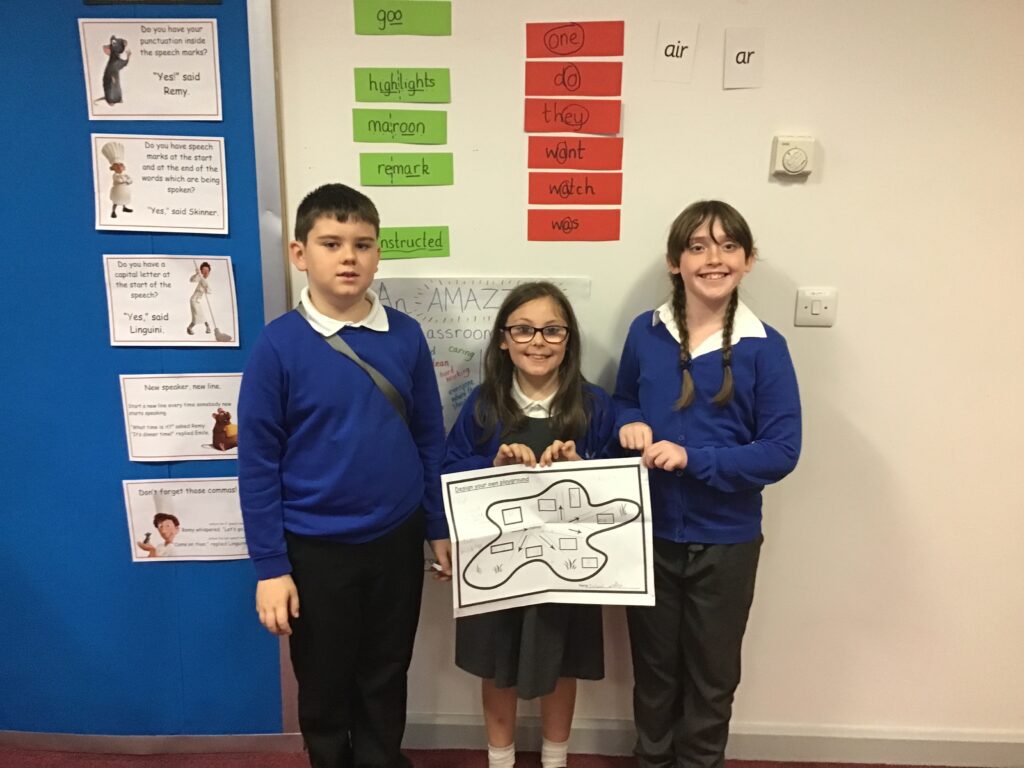
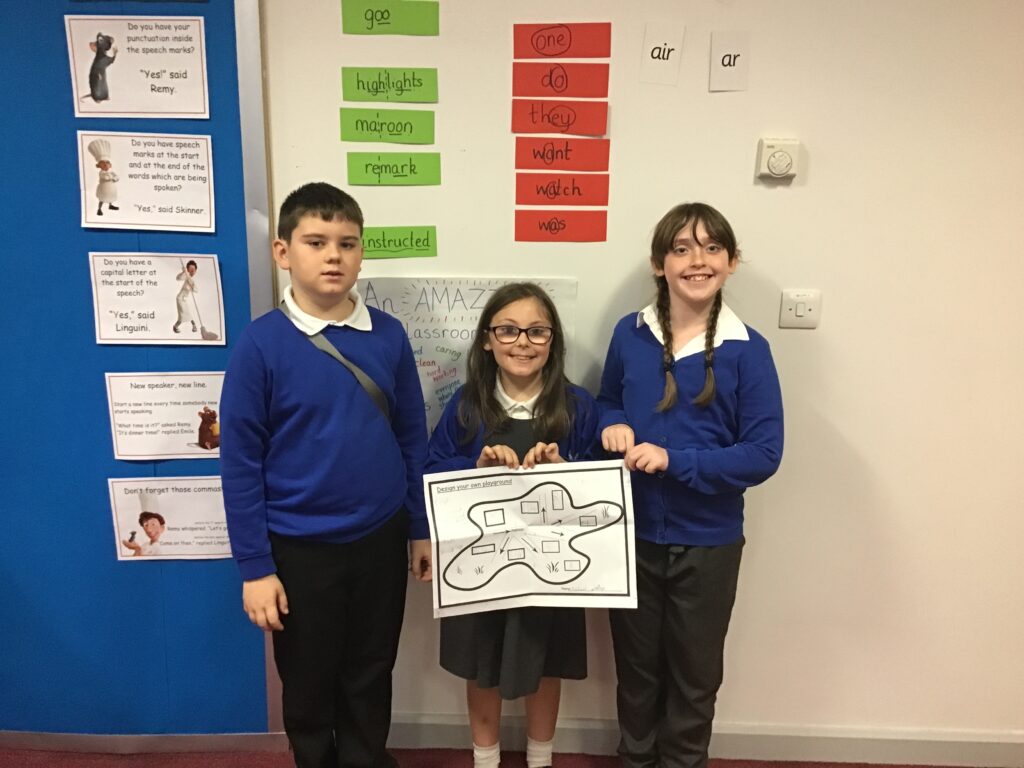
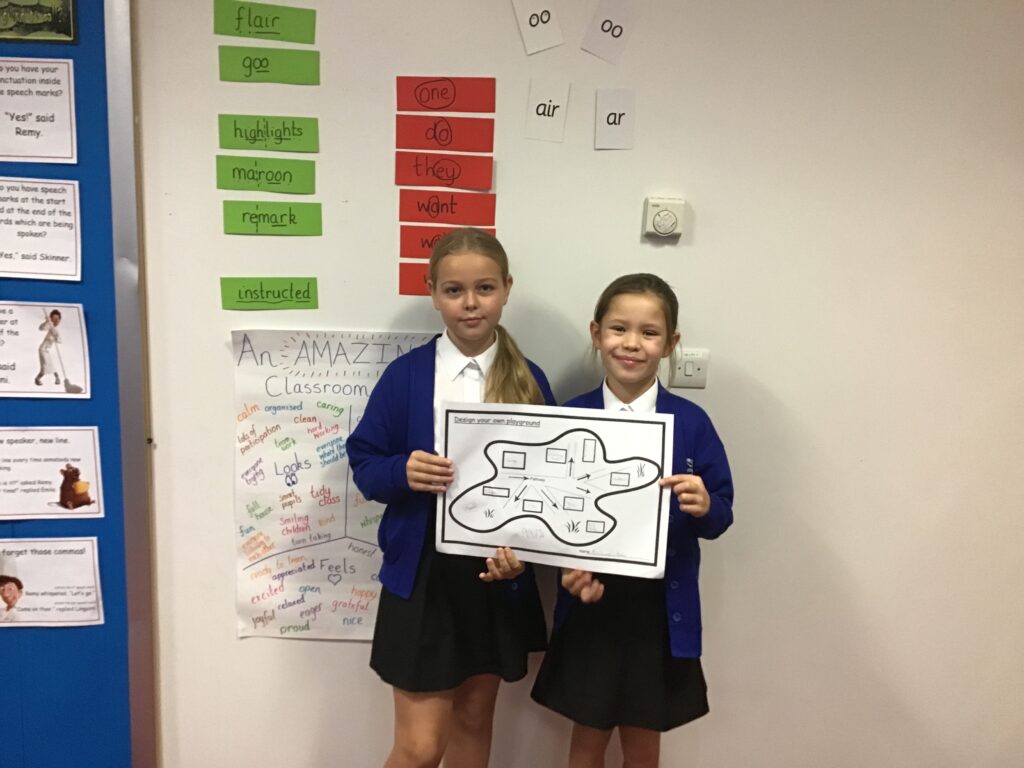
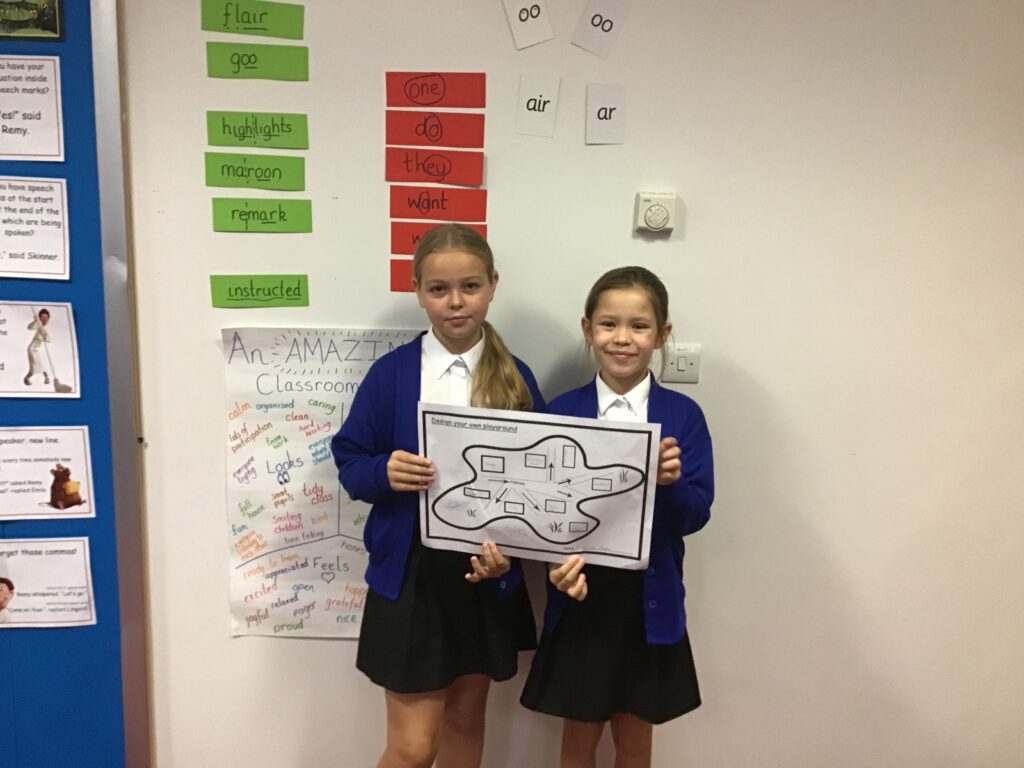
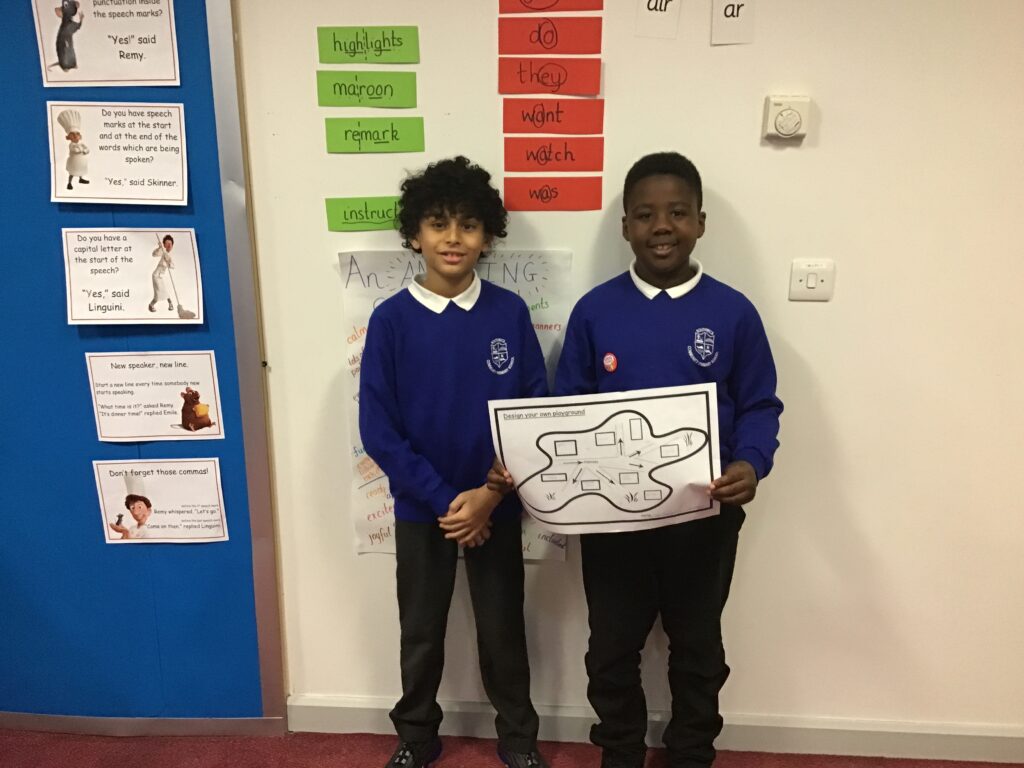
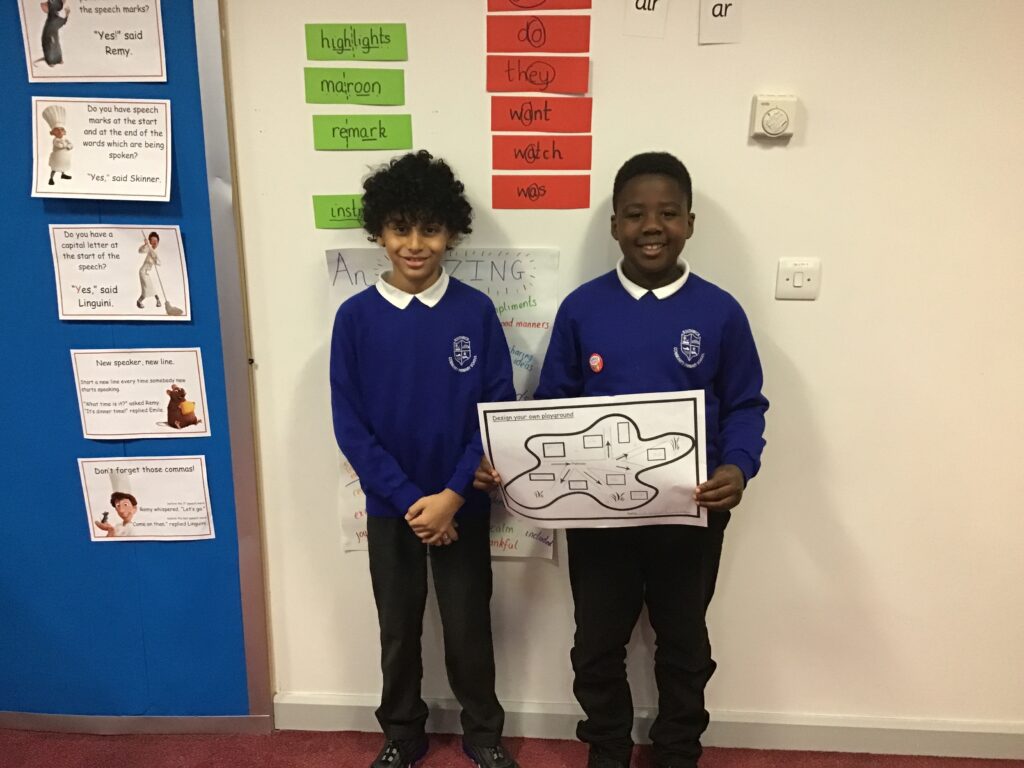
Year 6
Today we were
given a budget of £30 to spend on food, toys, blankets and other supplies to
buy for a pet, linking to our harvest festival focus giving, supporting
Bryson’s animal shelter.
We used iPads to go onto a supermarket website to find the items we wanted to
buy. Throughout the lesson we used addition and subtraction to work out how
much money we were spending and how much money we had left over. Our challenge
was to see if we could spend £30 exactly!
We talked
about how important budgeting is in the real world and that when we are older
and going shopping ourselves we need to make sure we know how much we are
spending and that we have enough money to buy the items we are wanting.
We then enjoyed completing a kahoot quiz to consolidate our understanding of
money.
